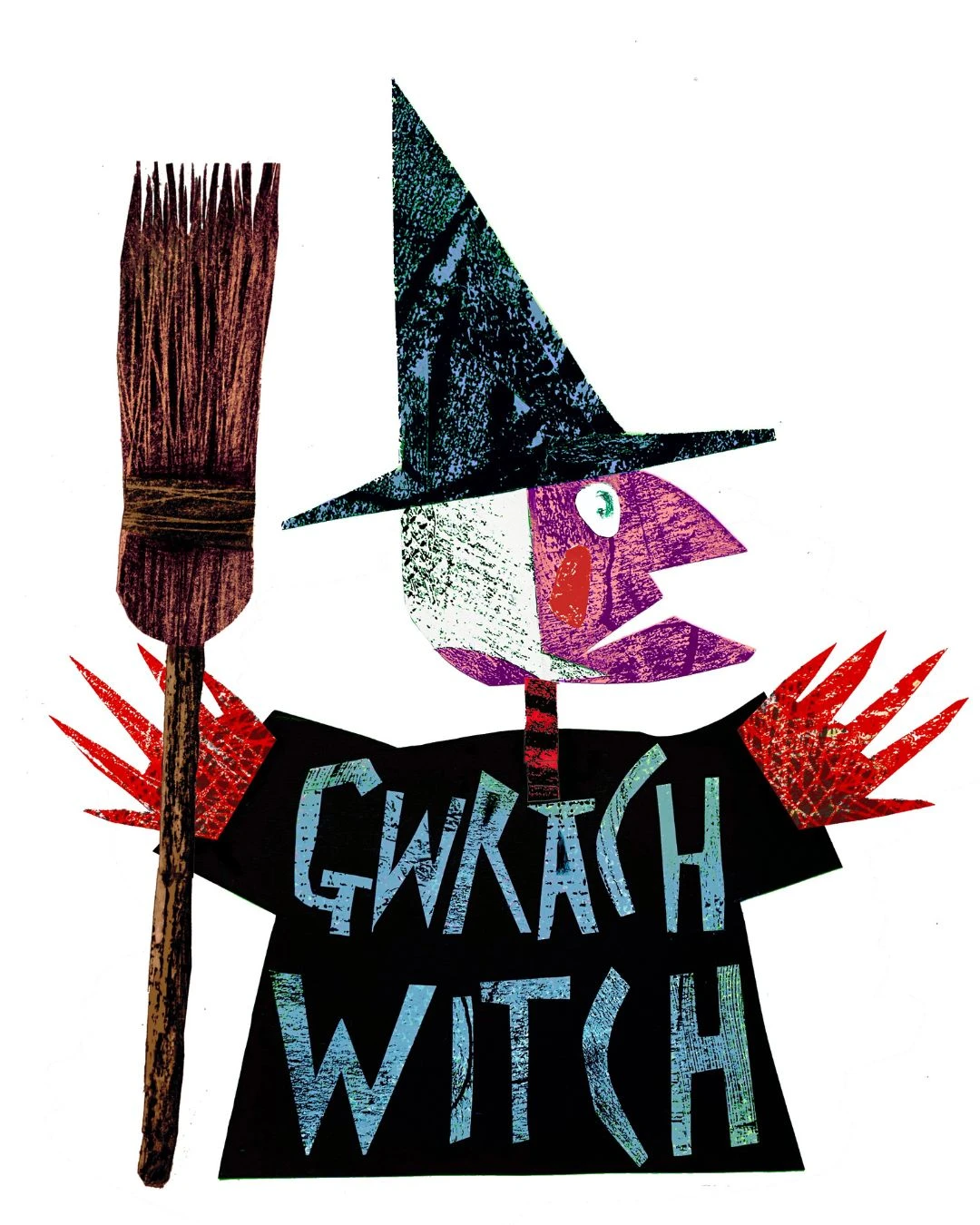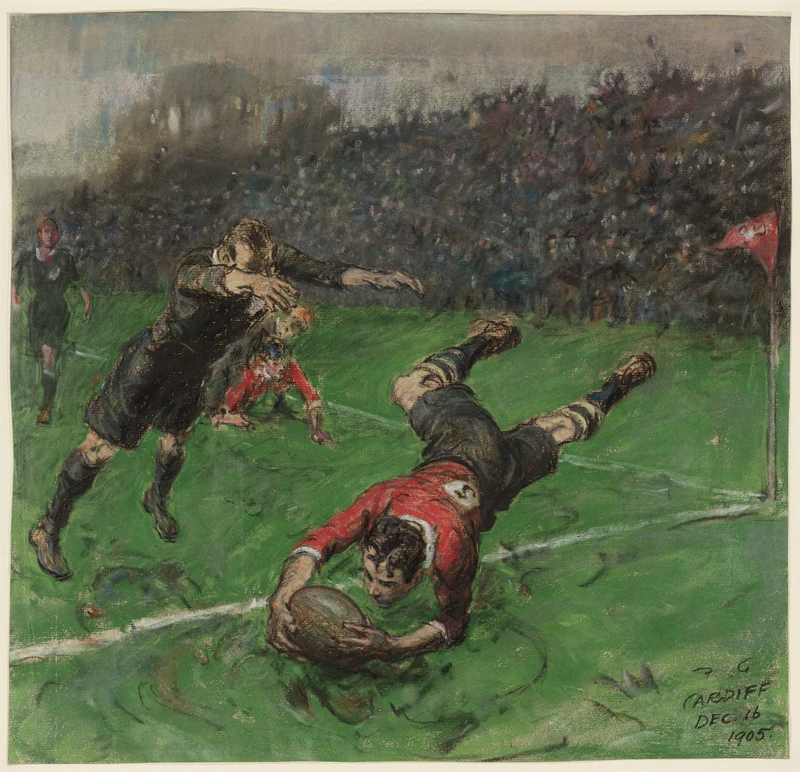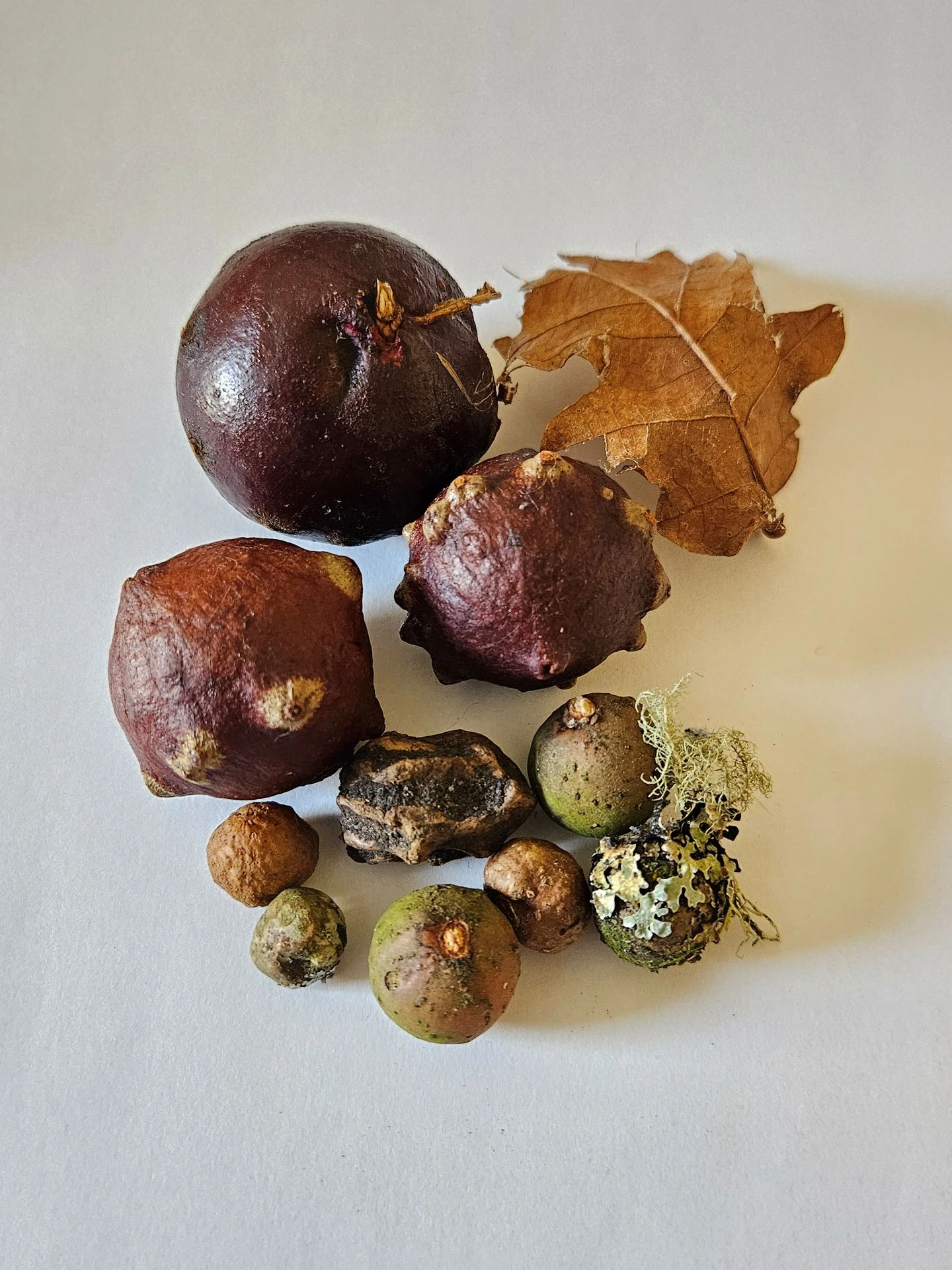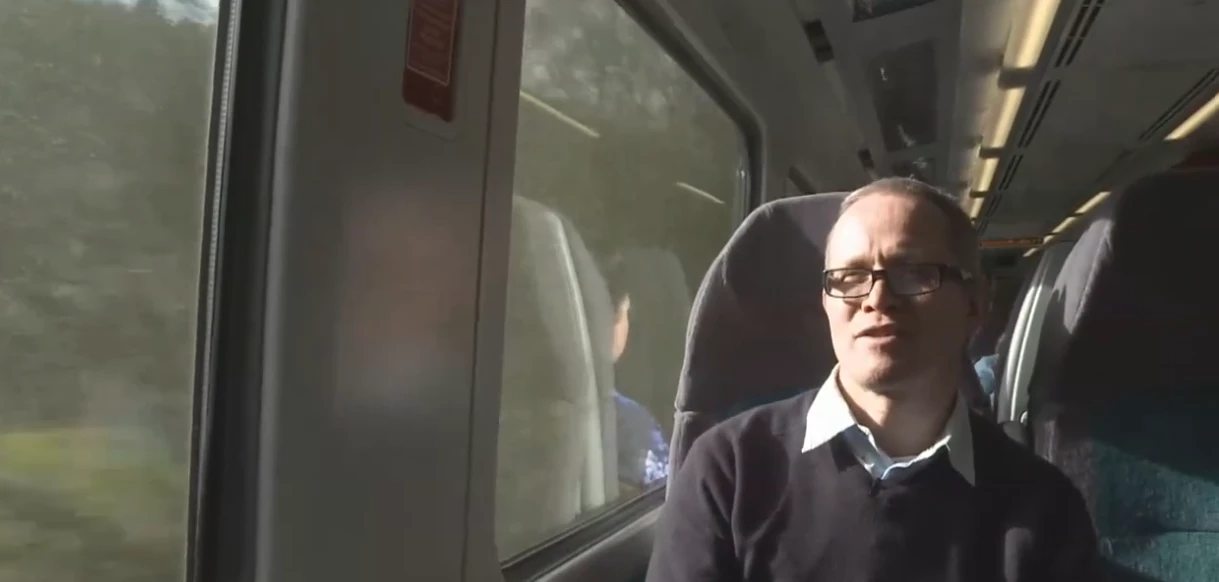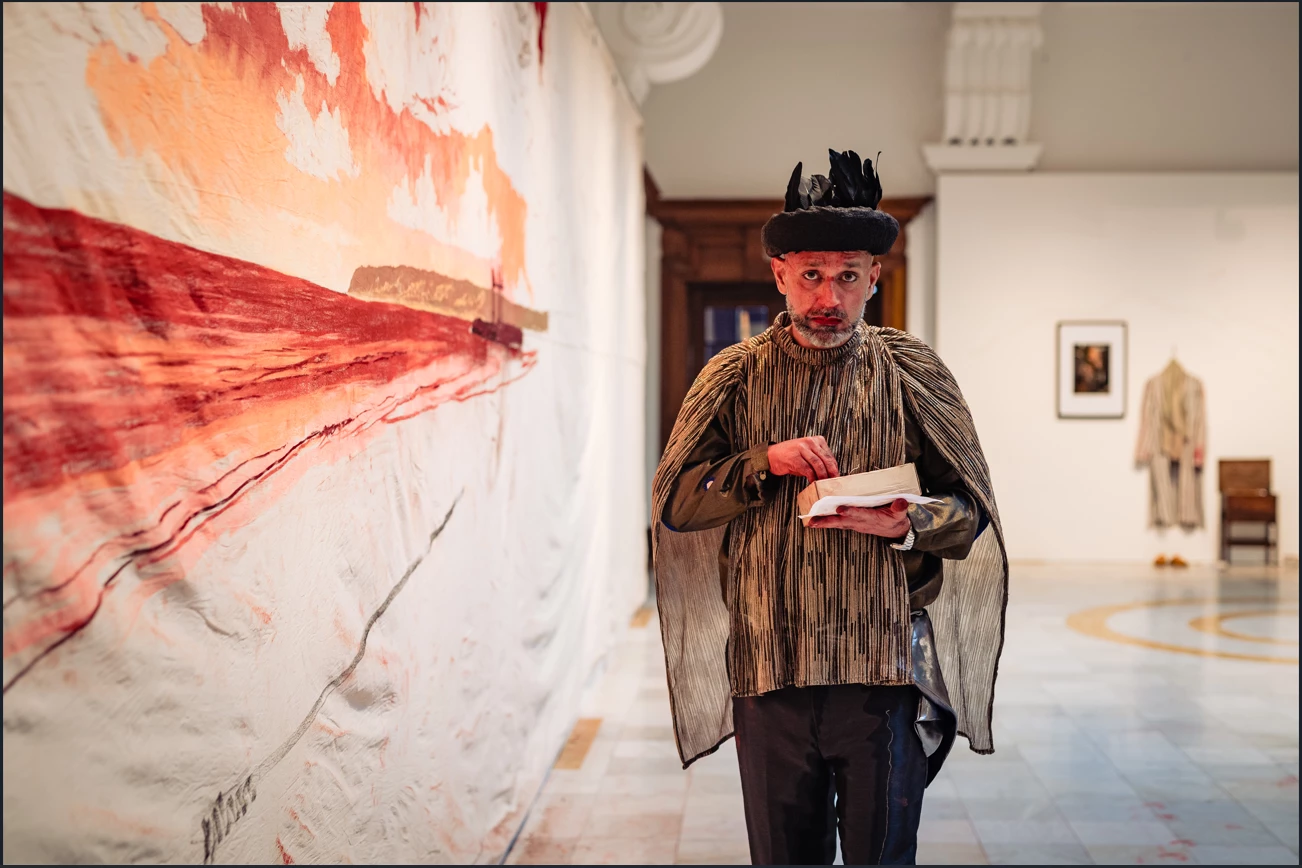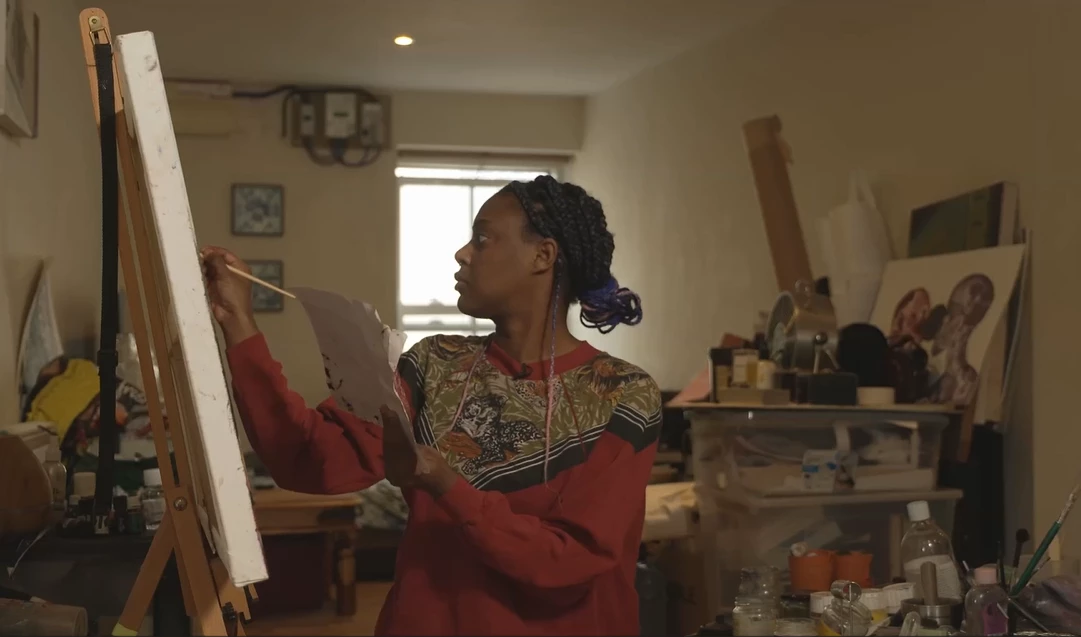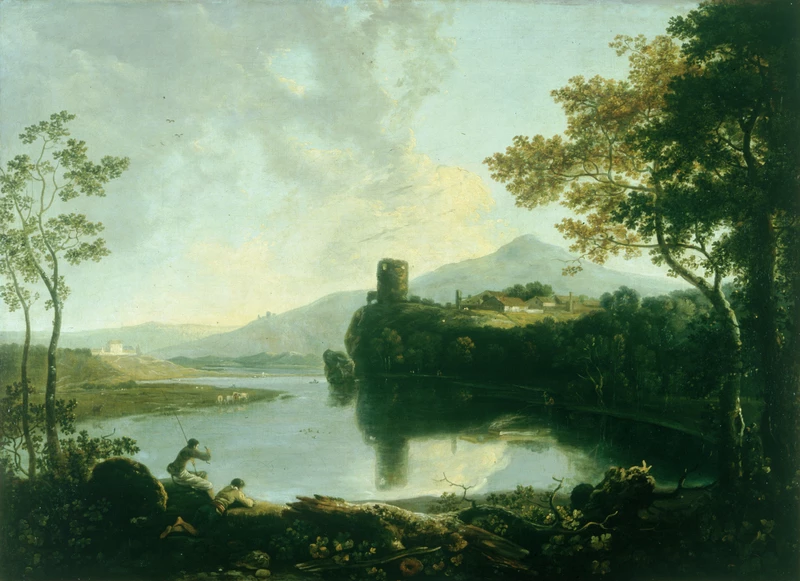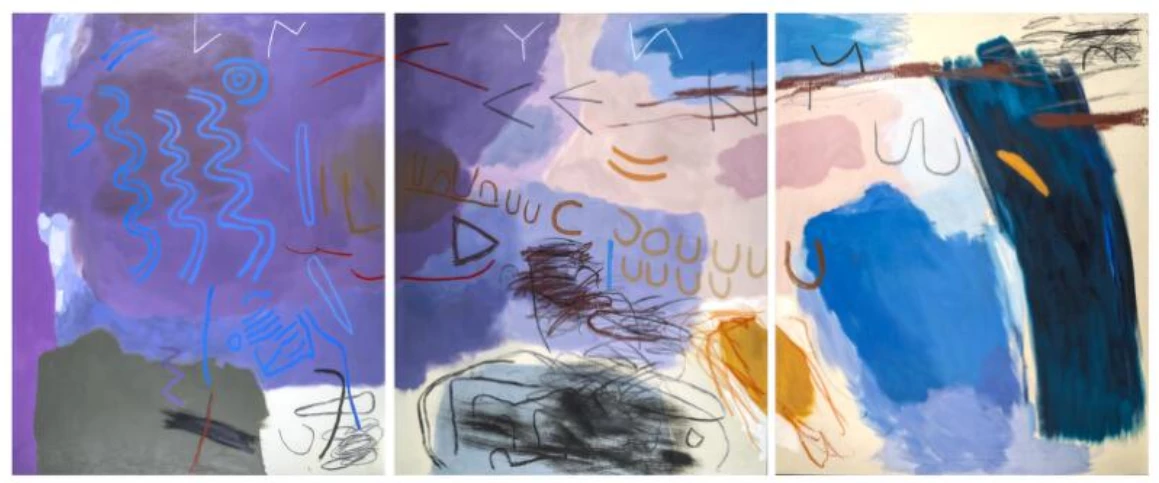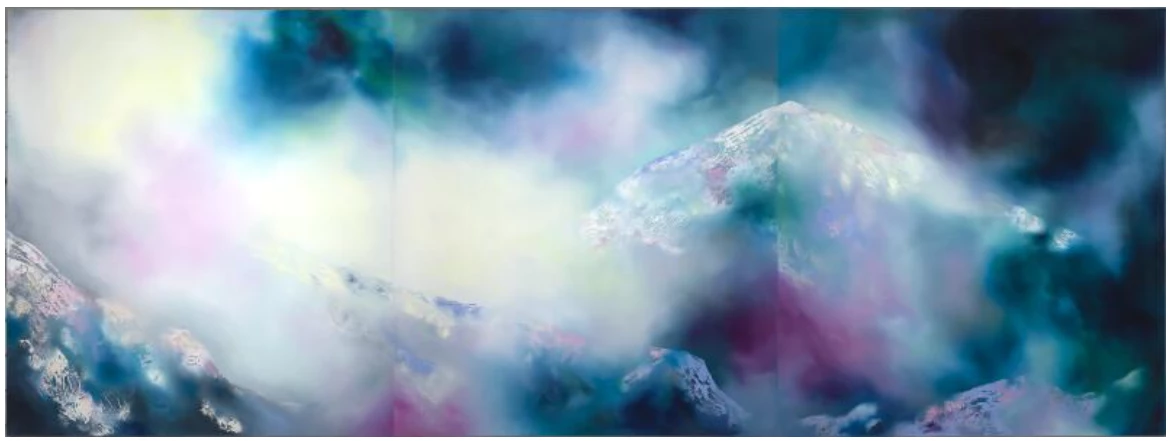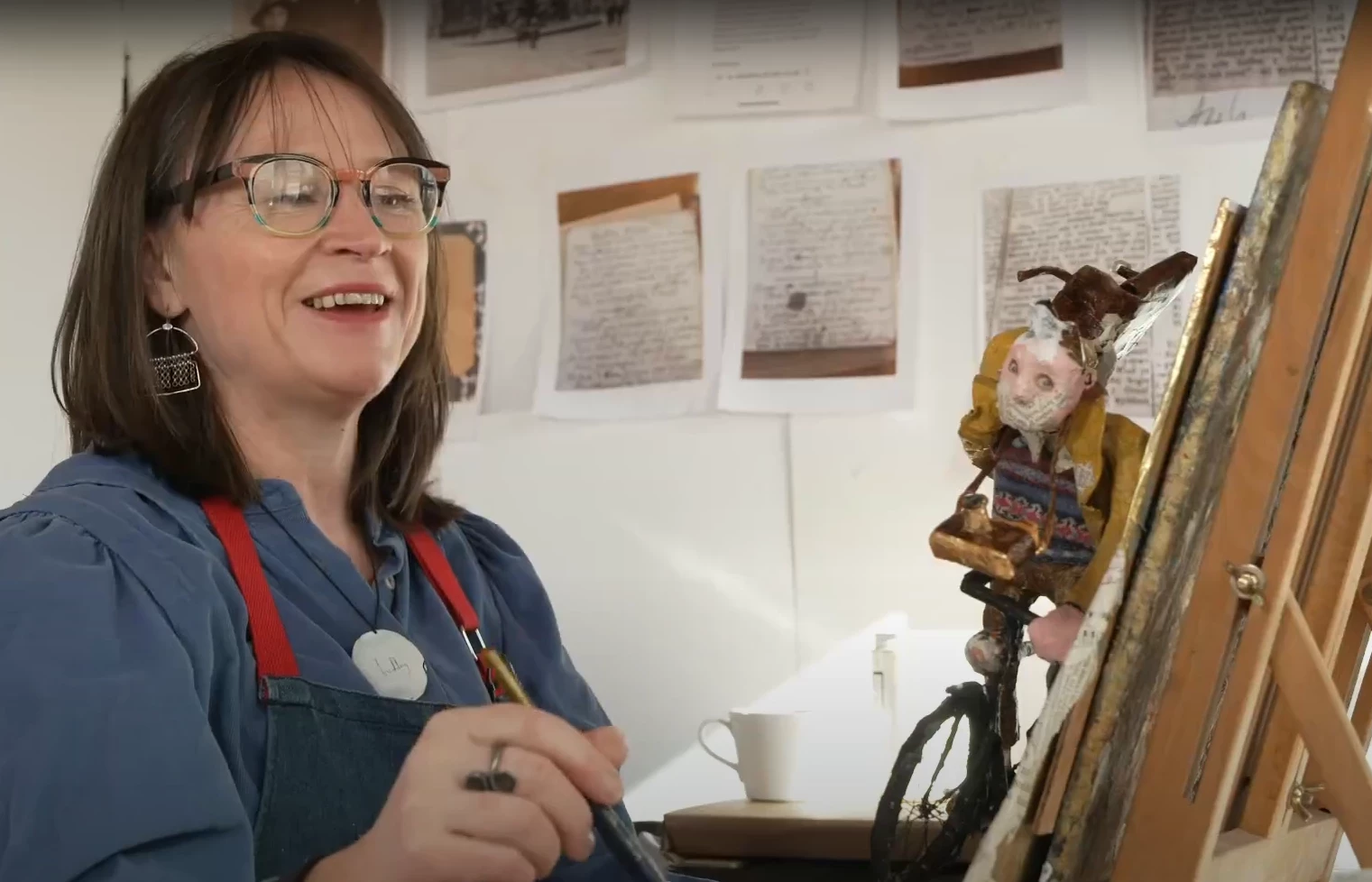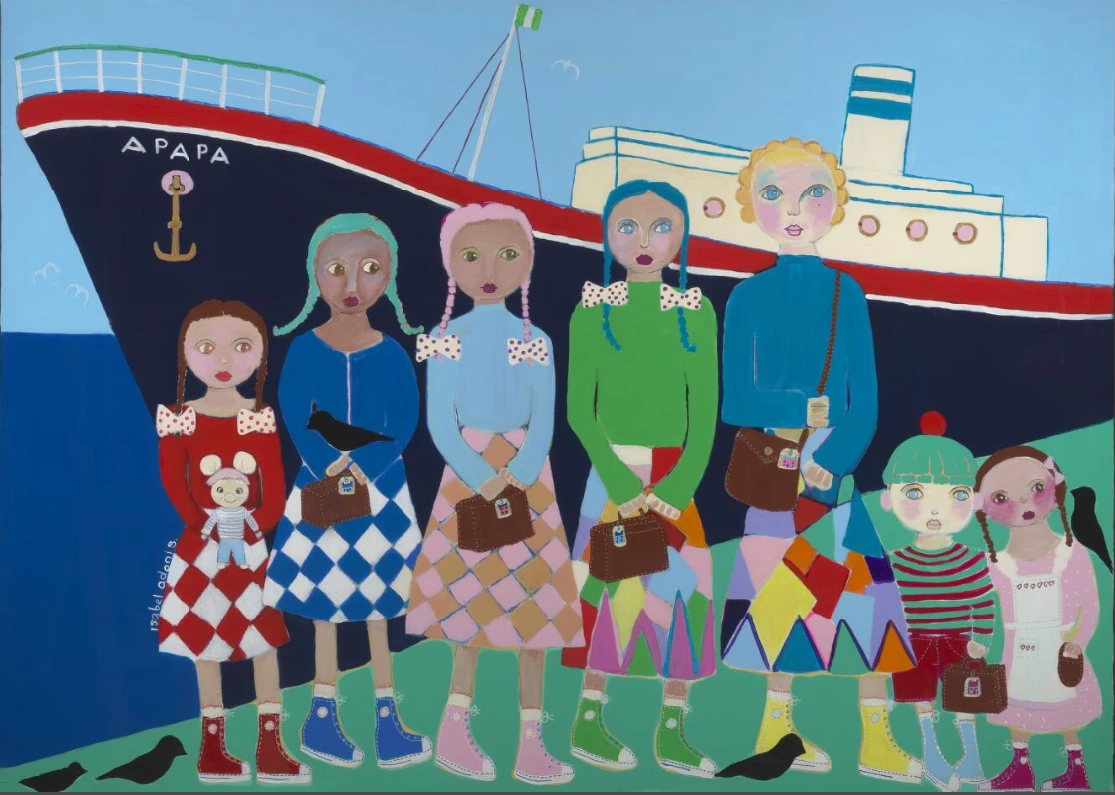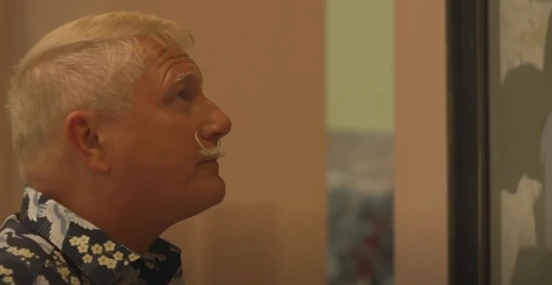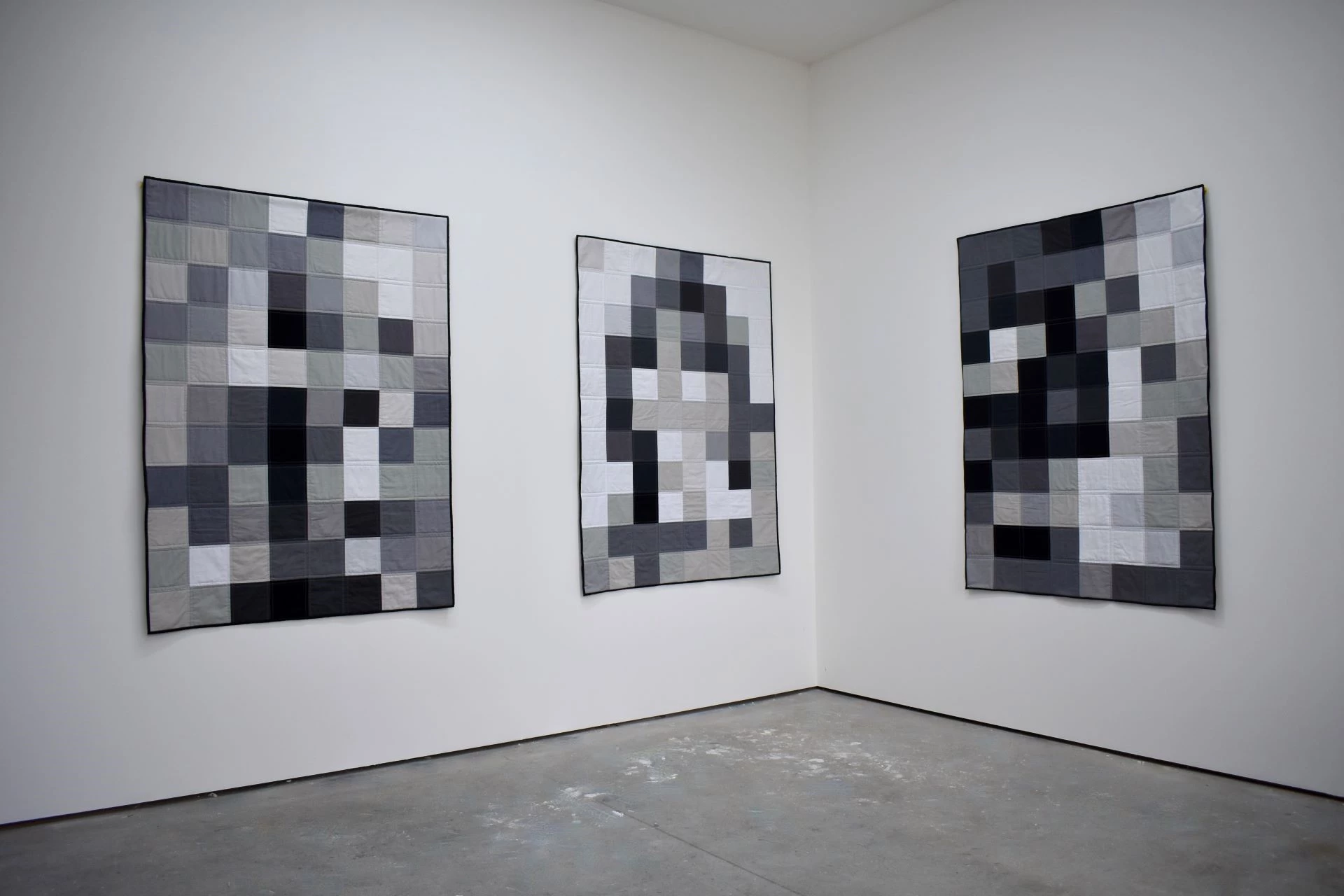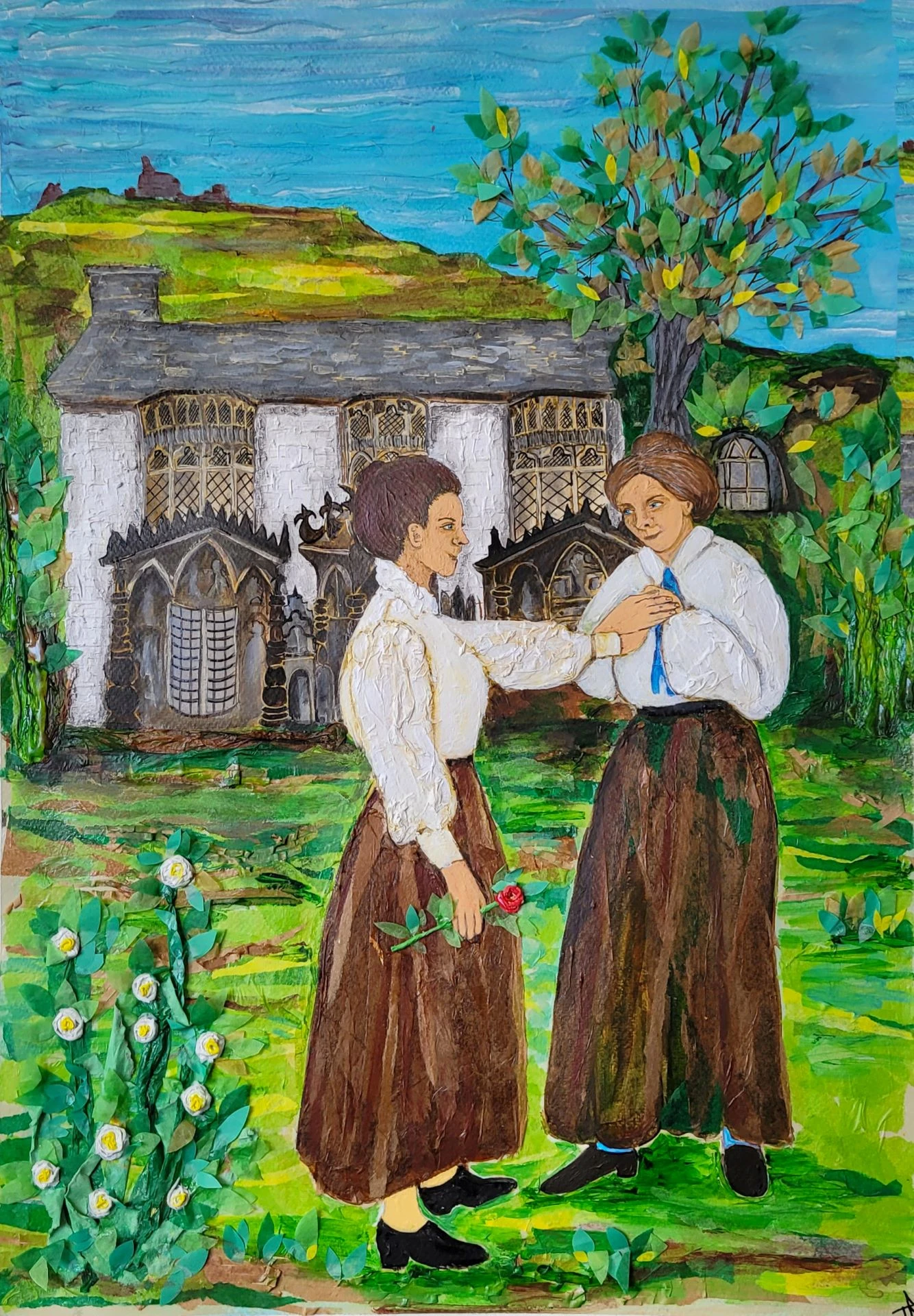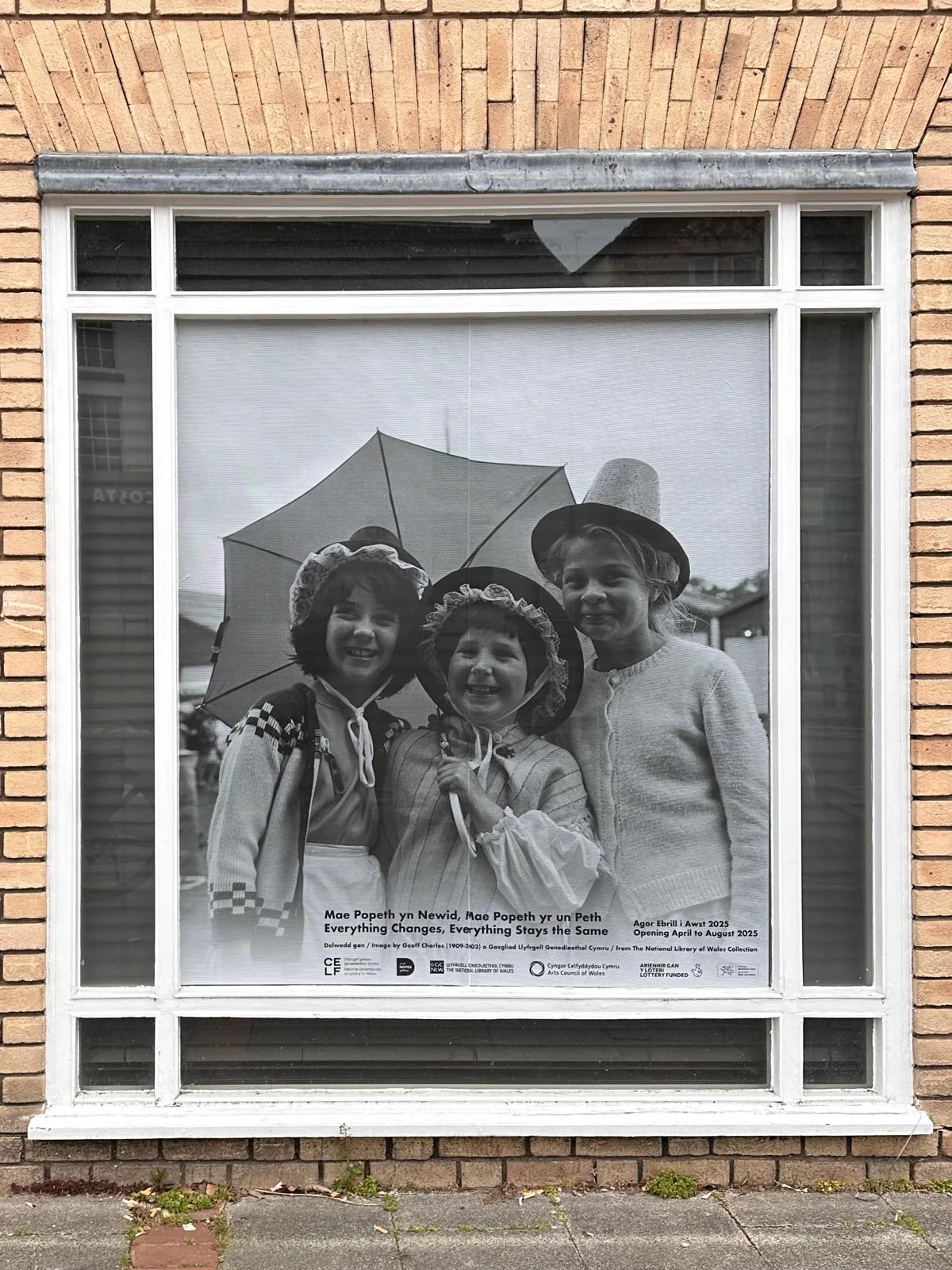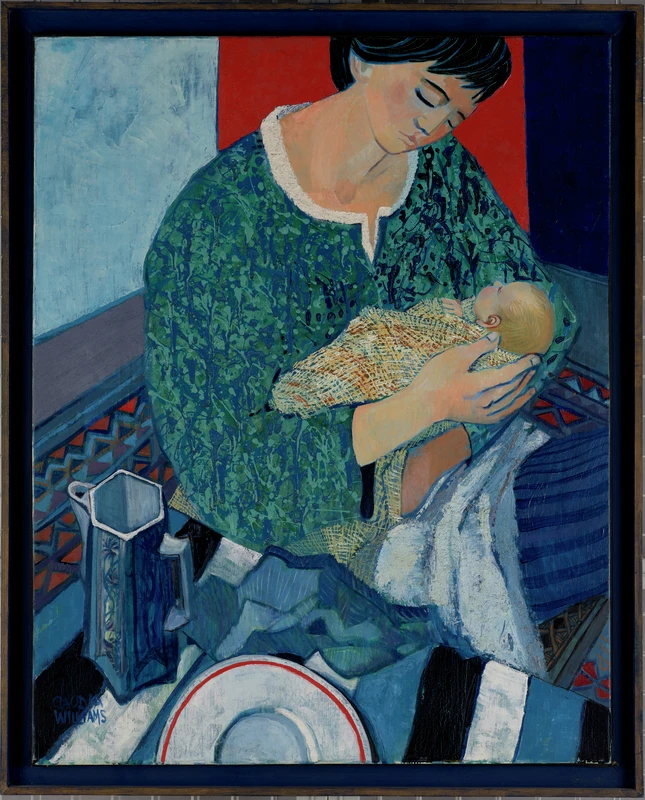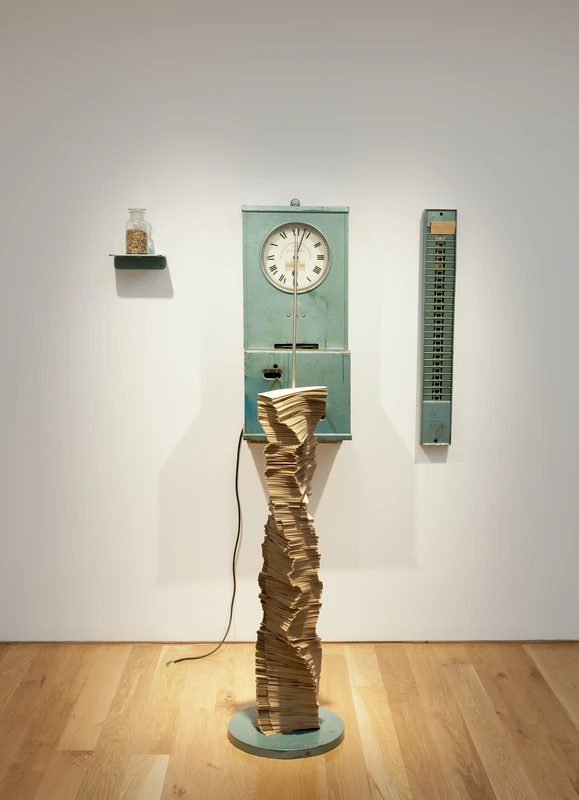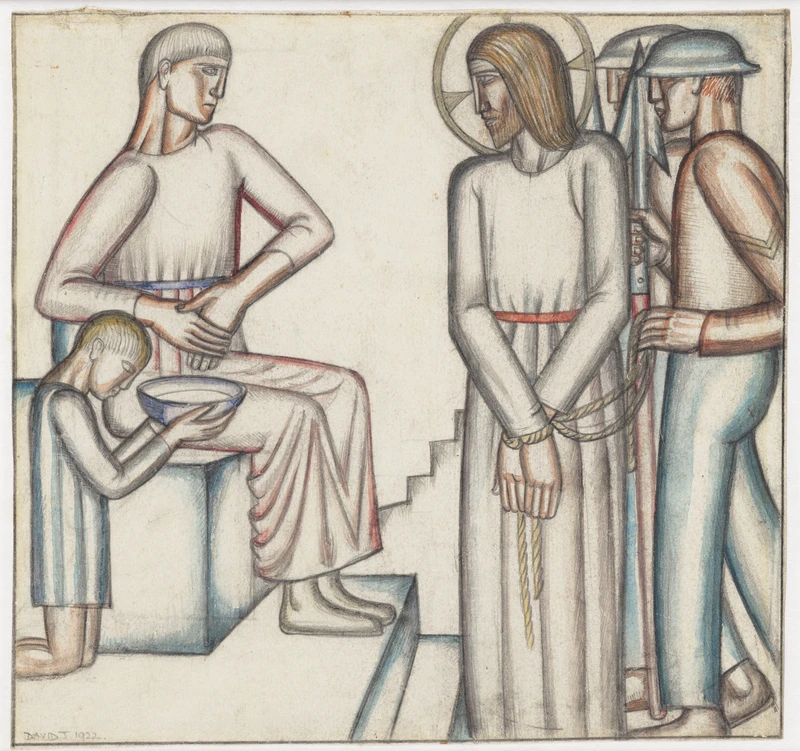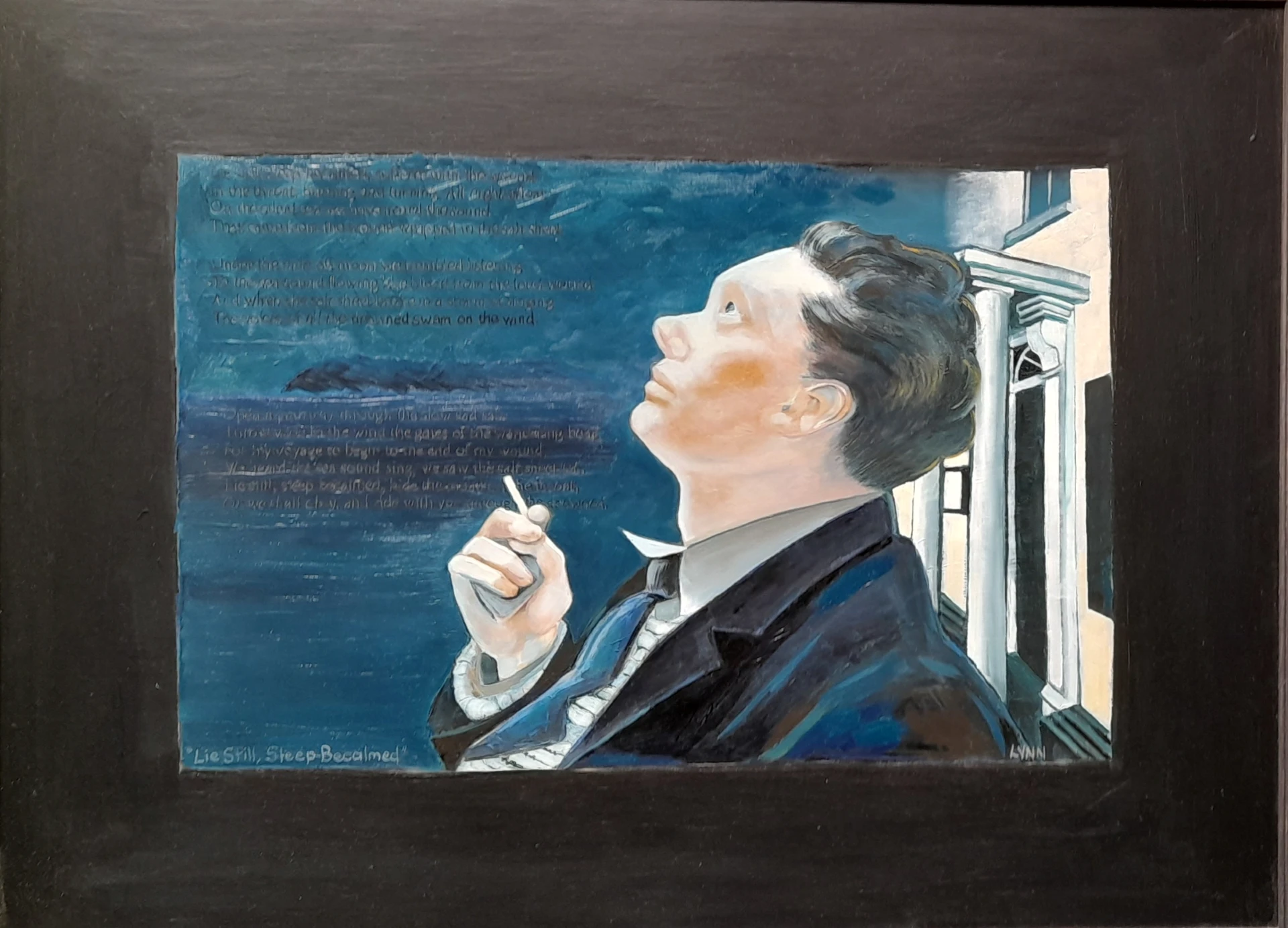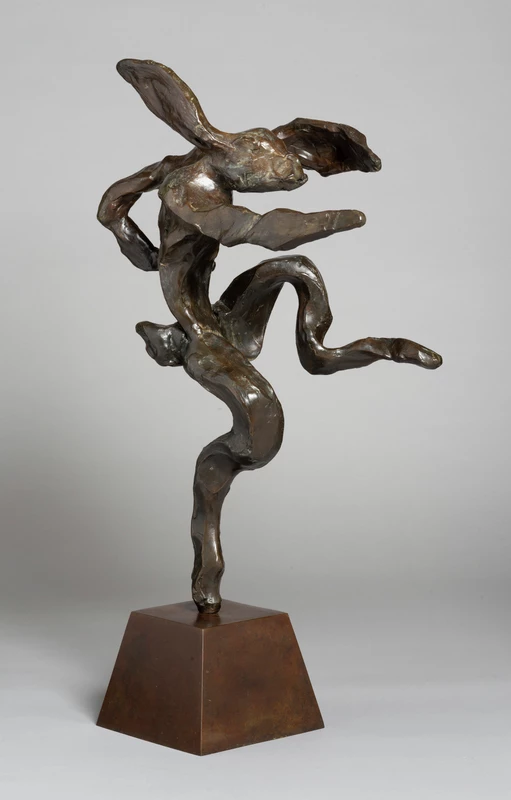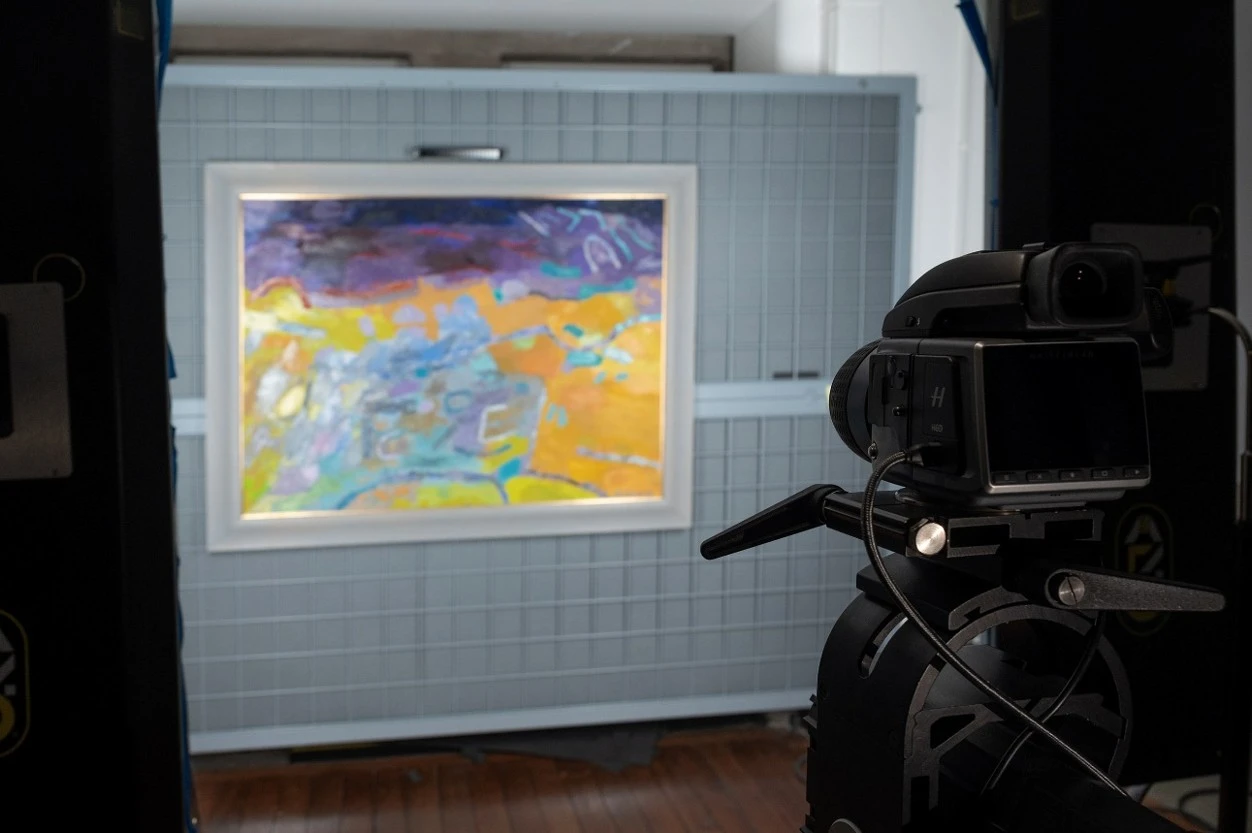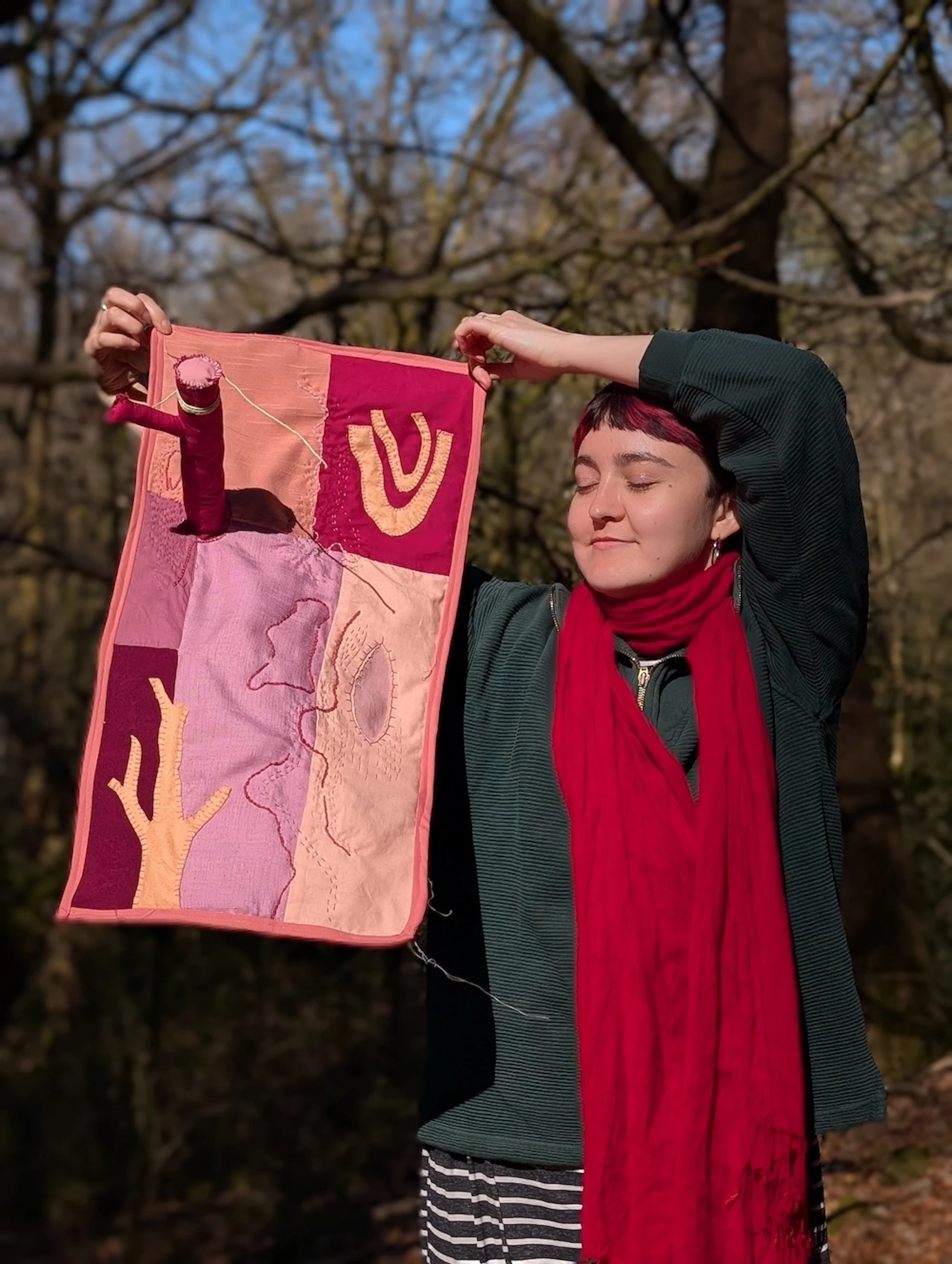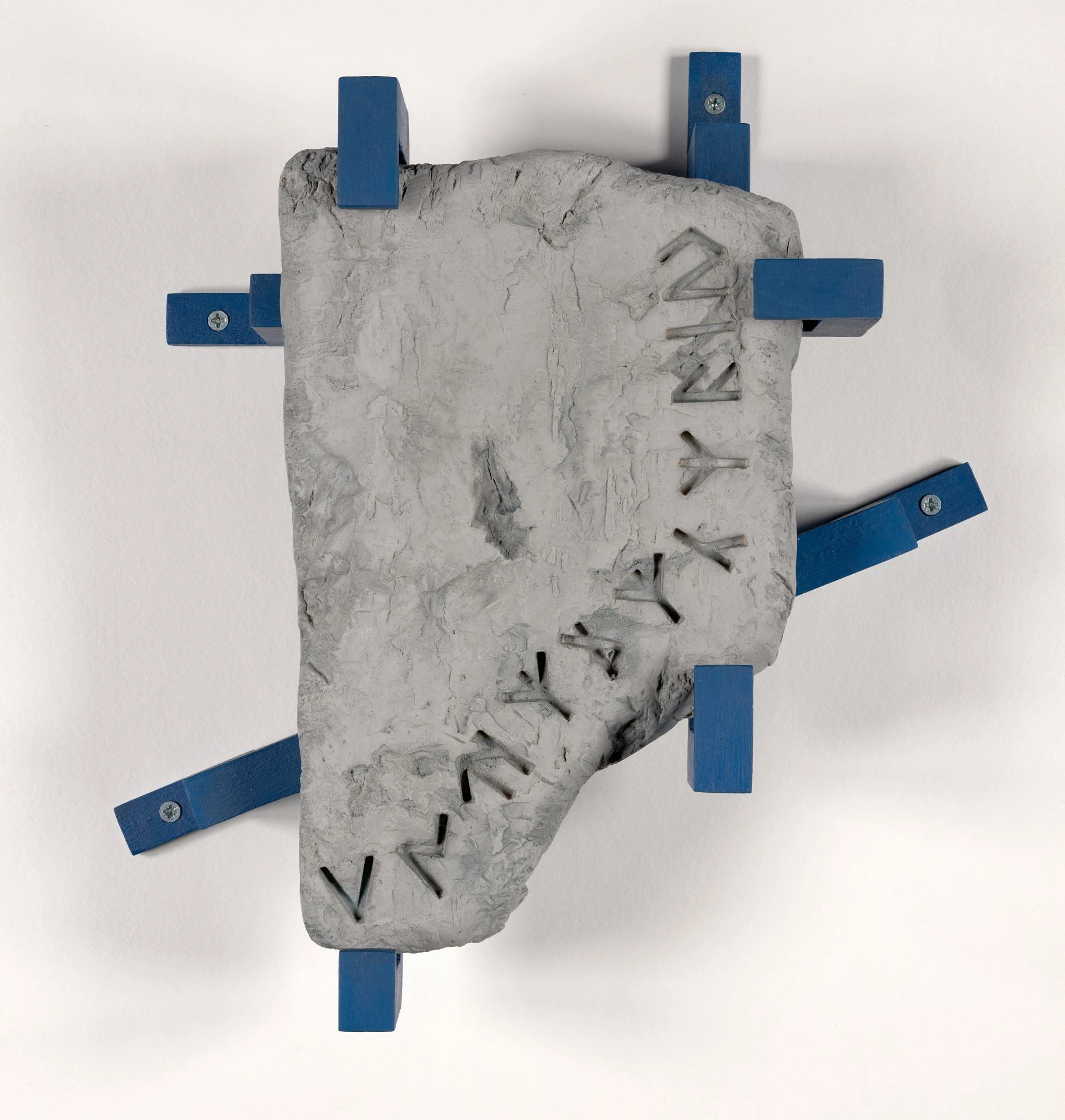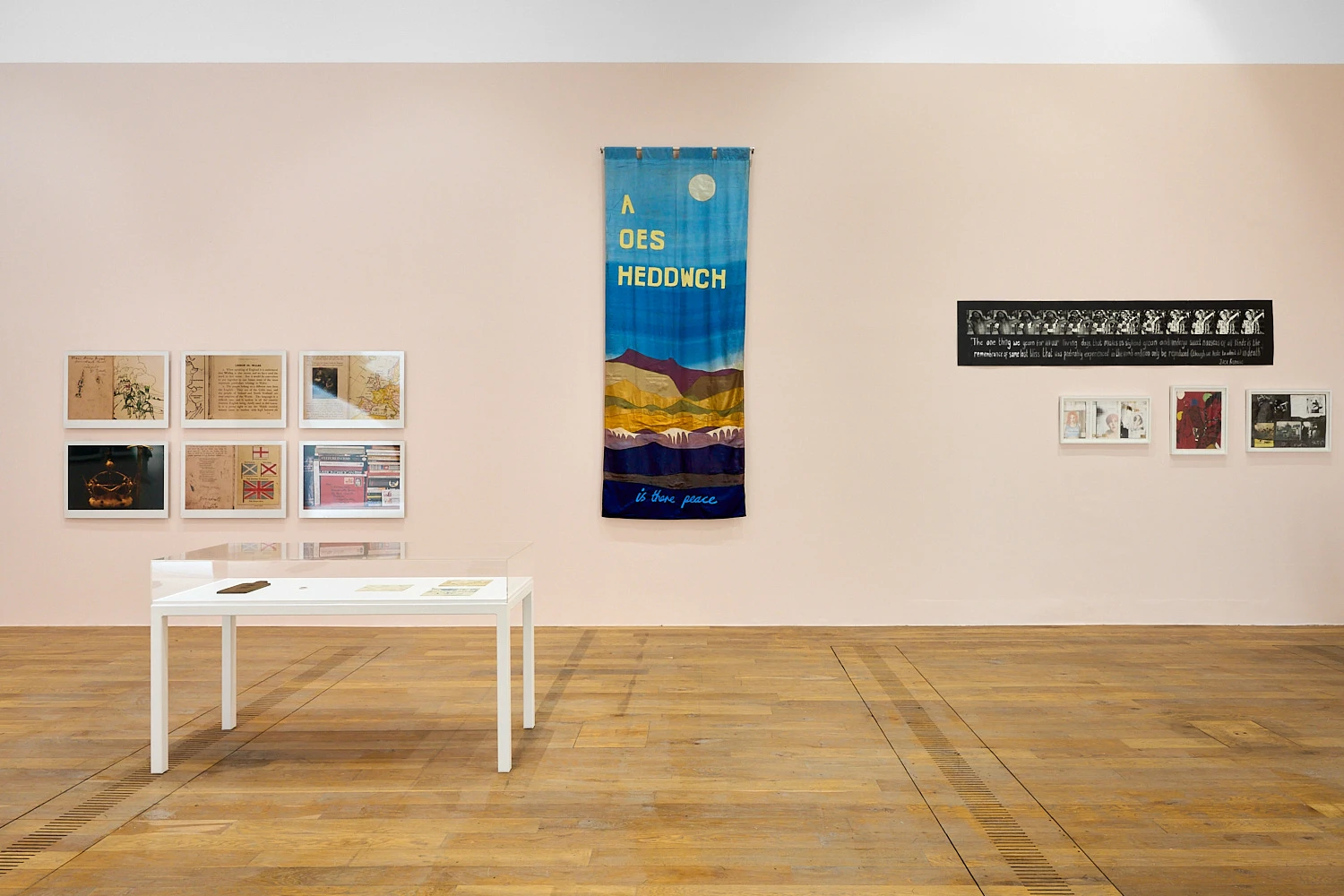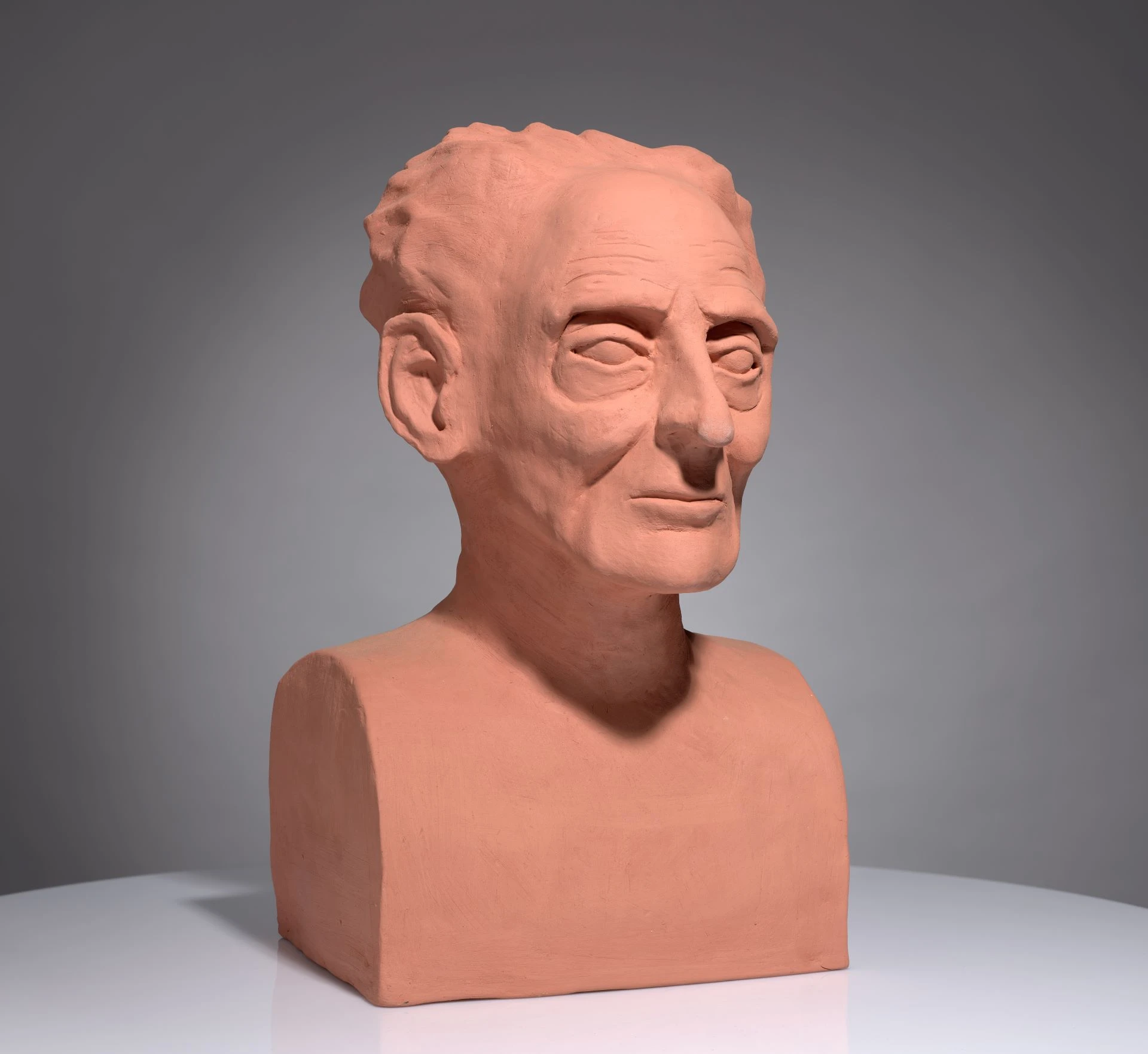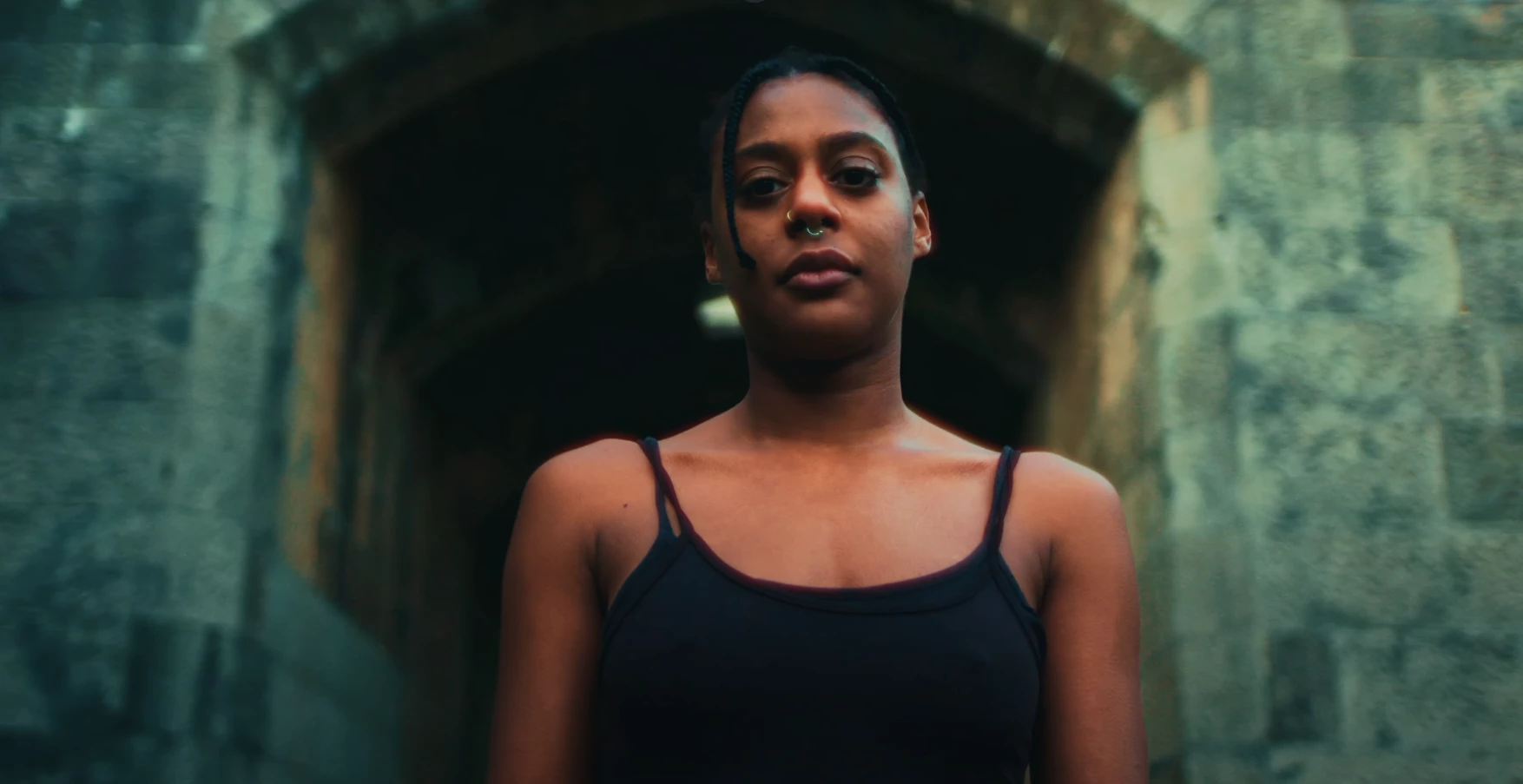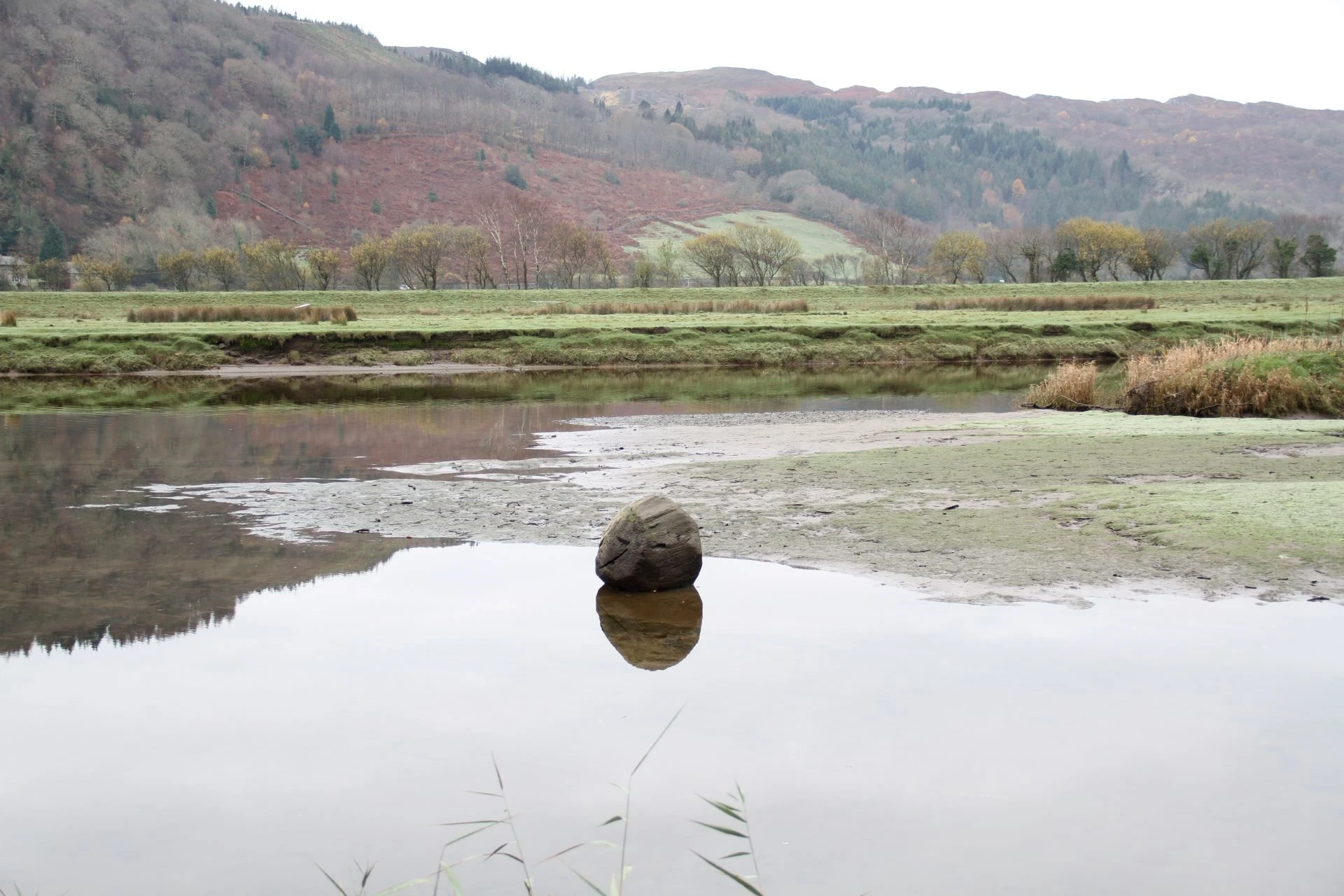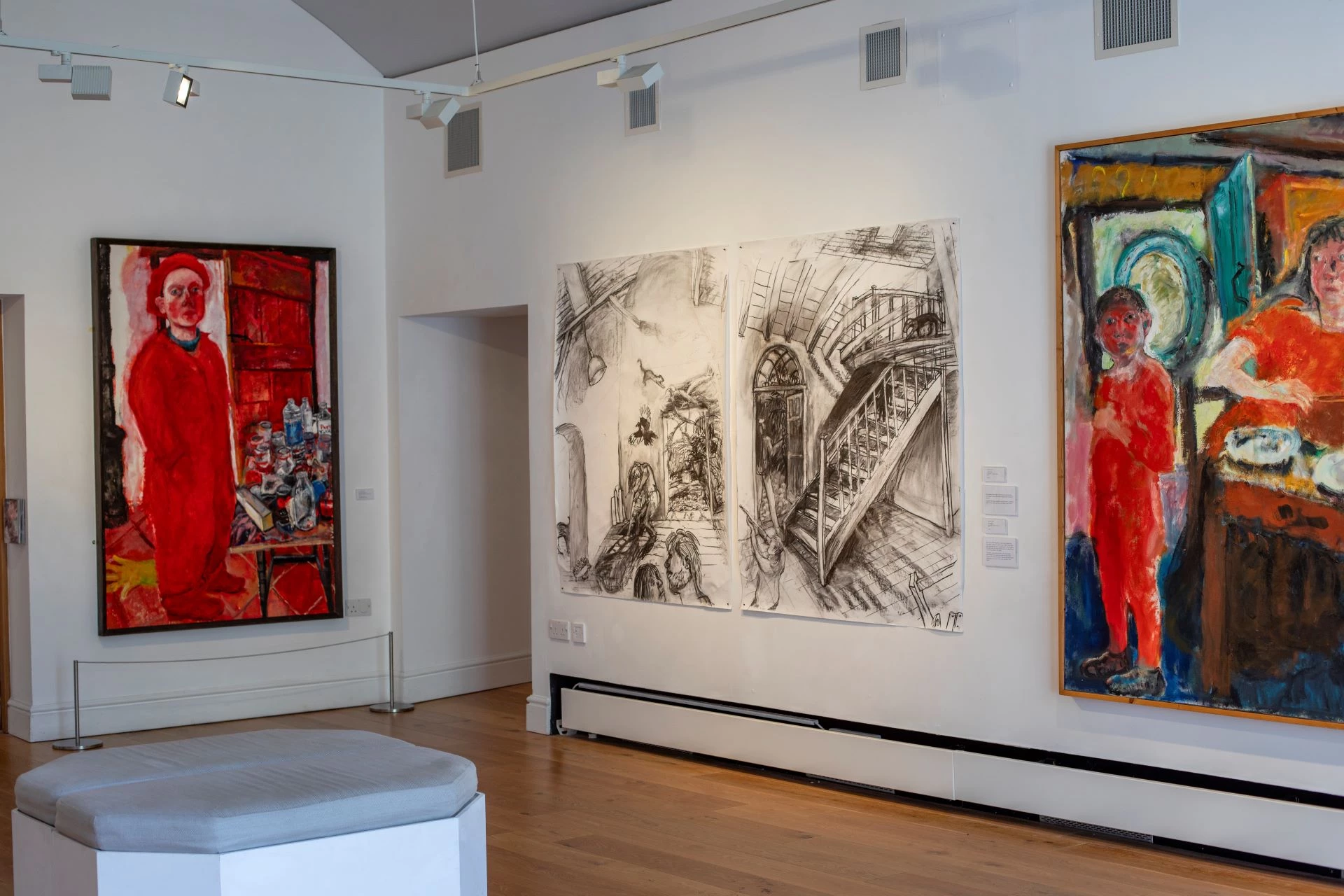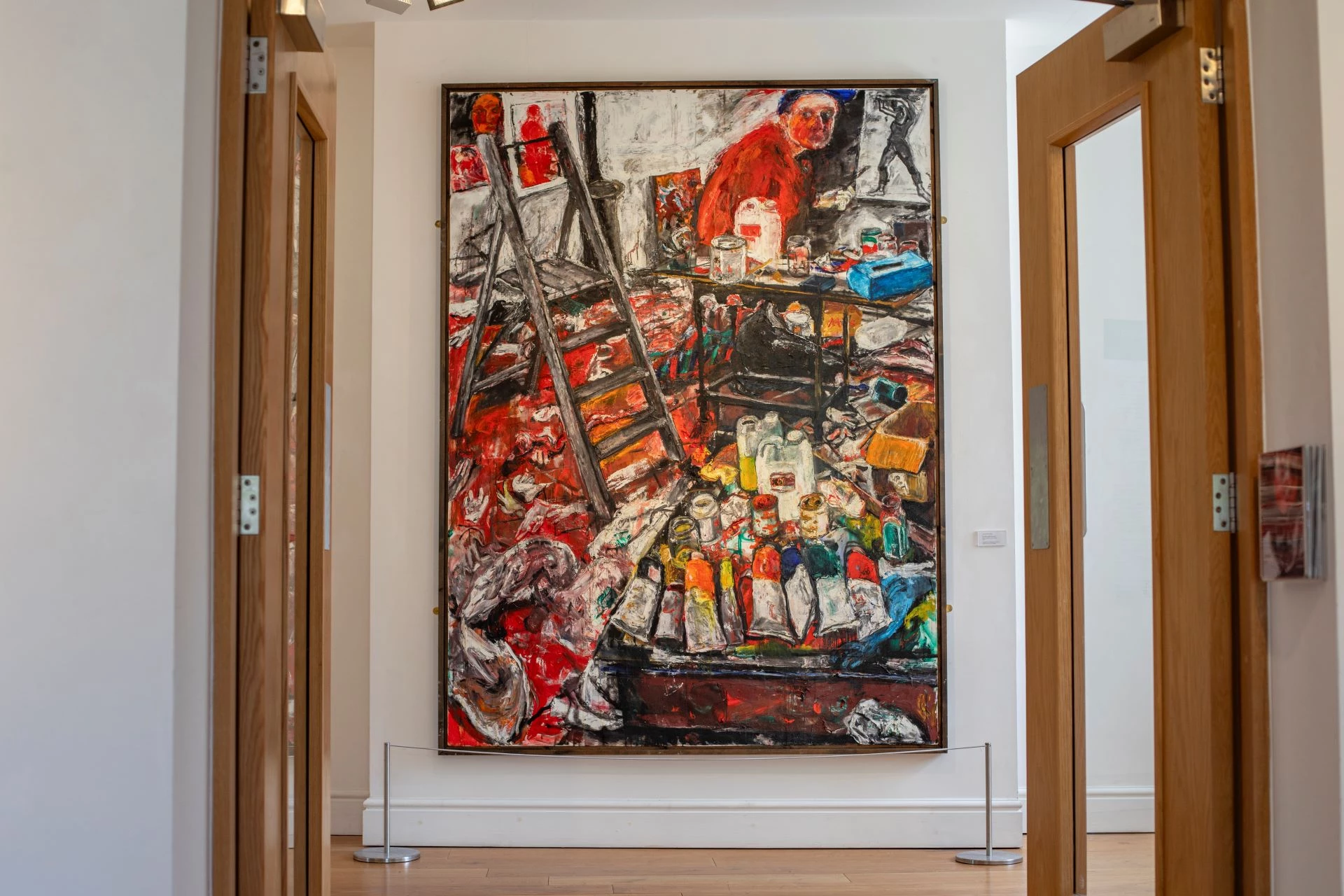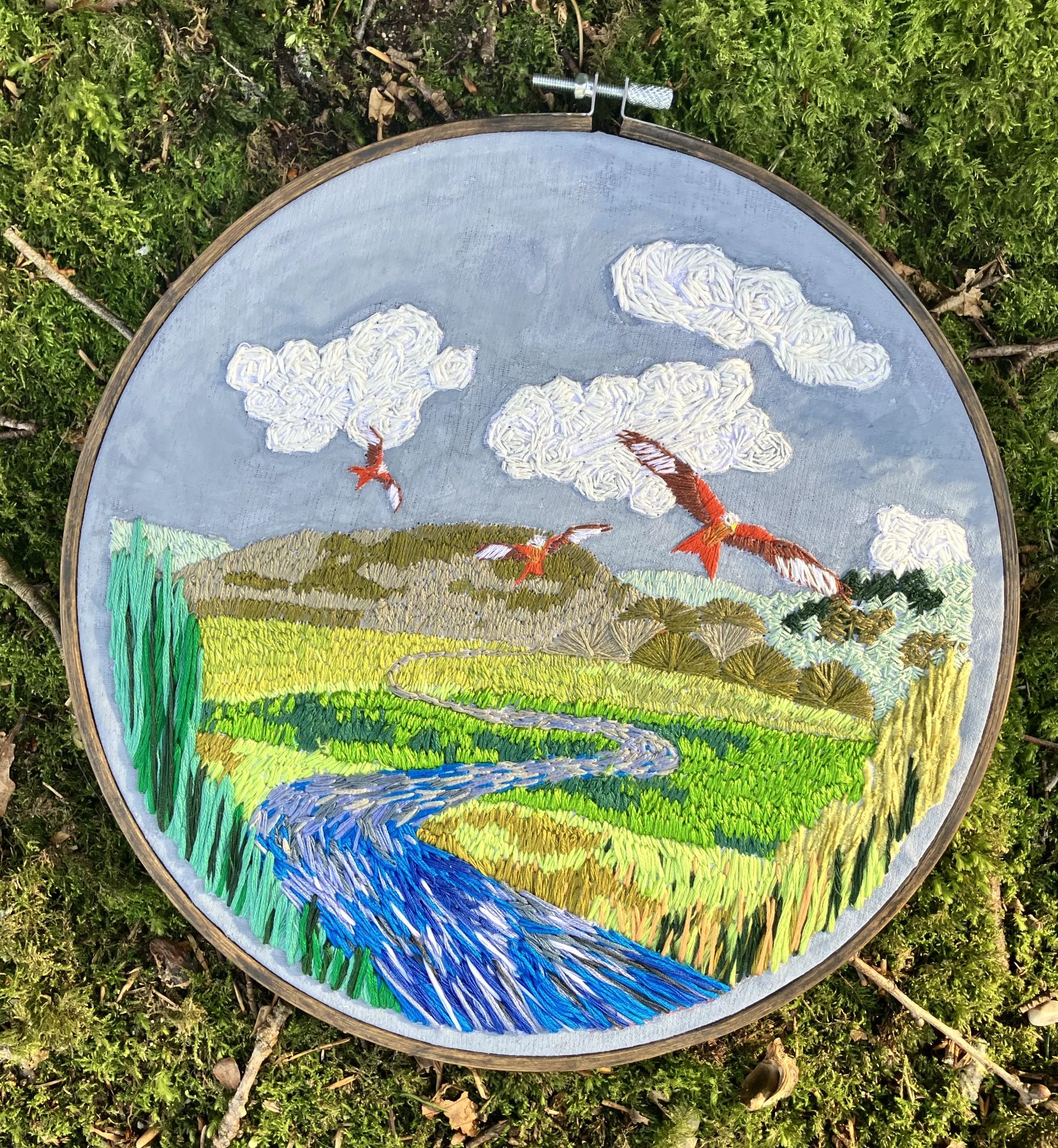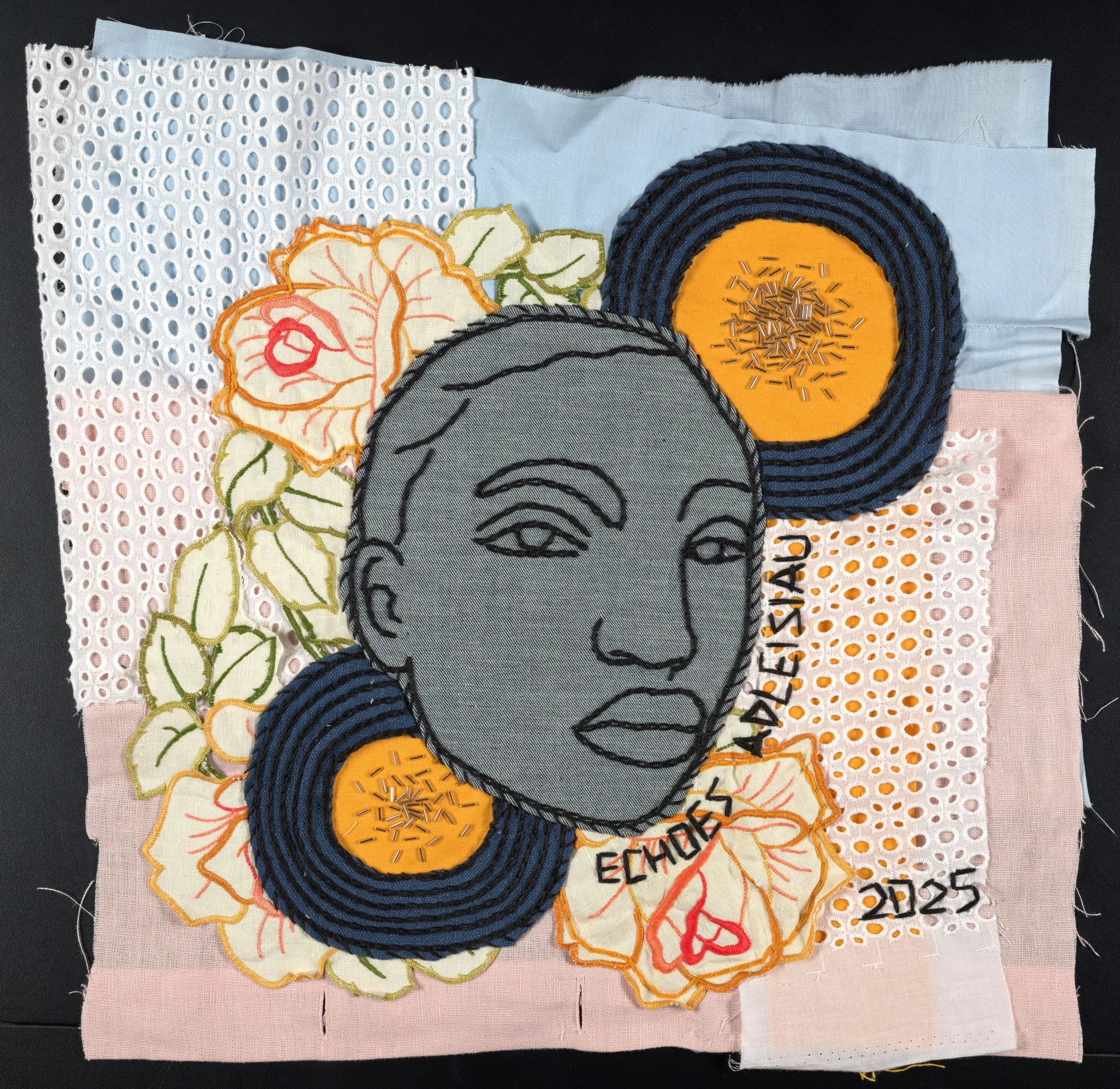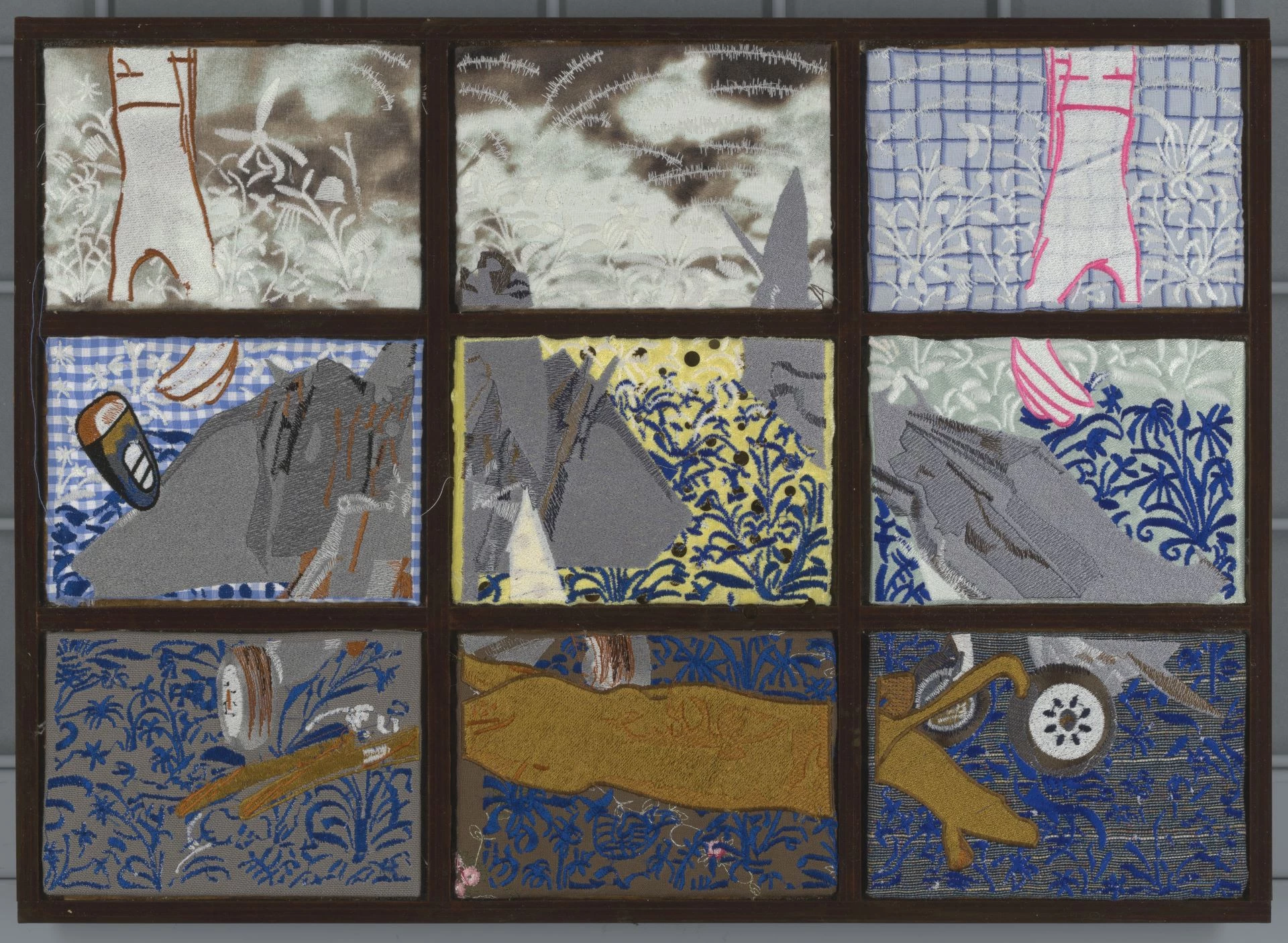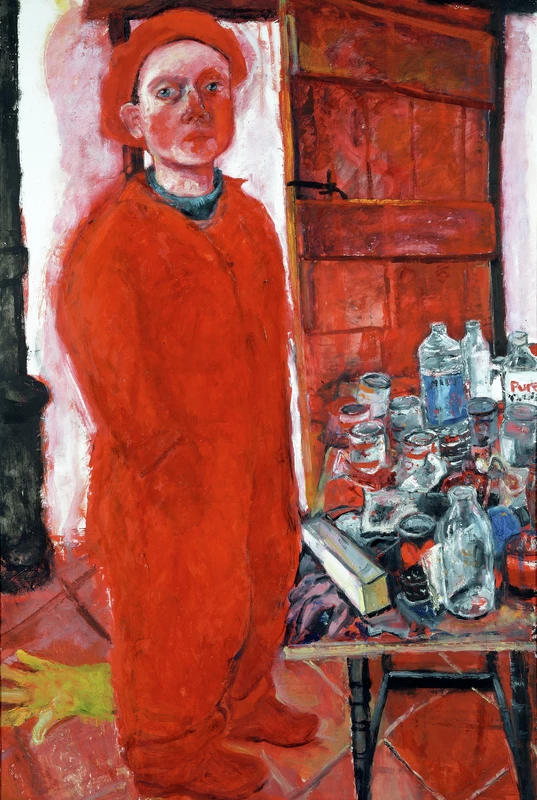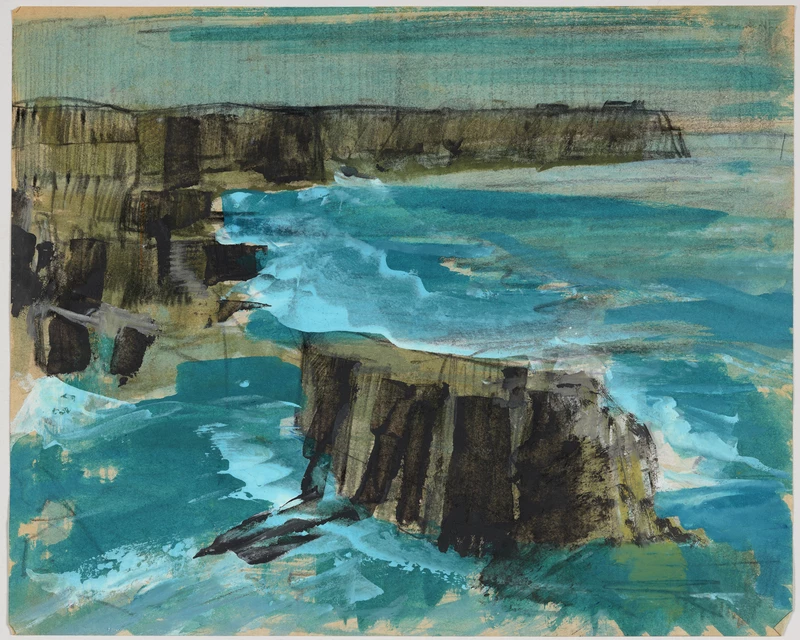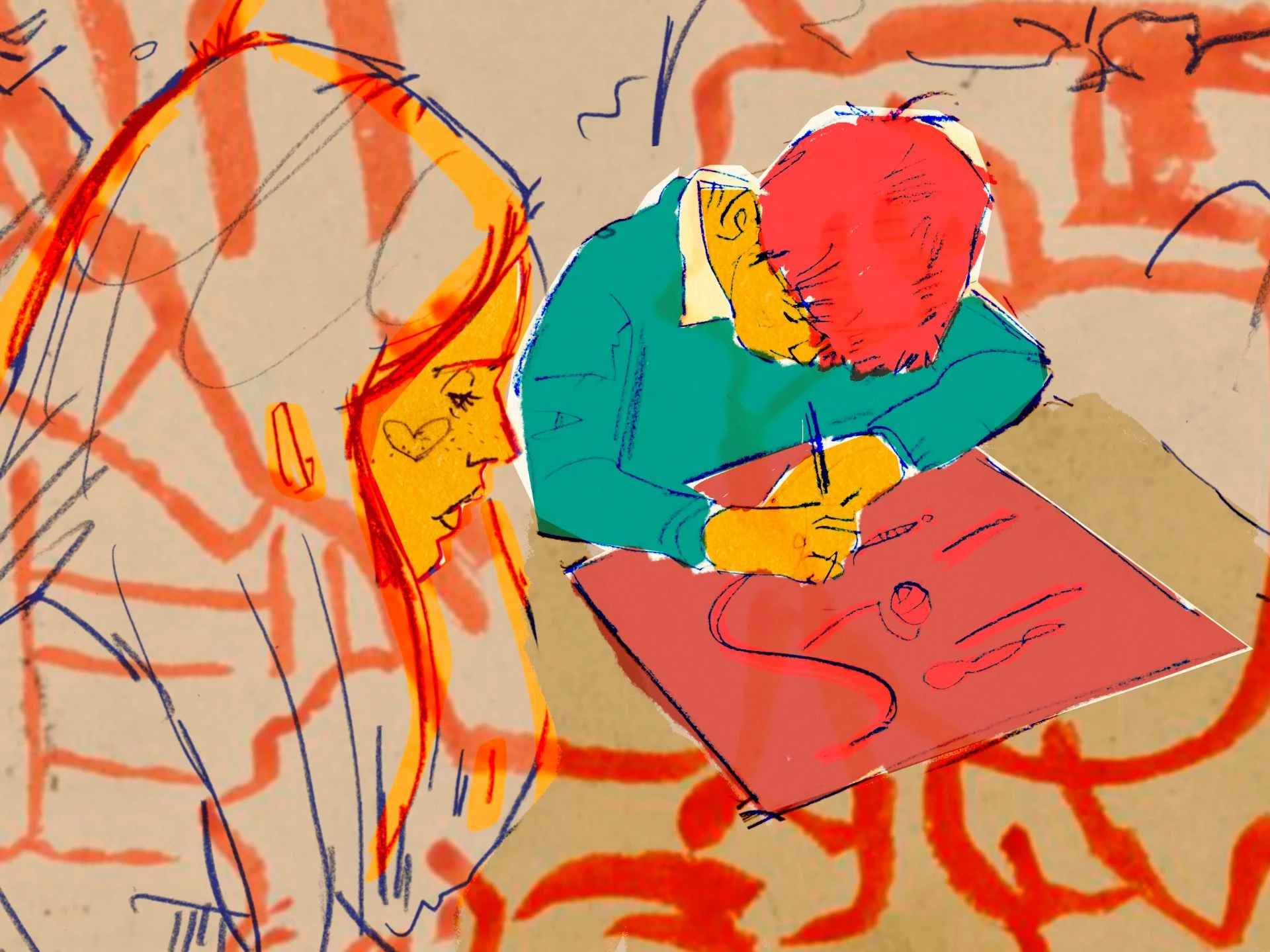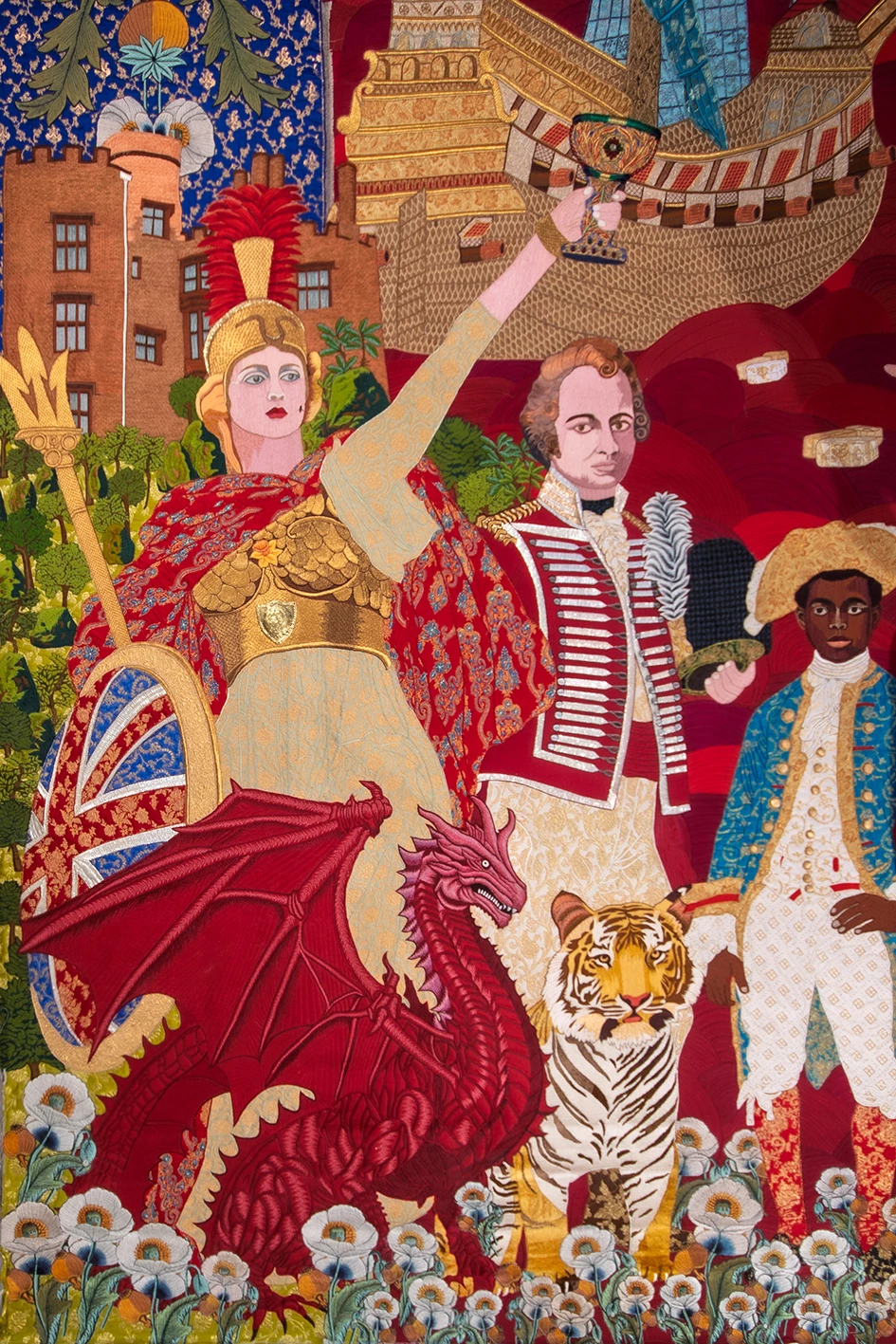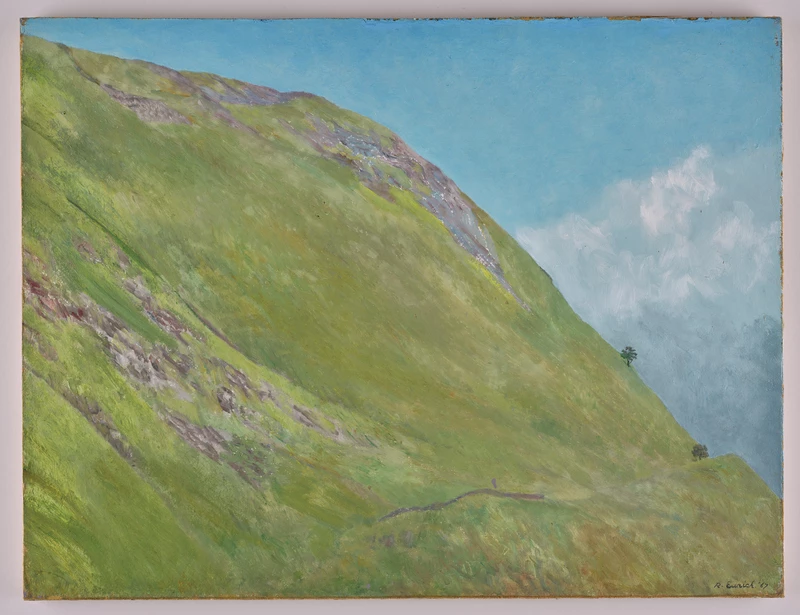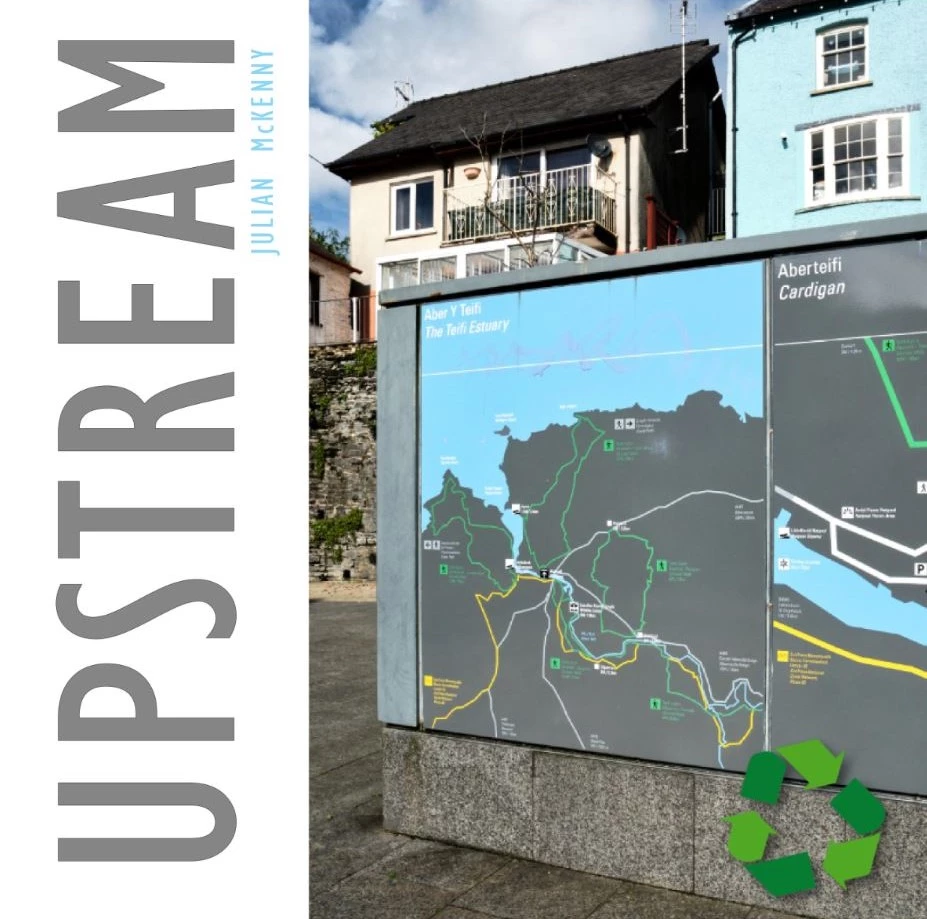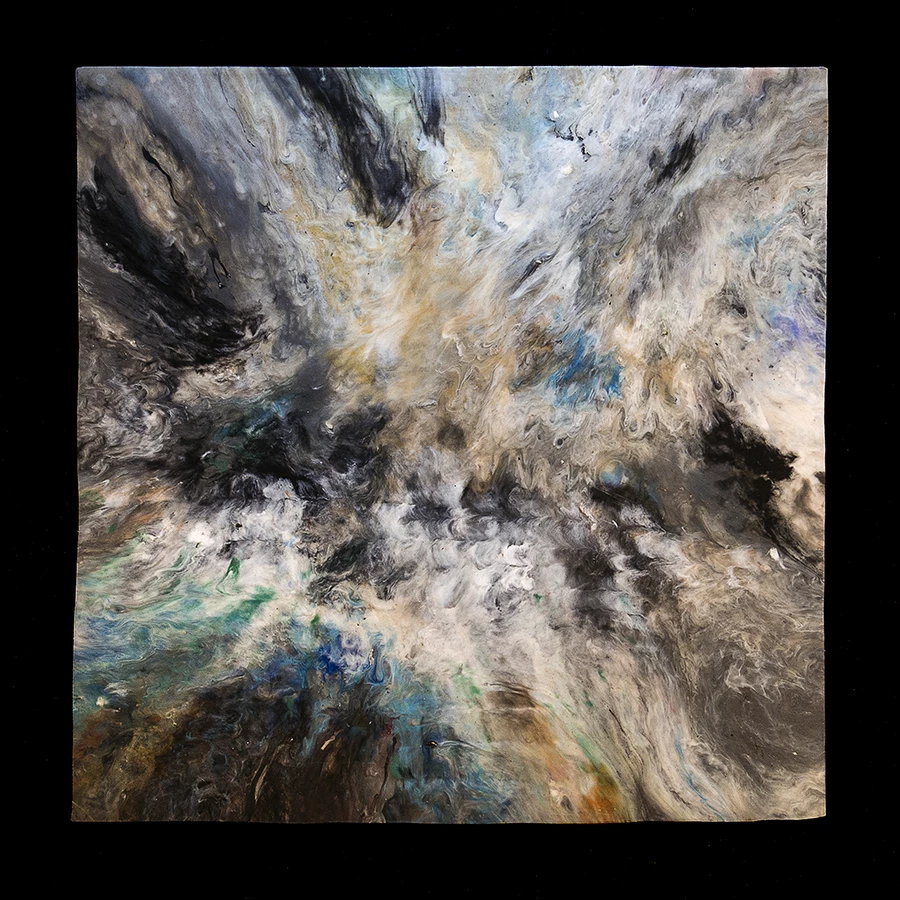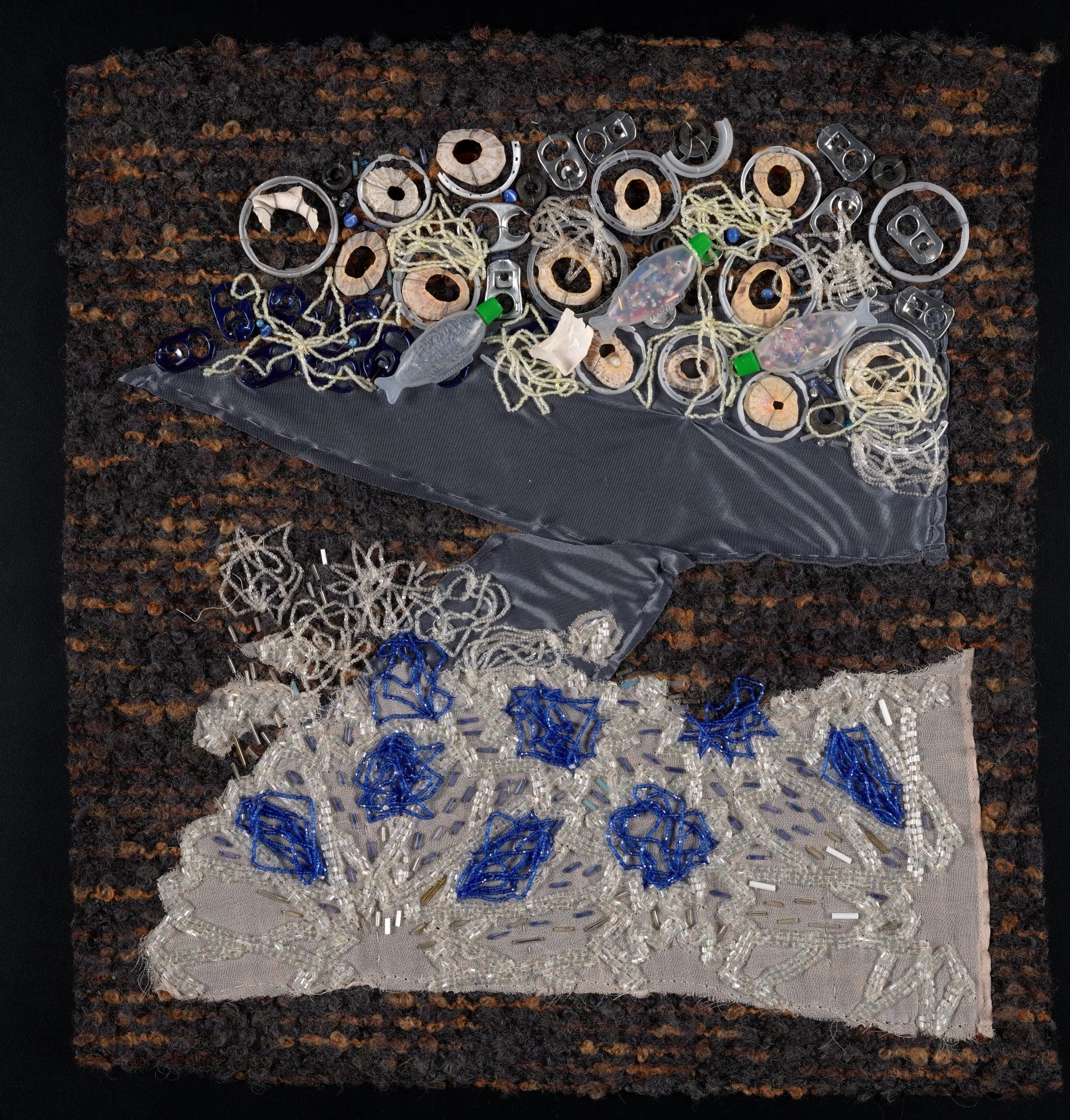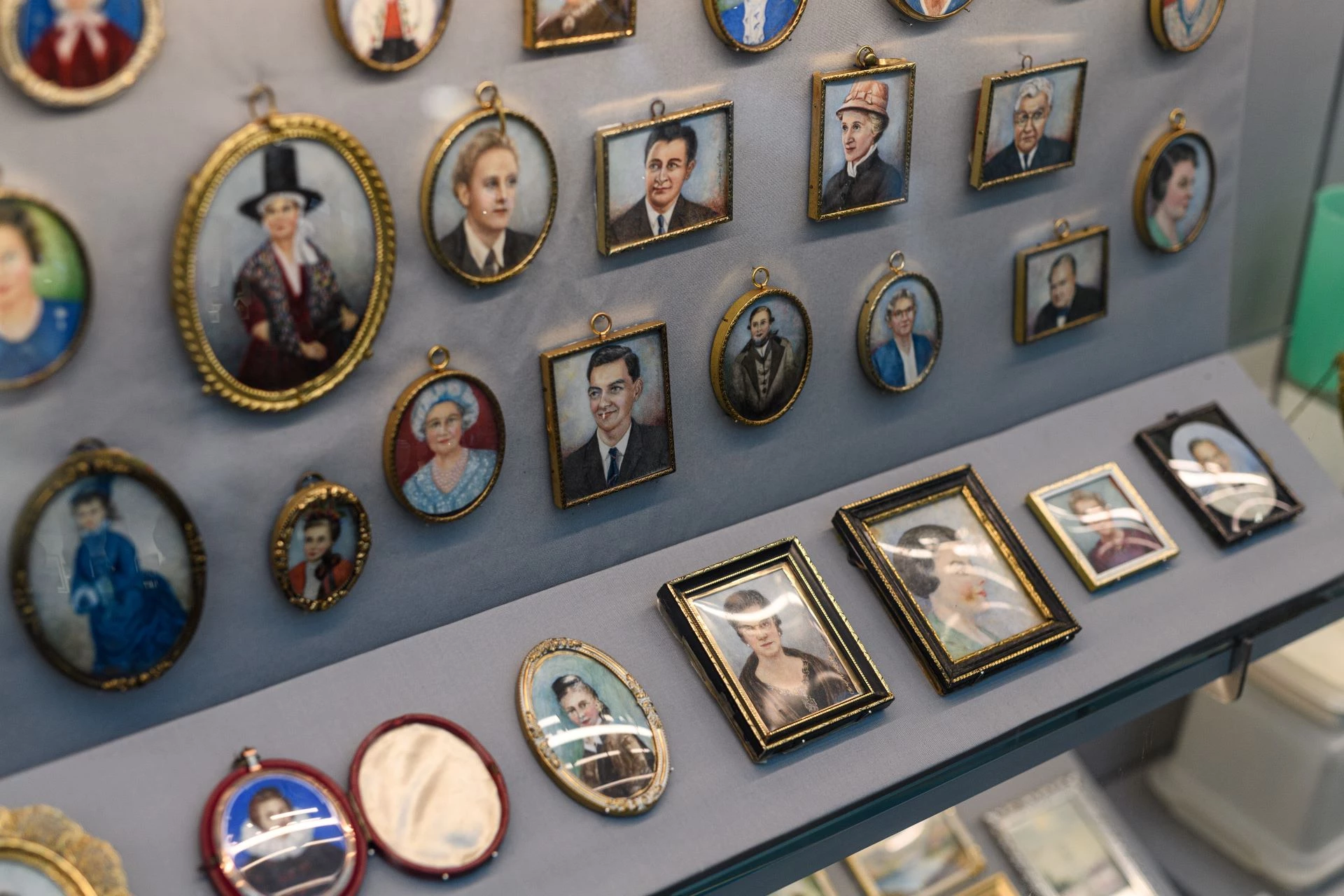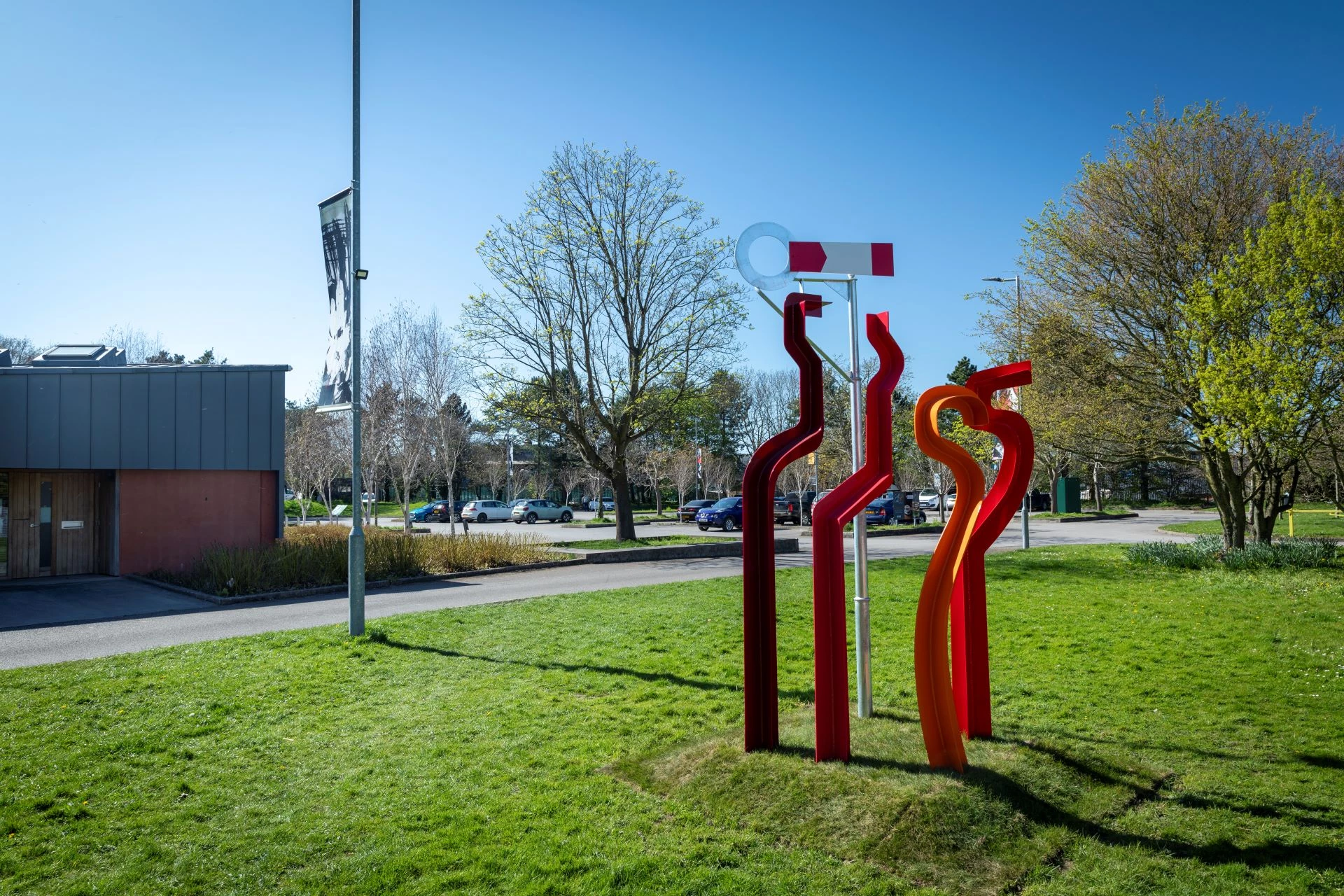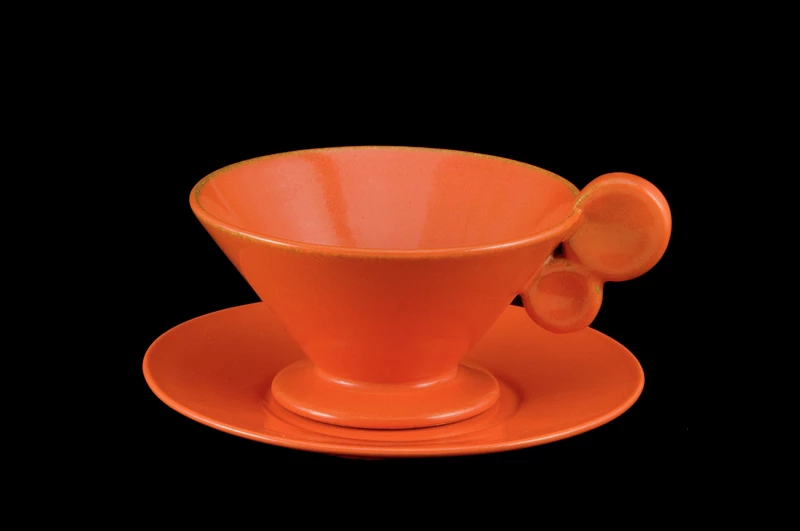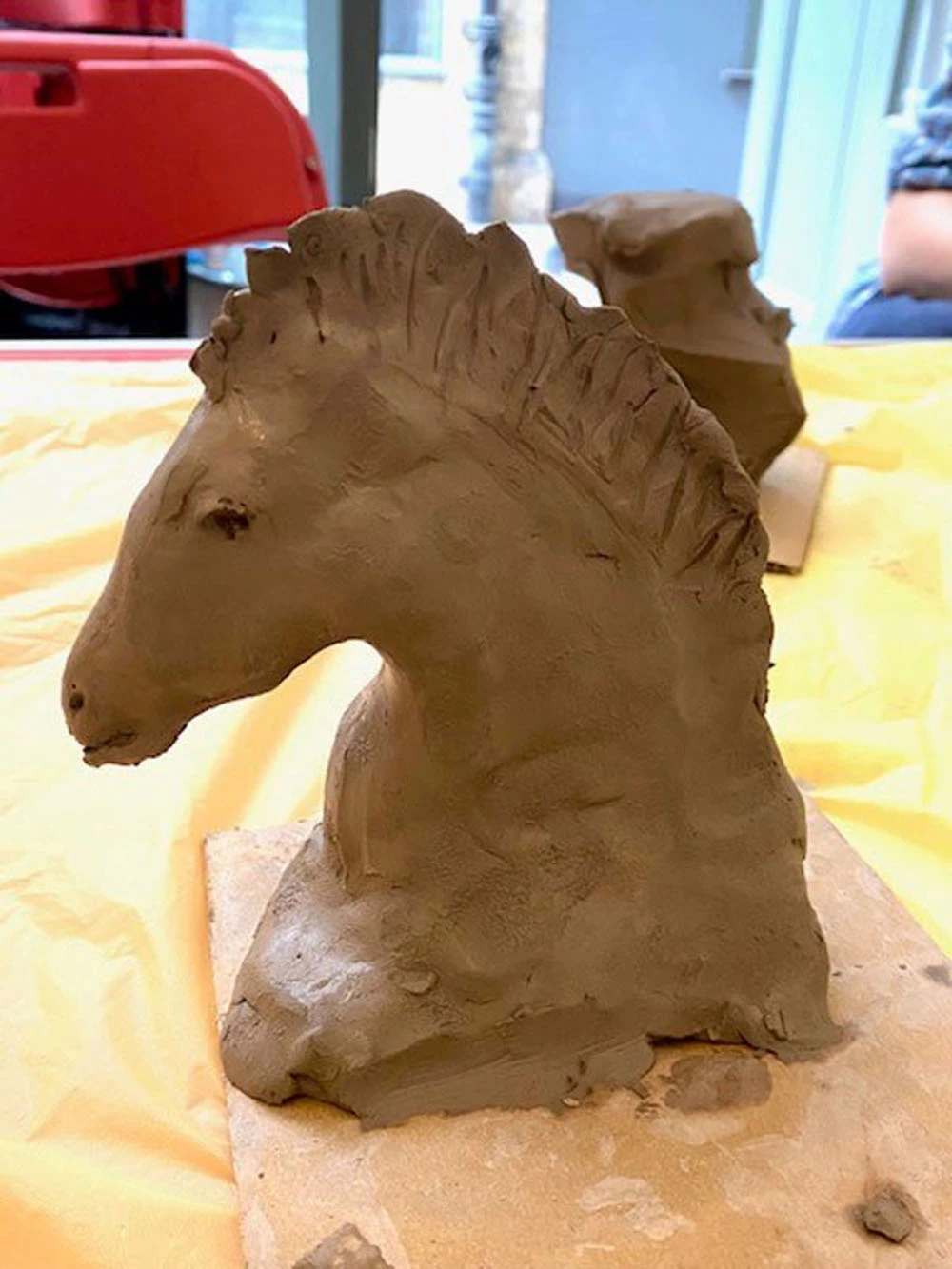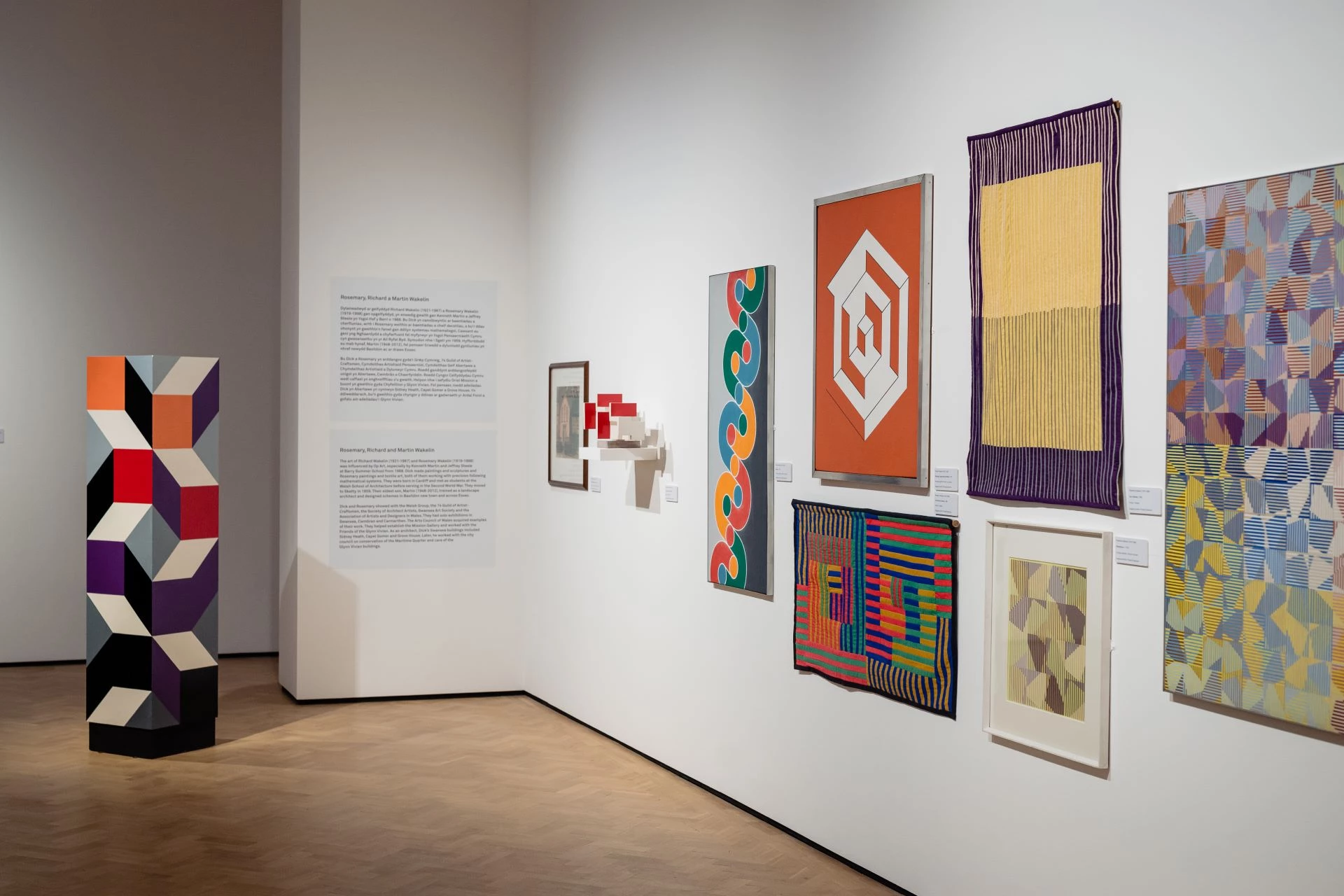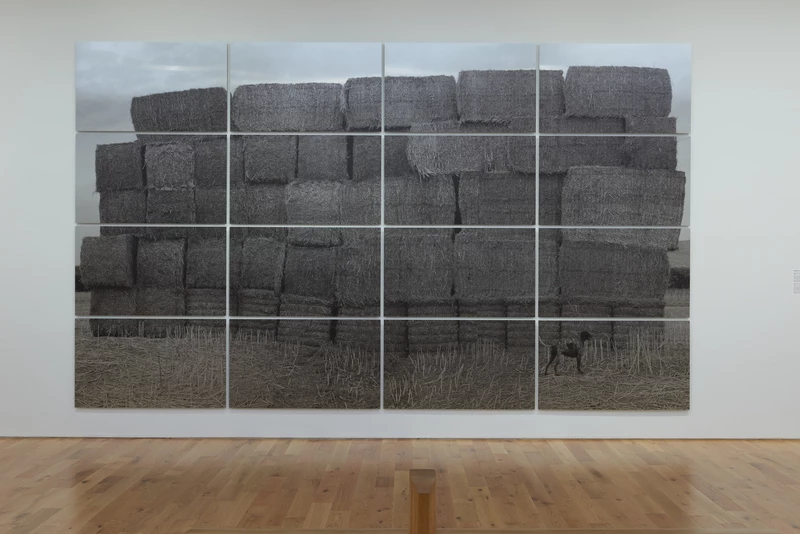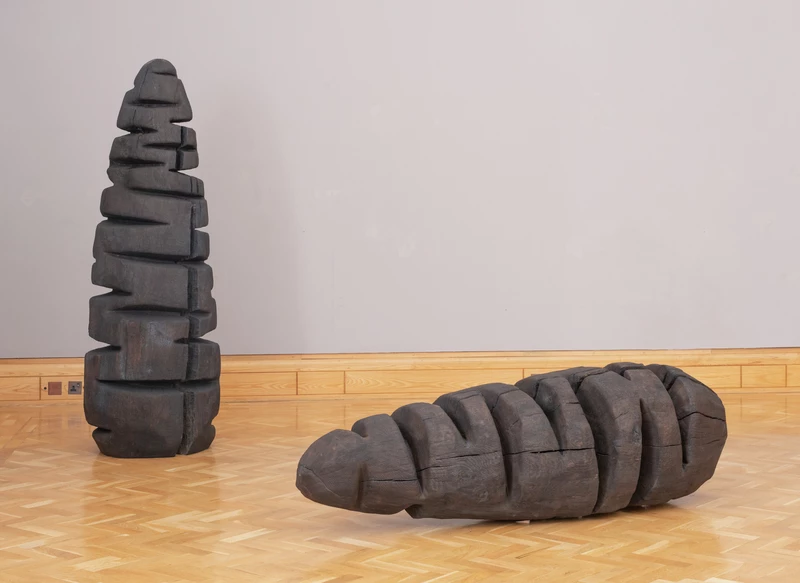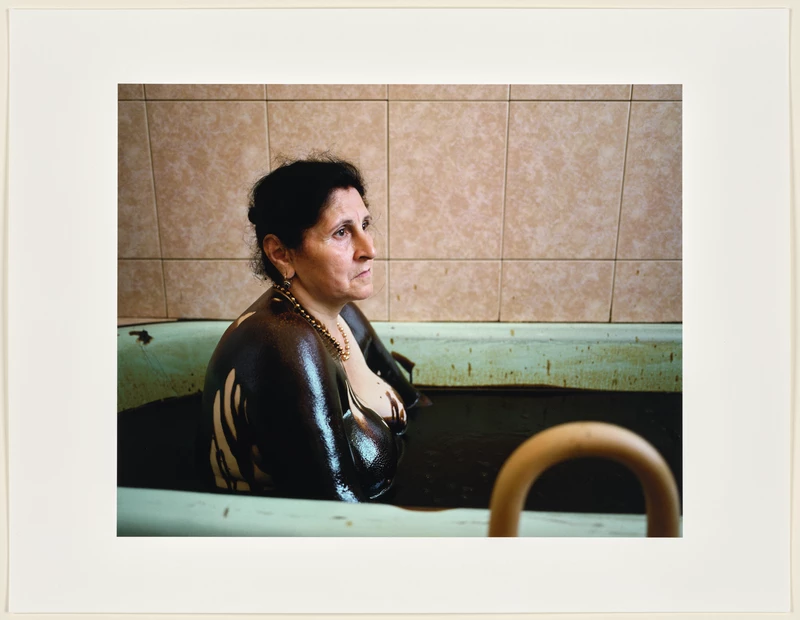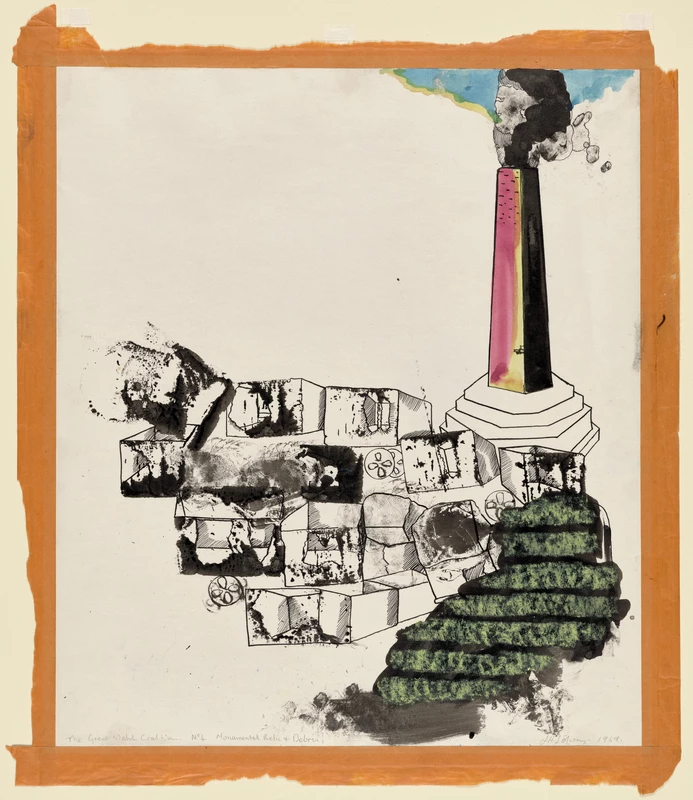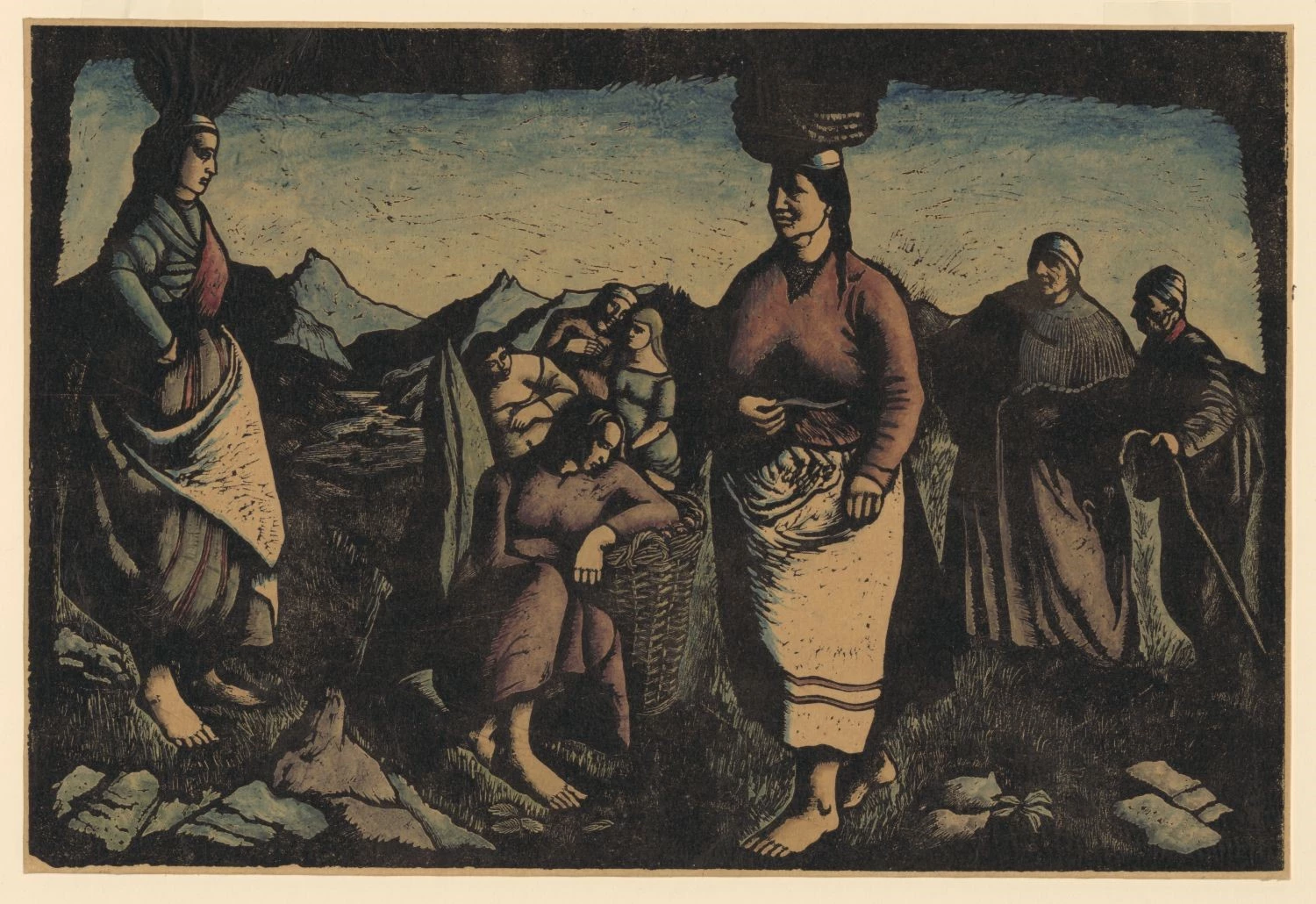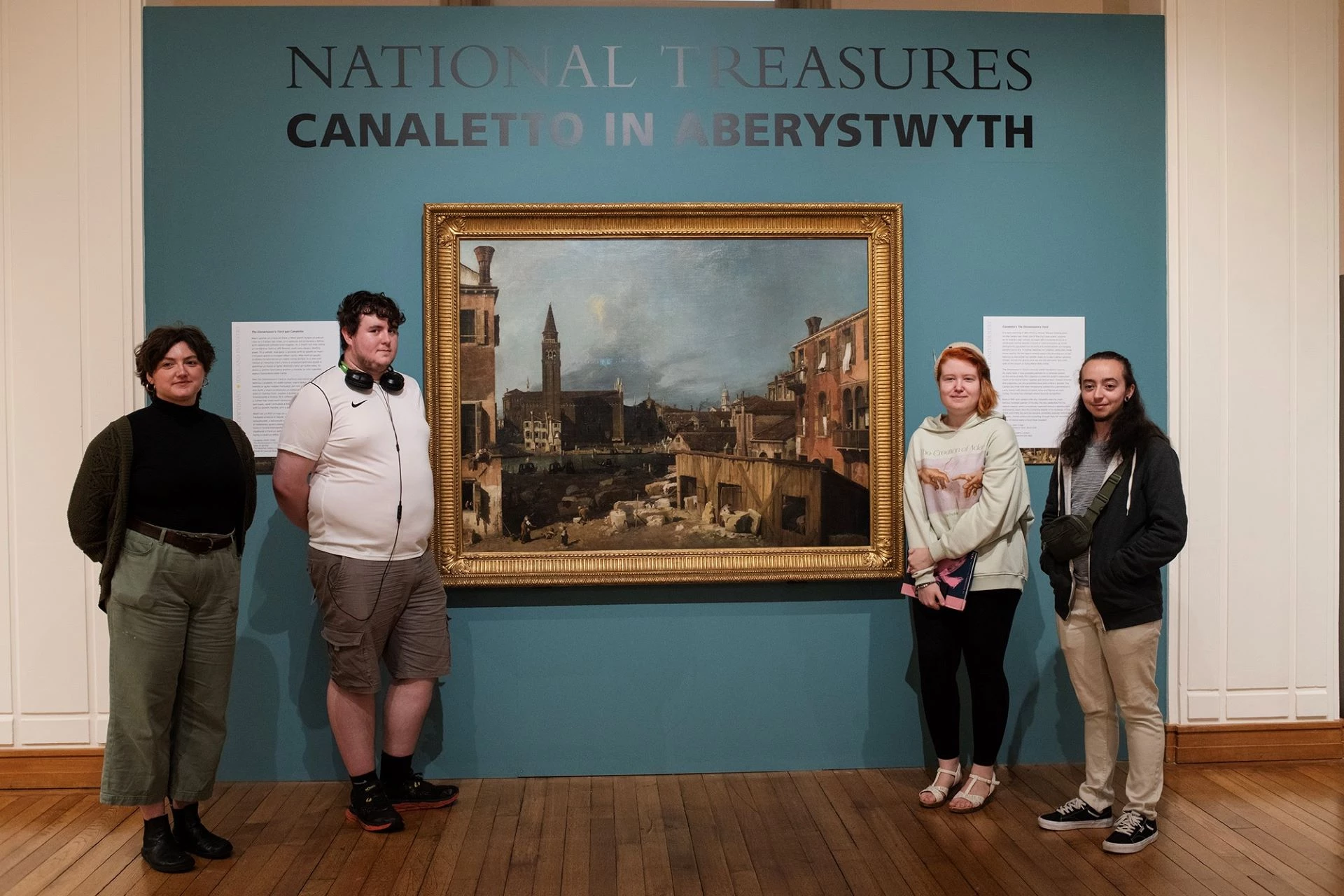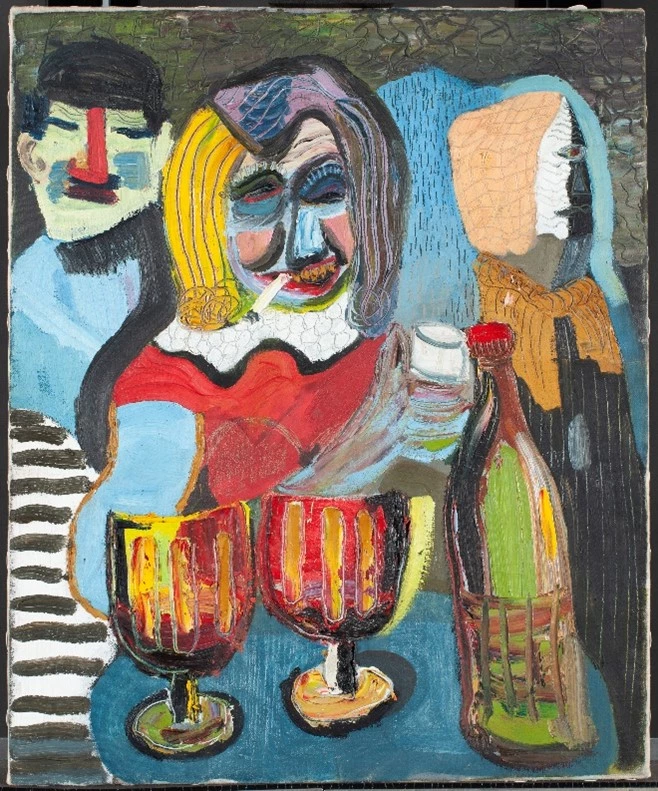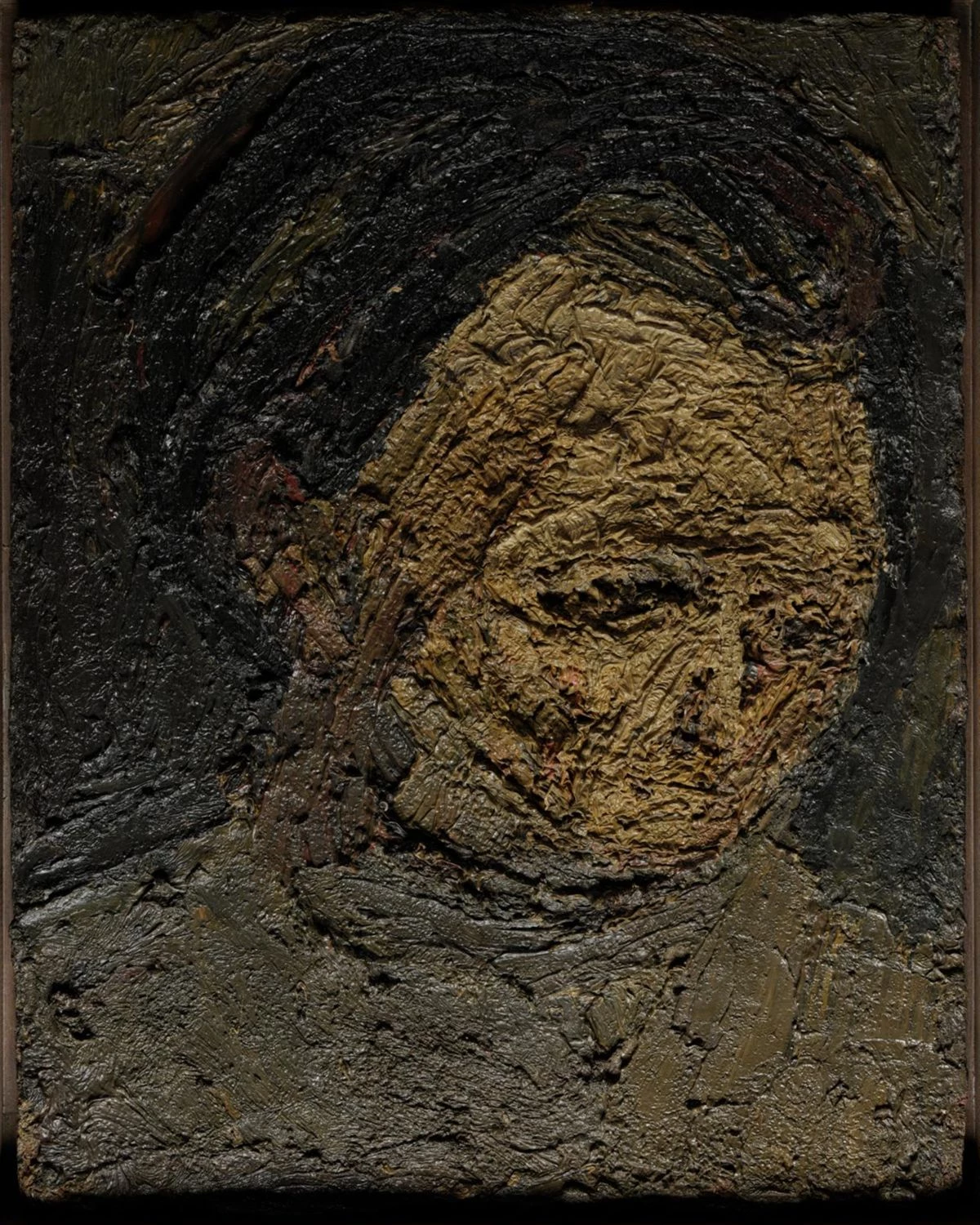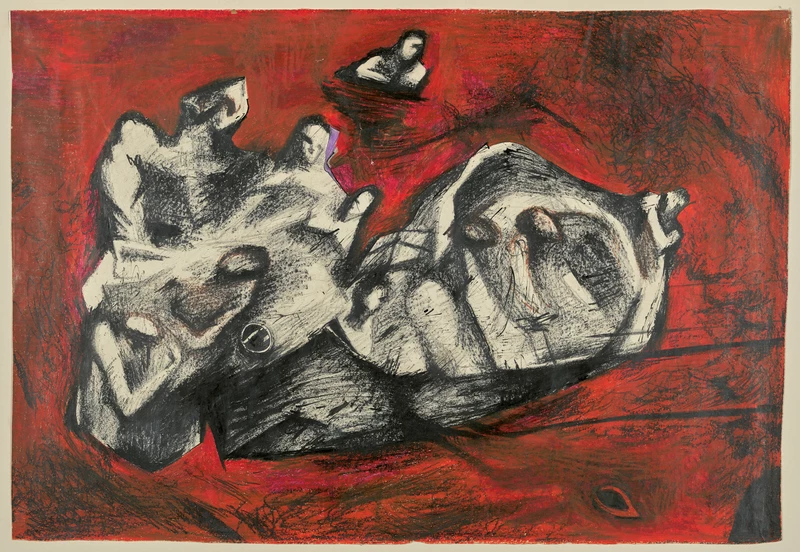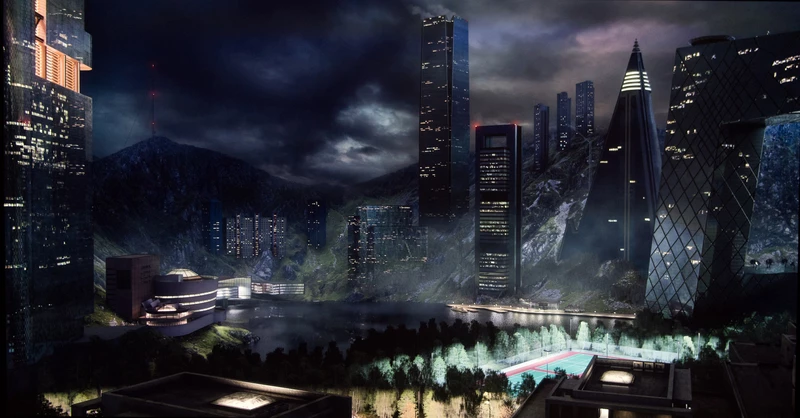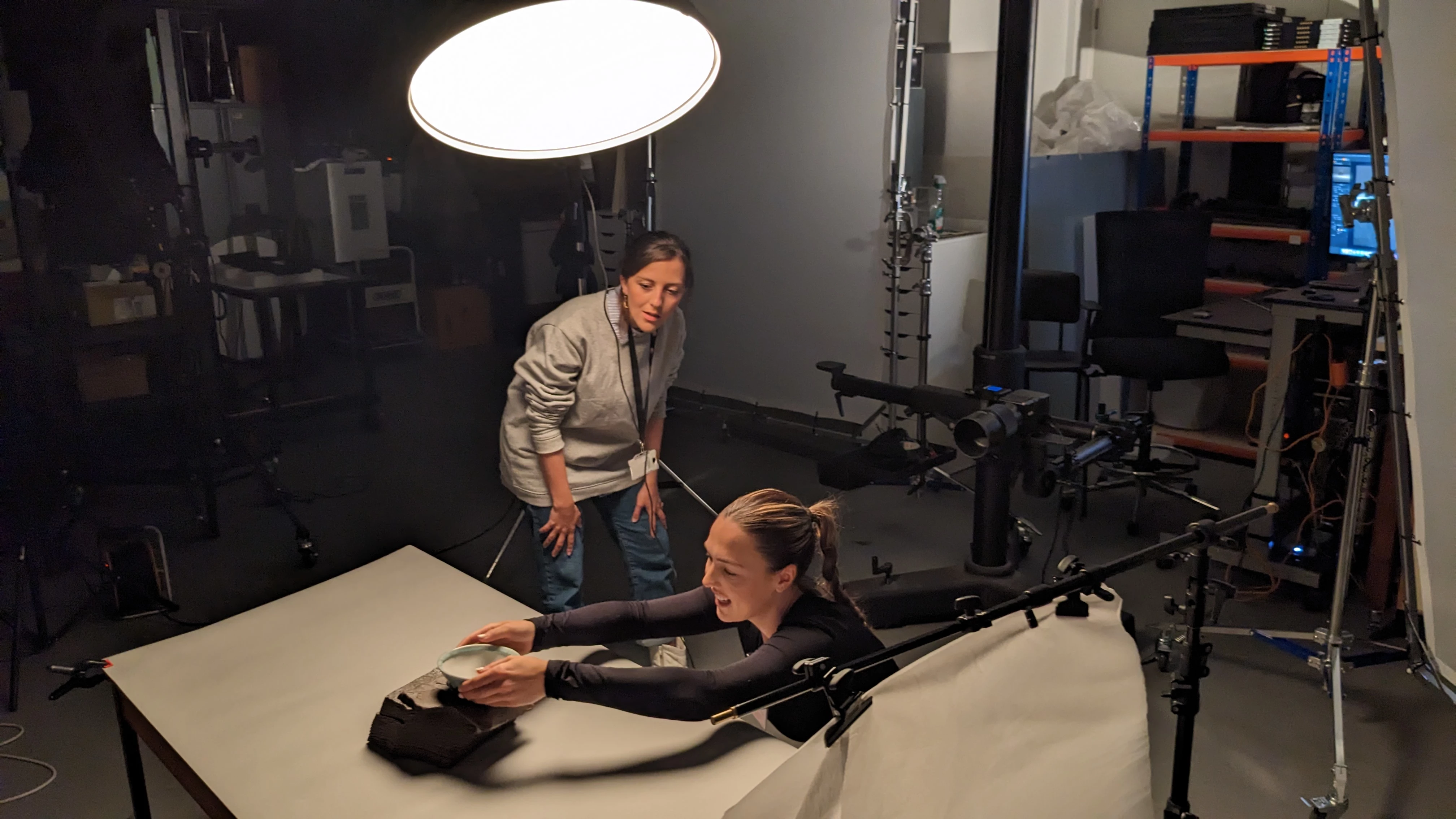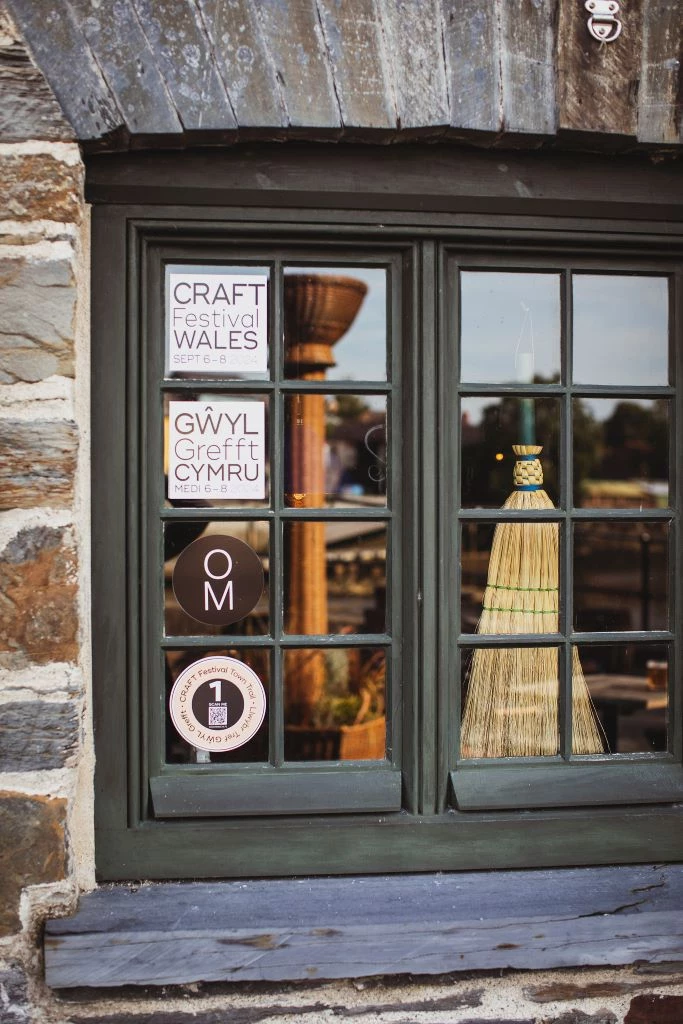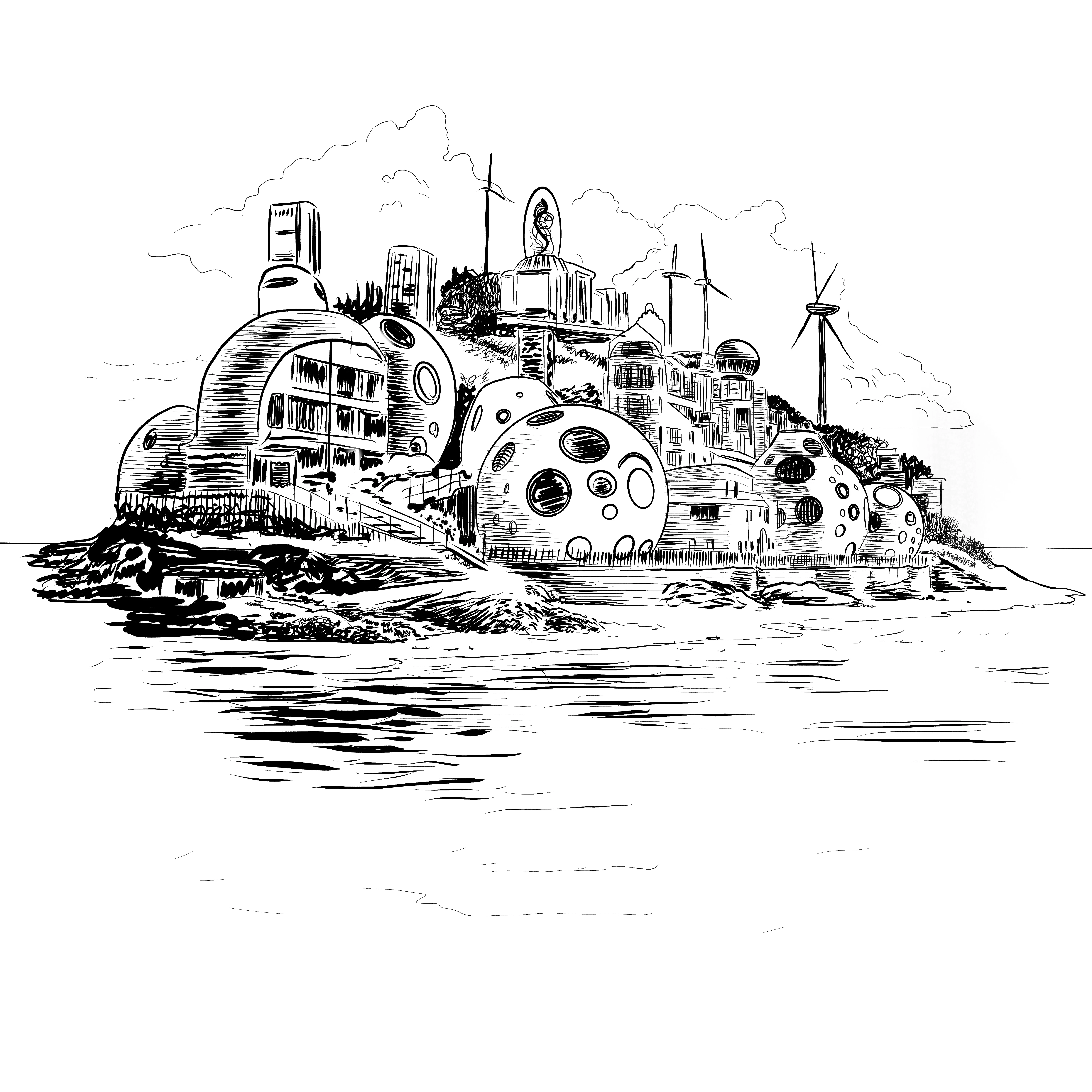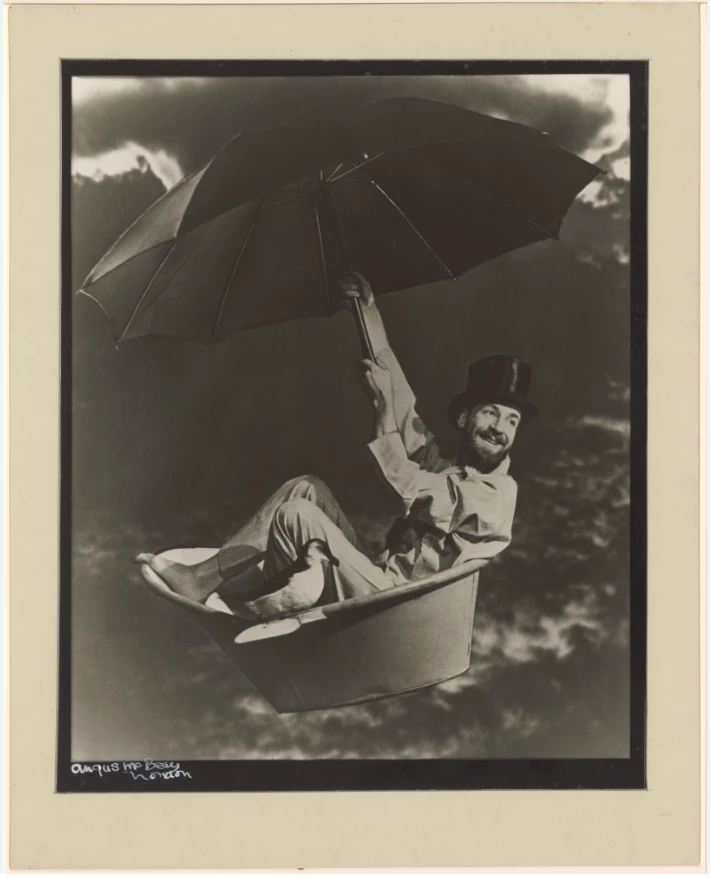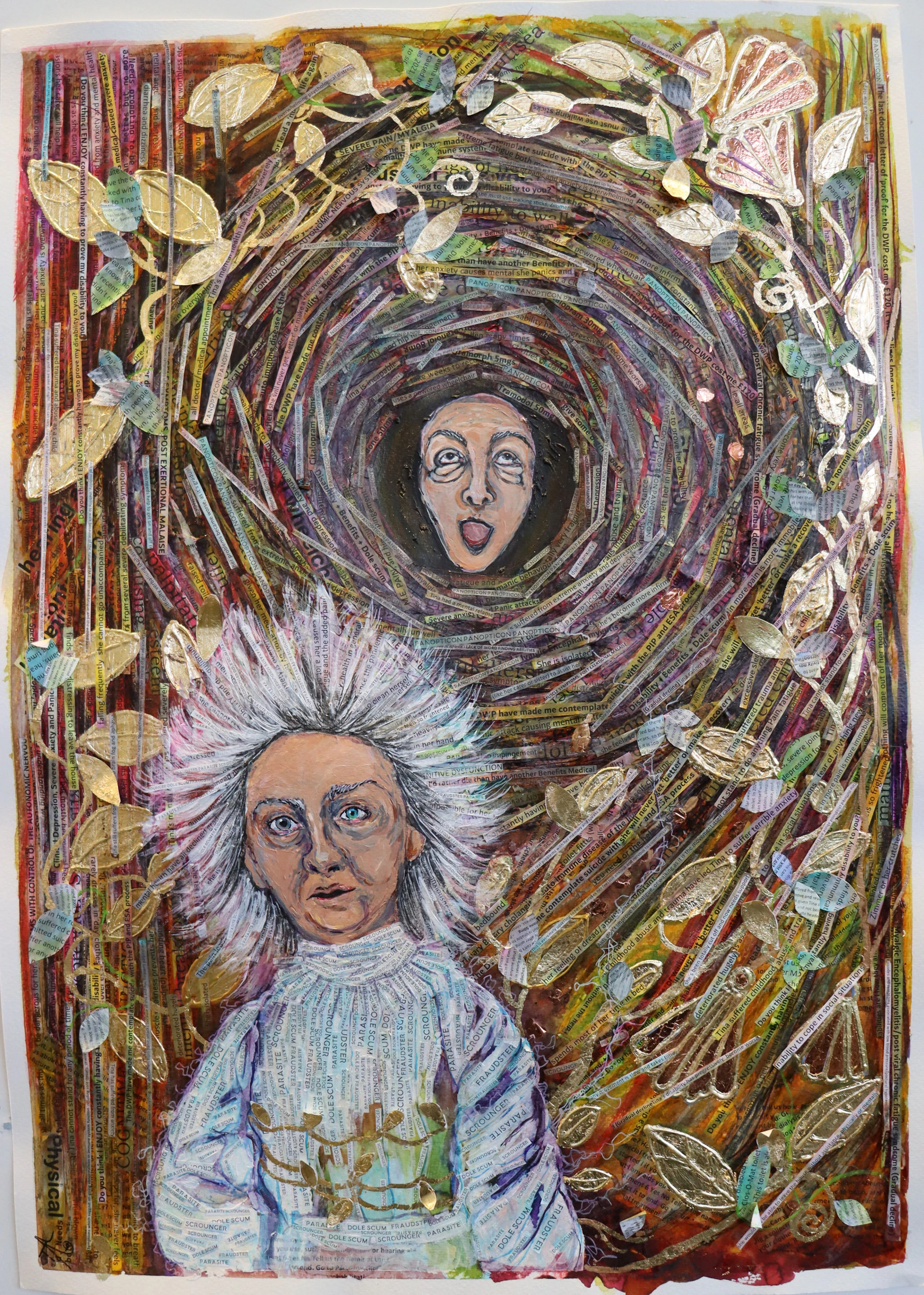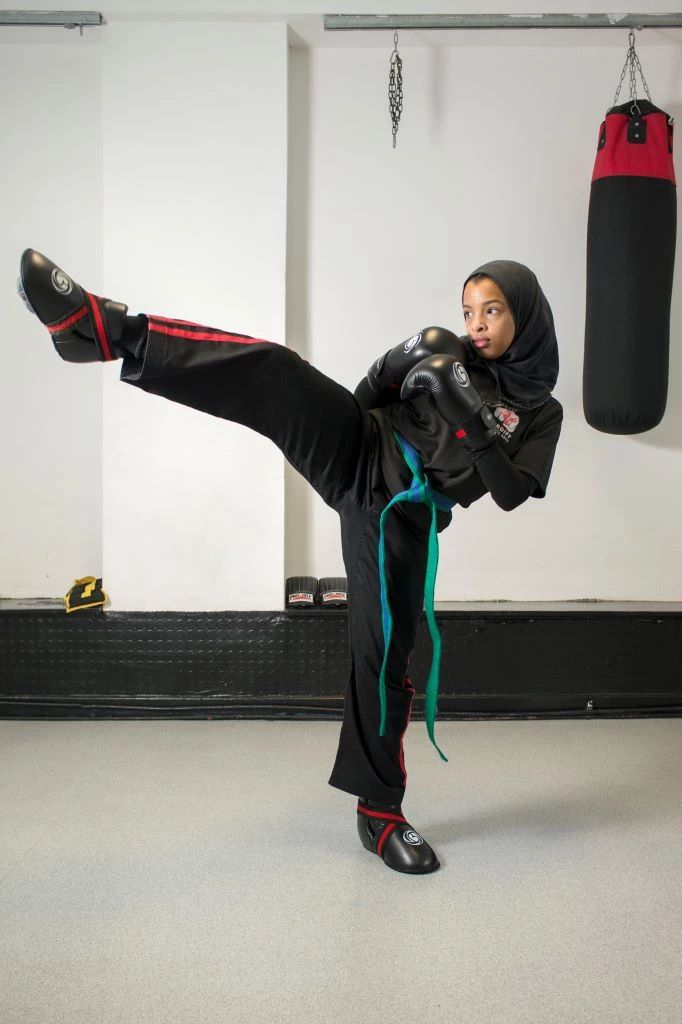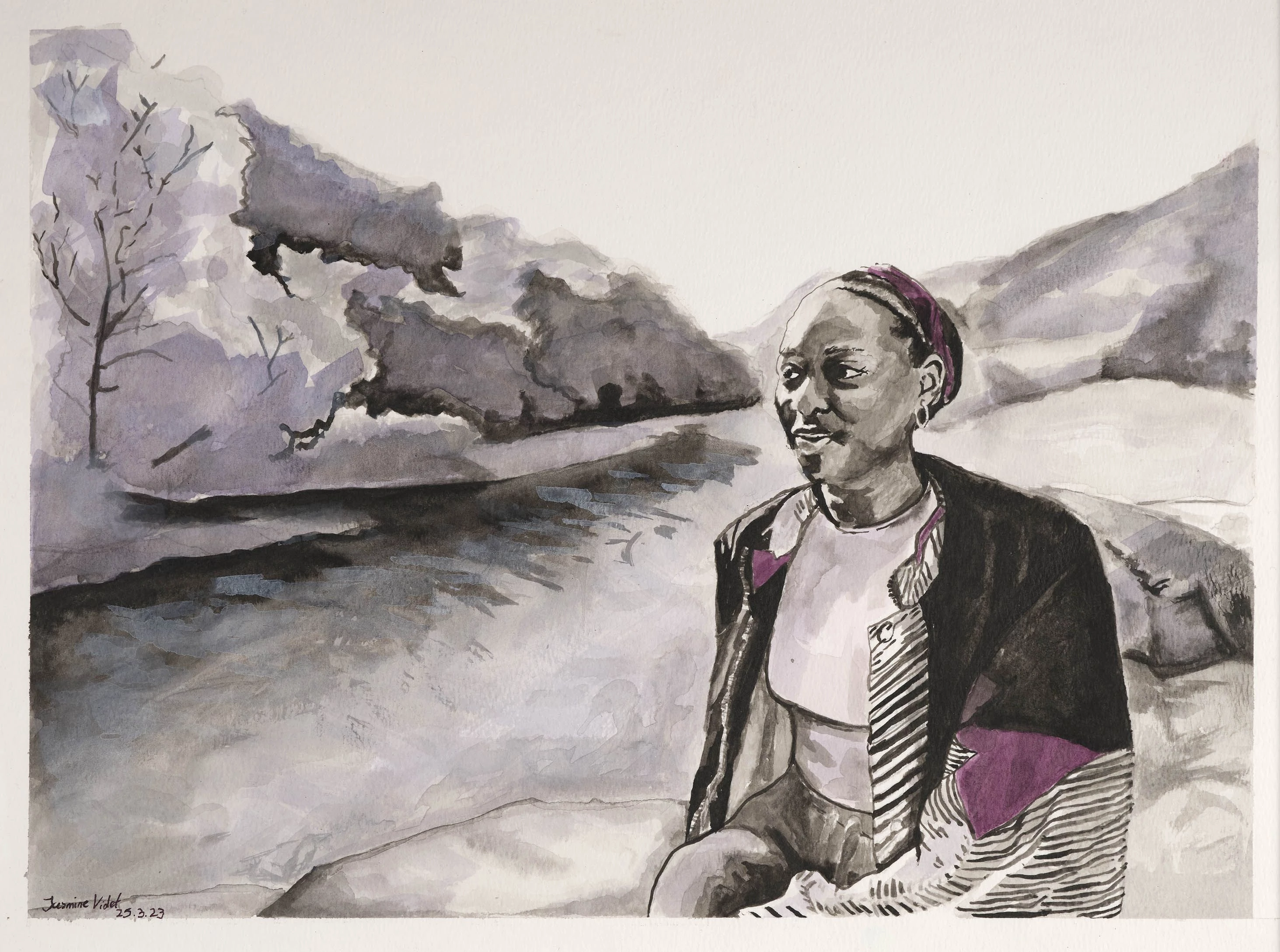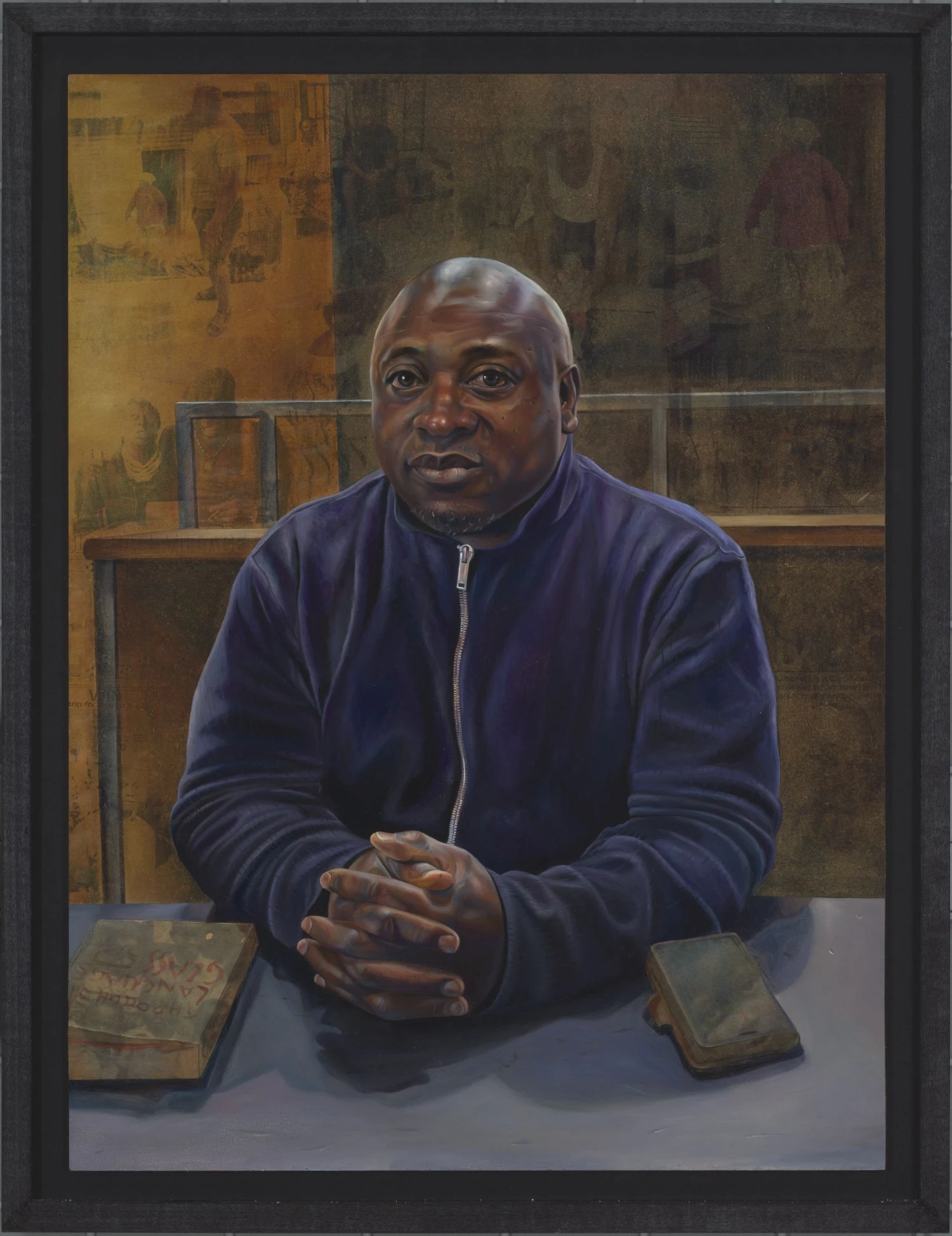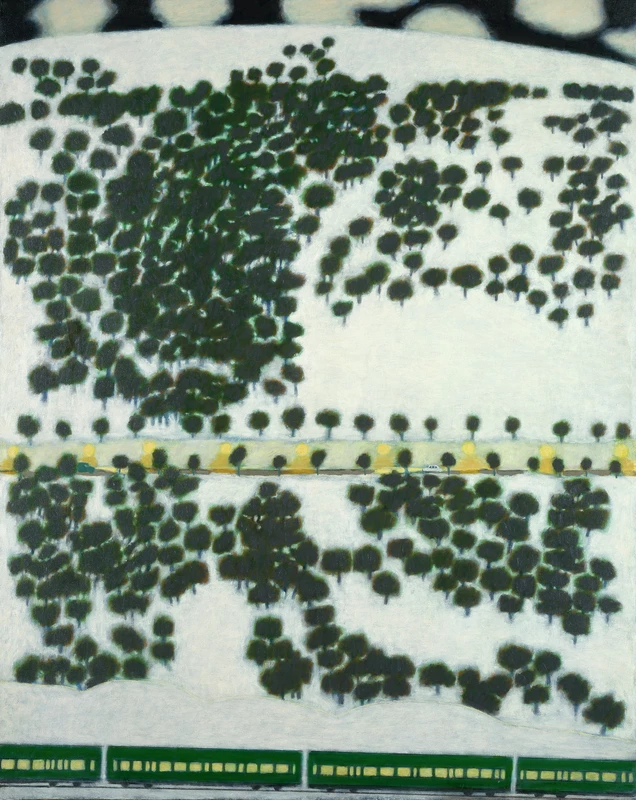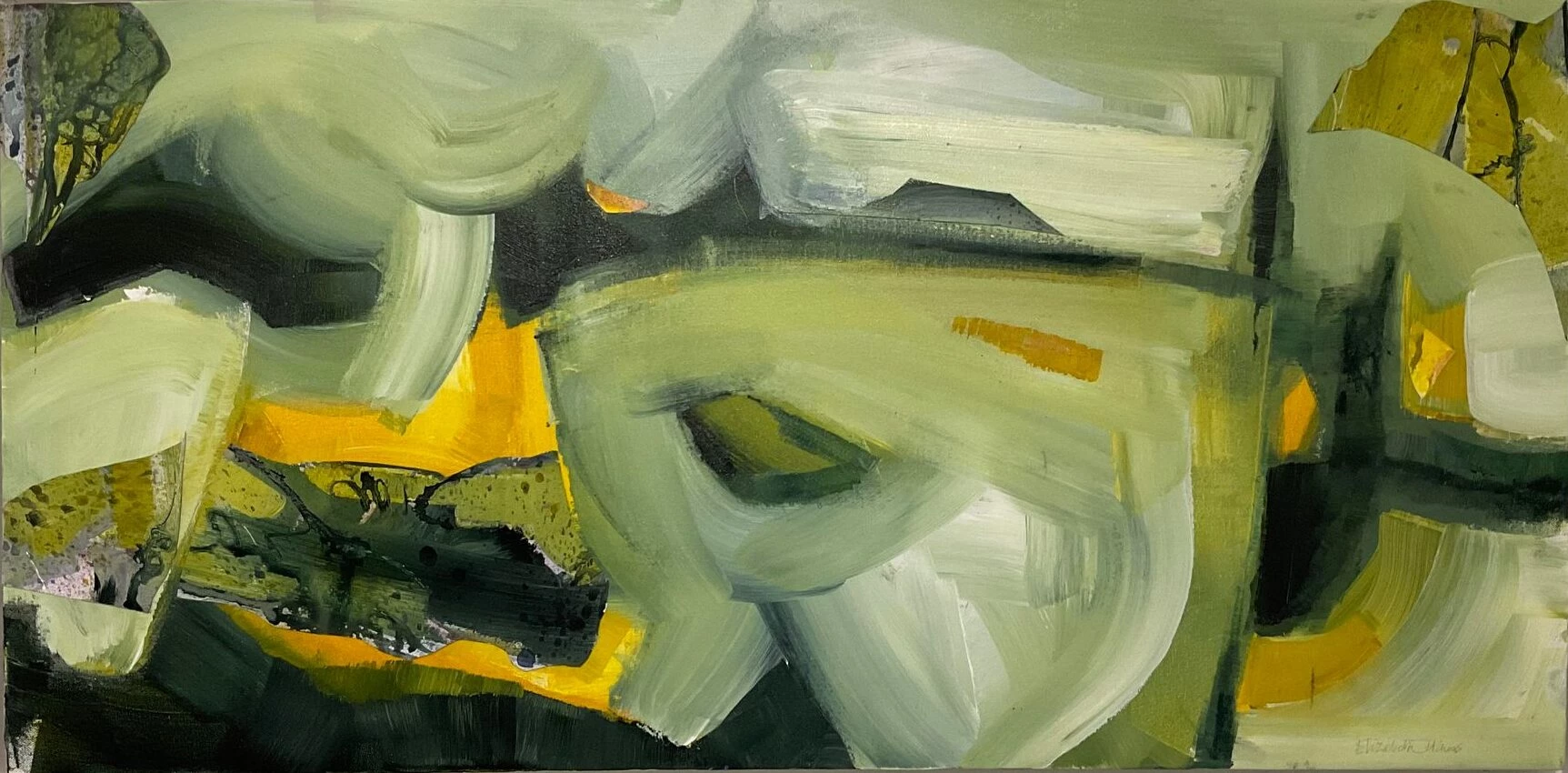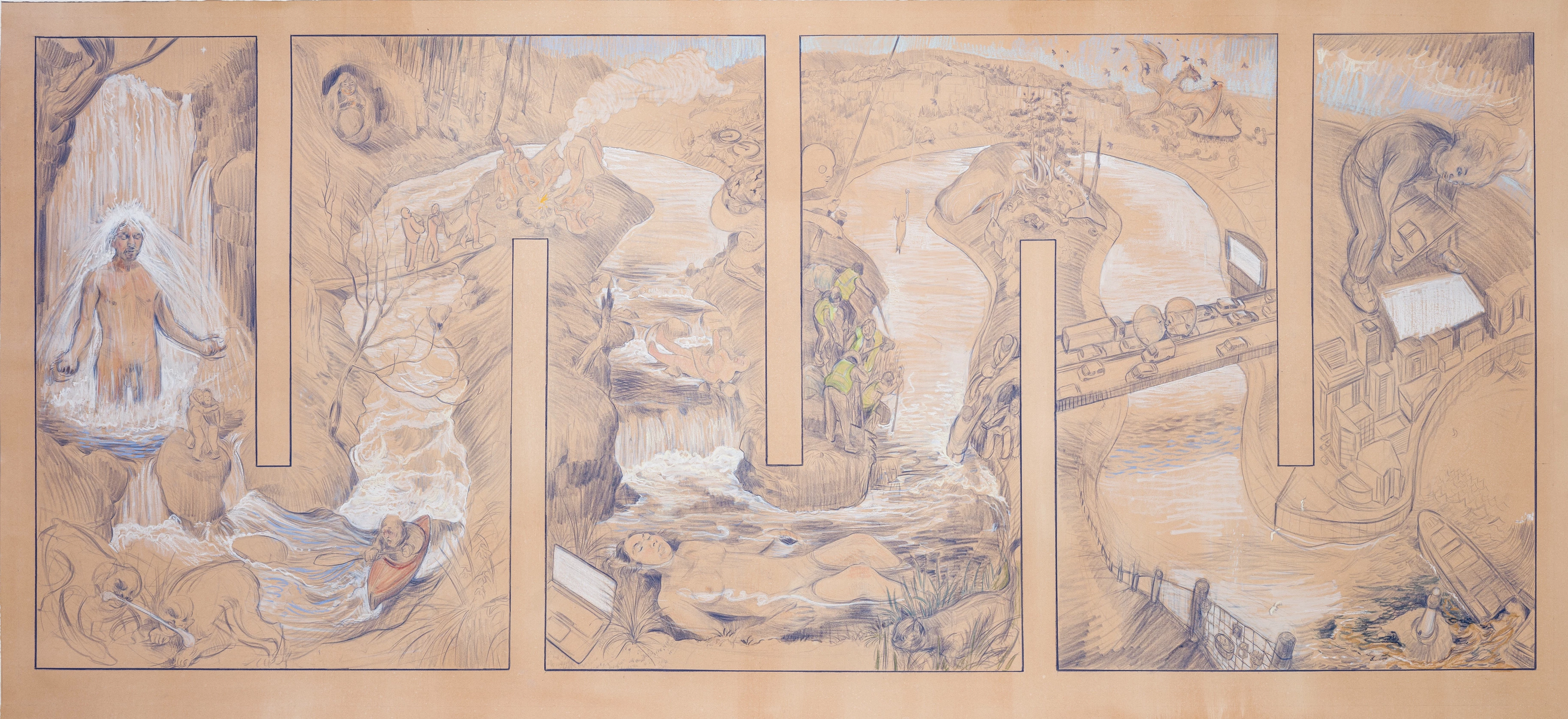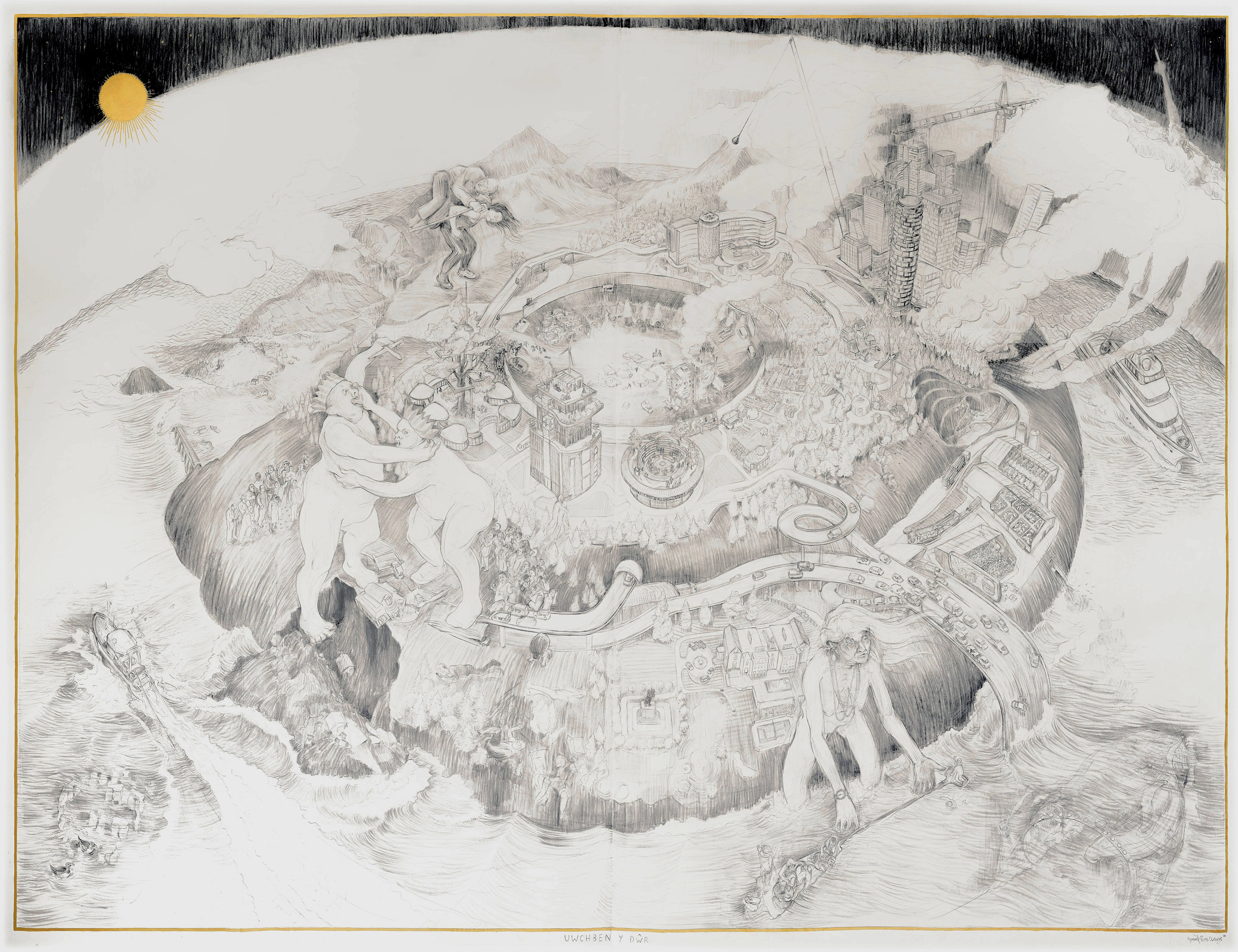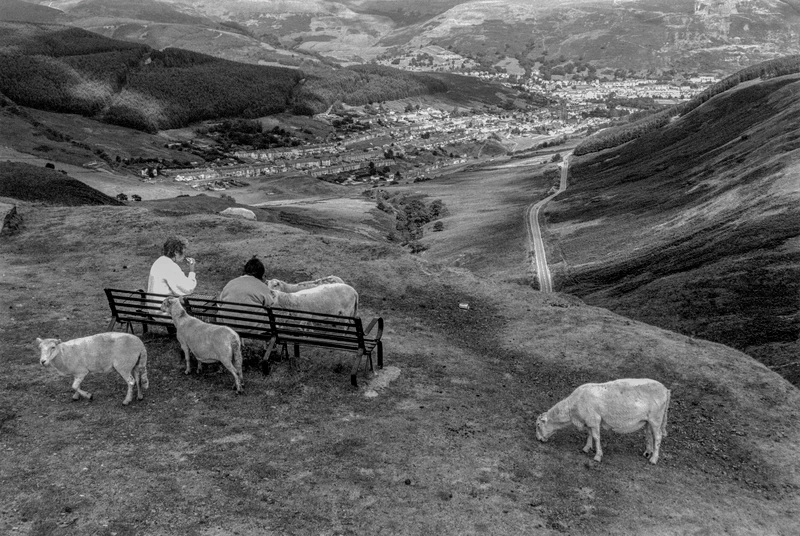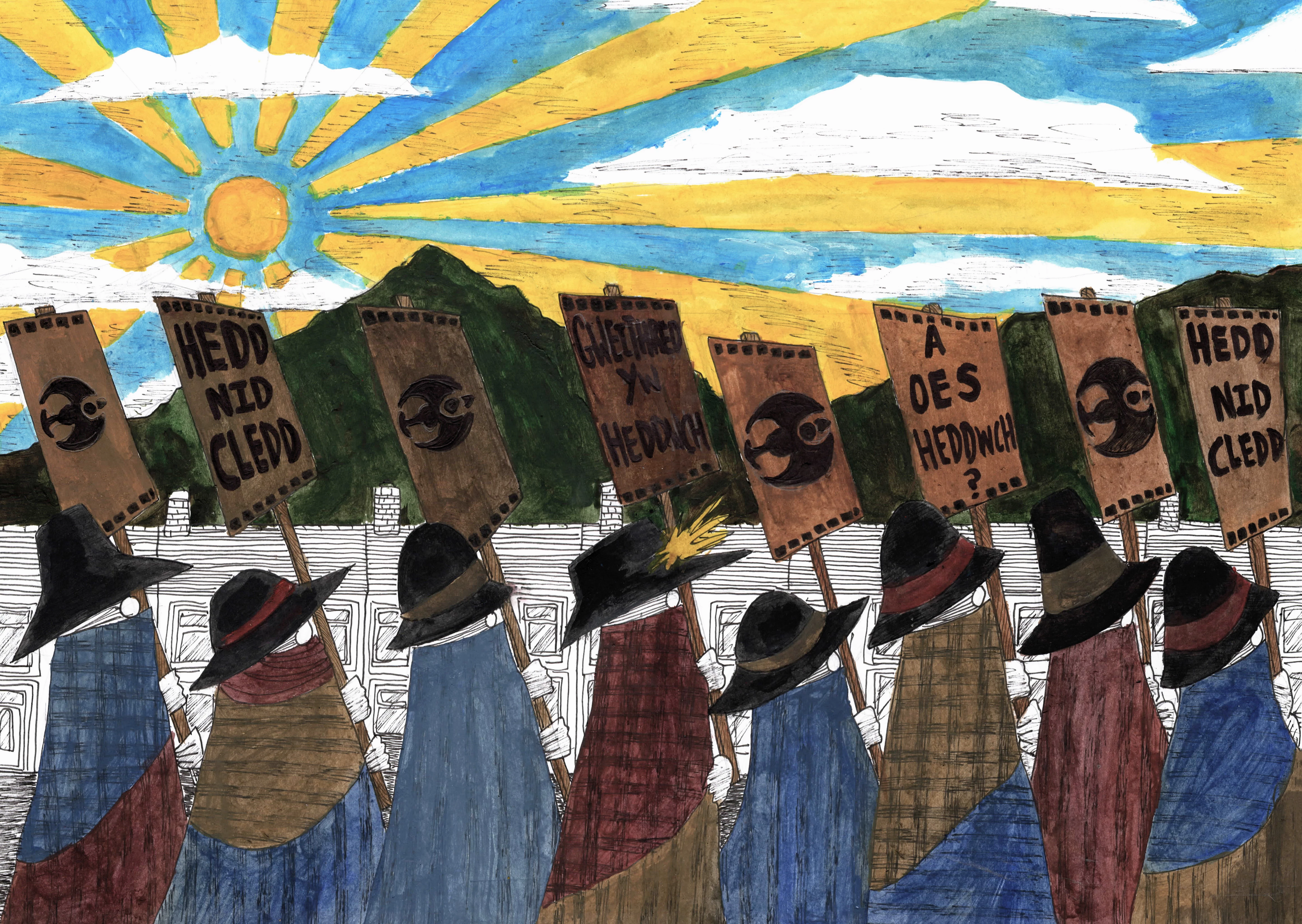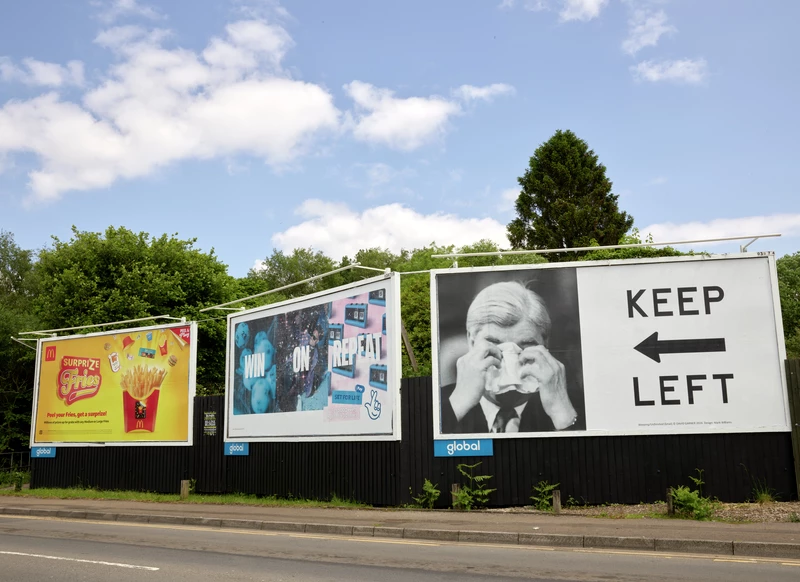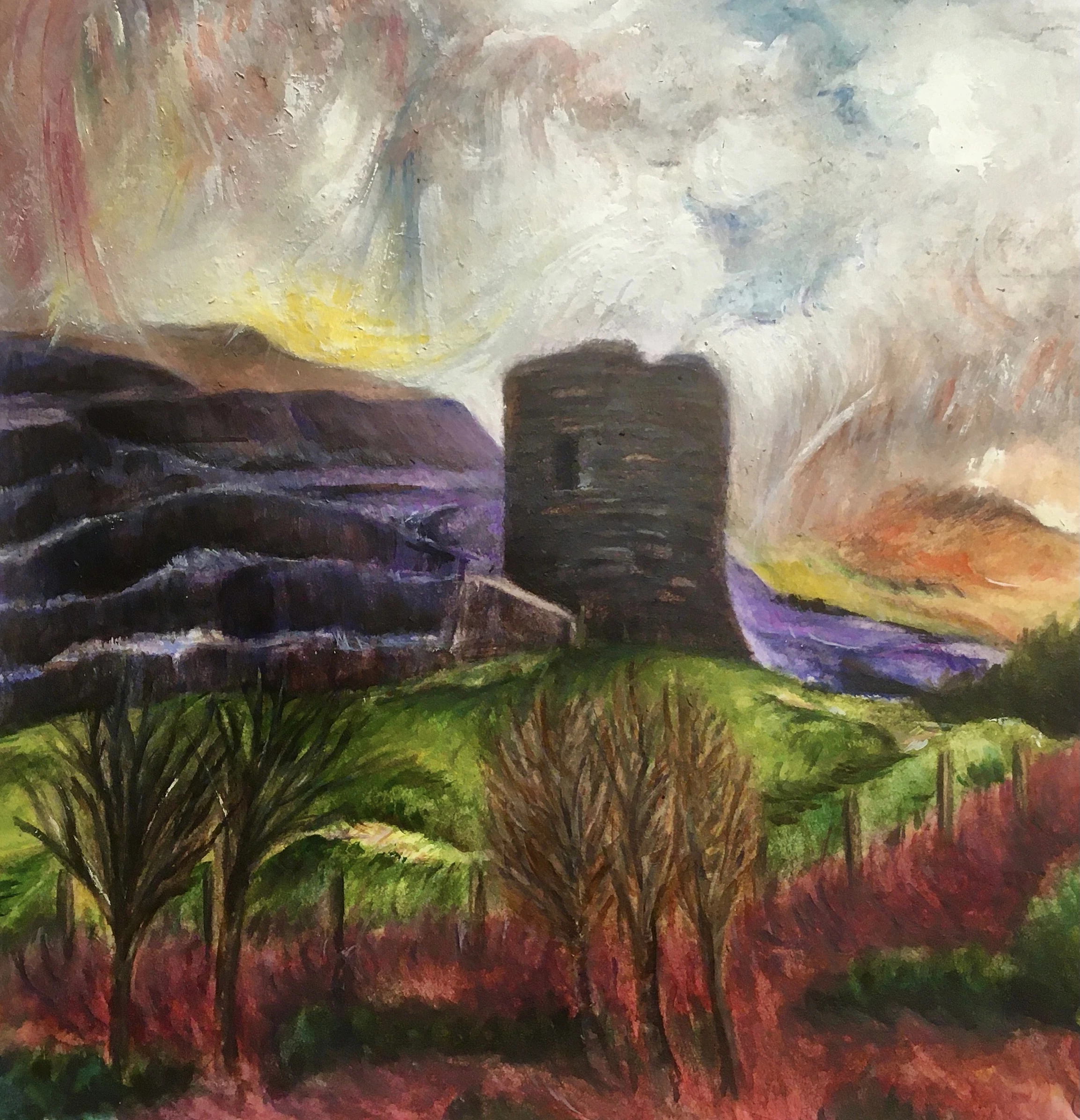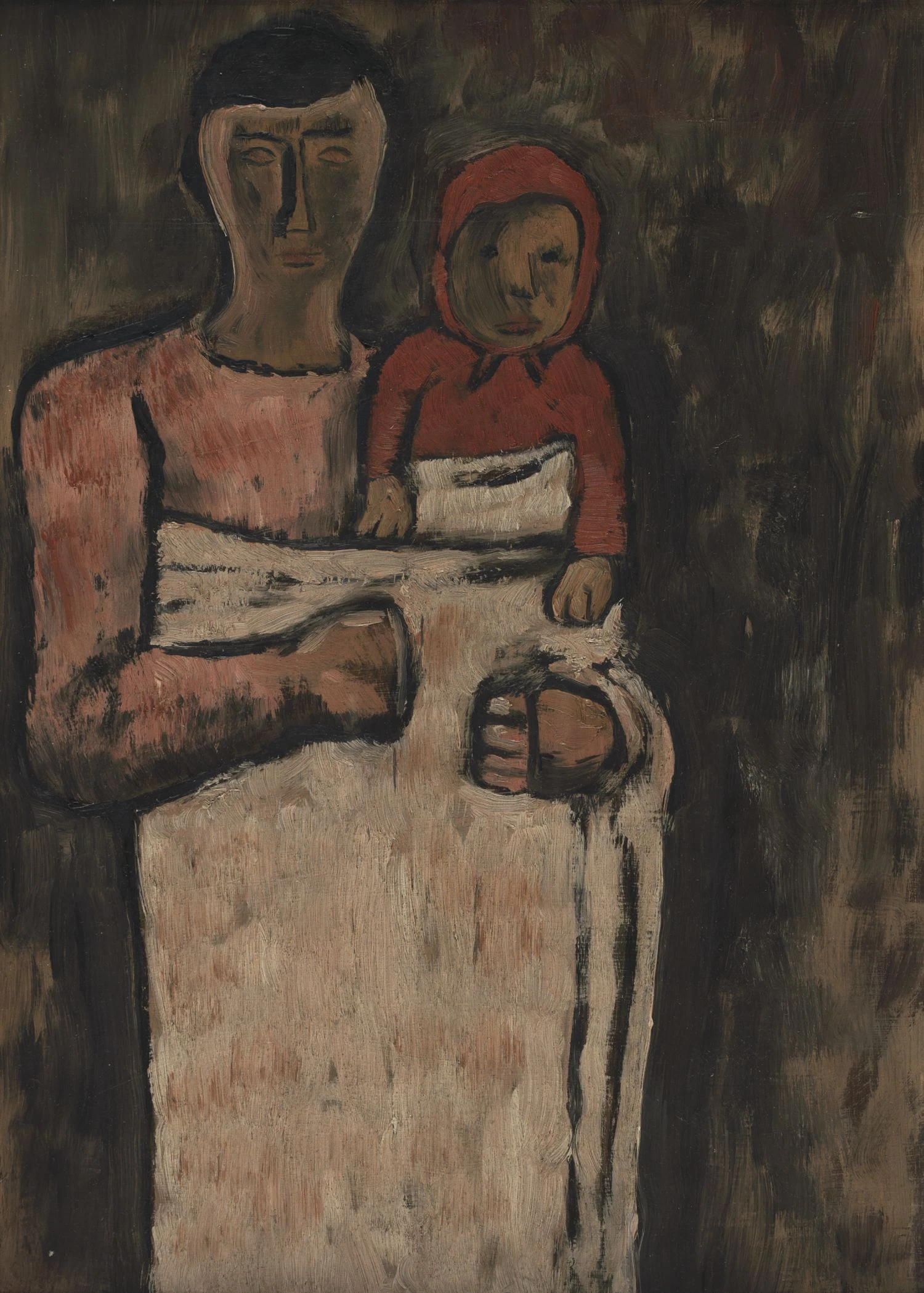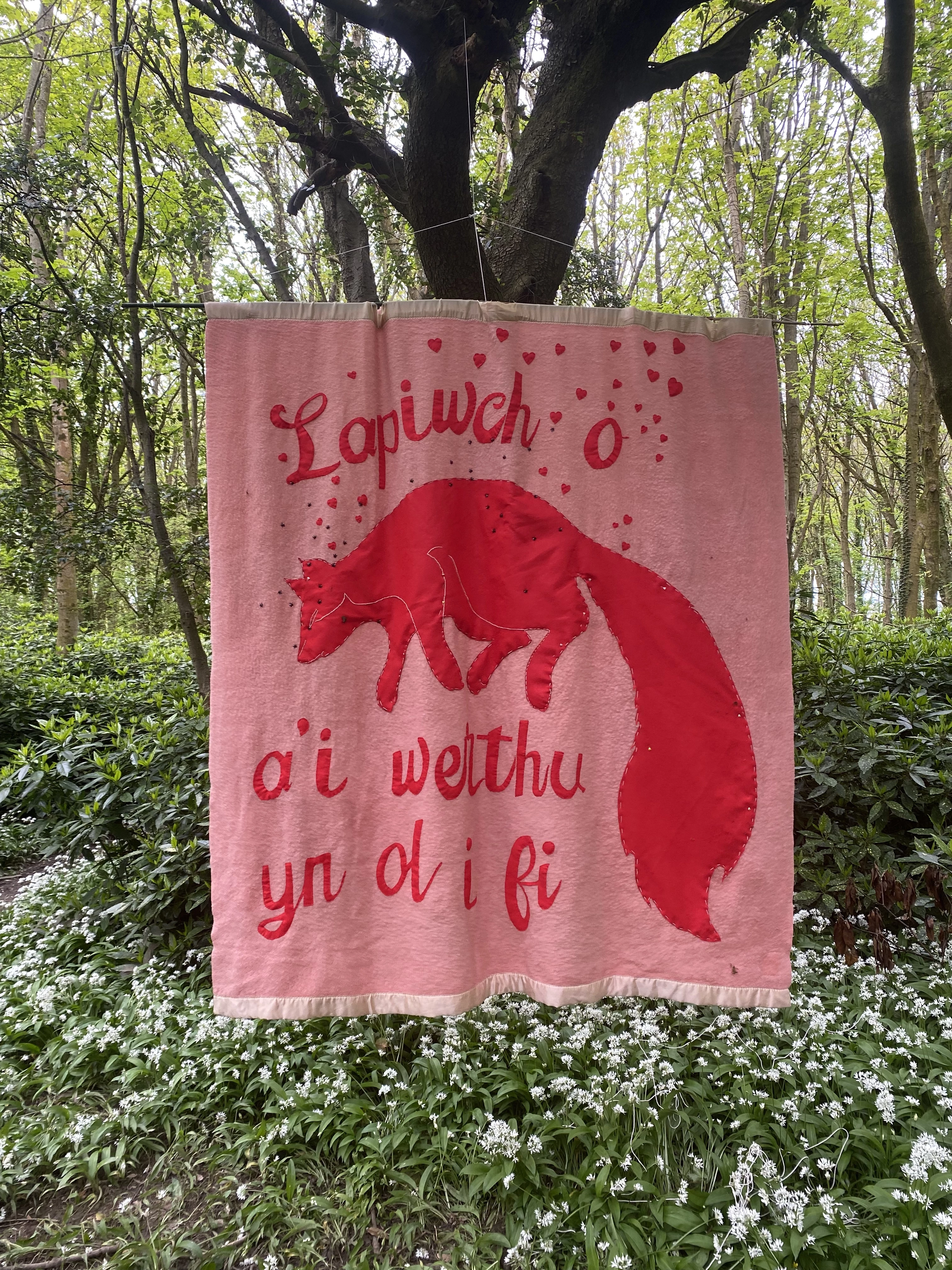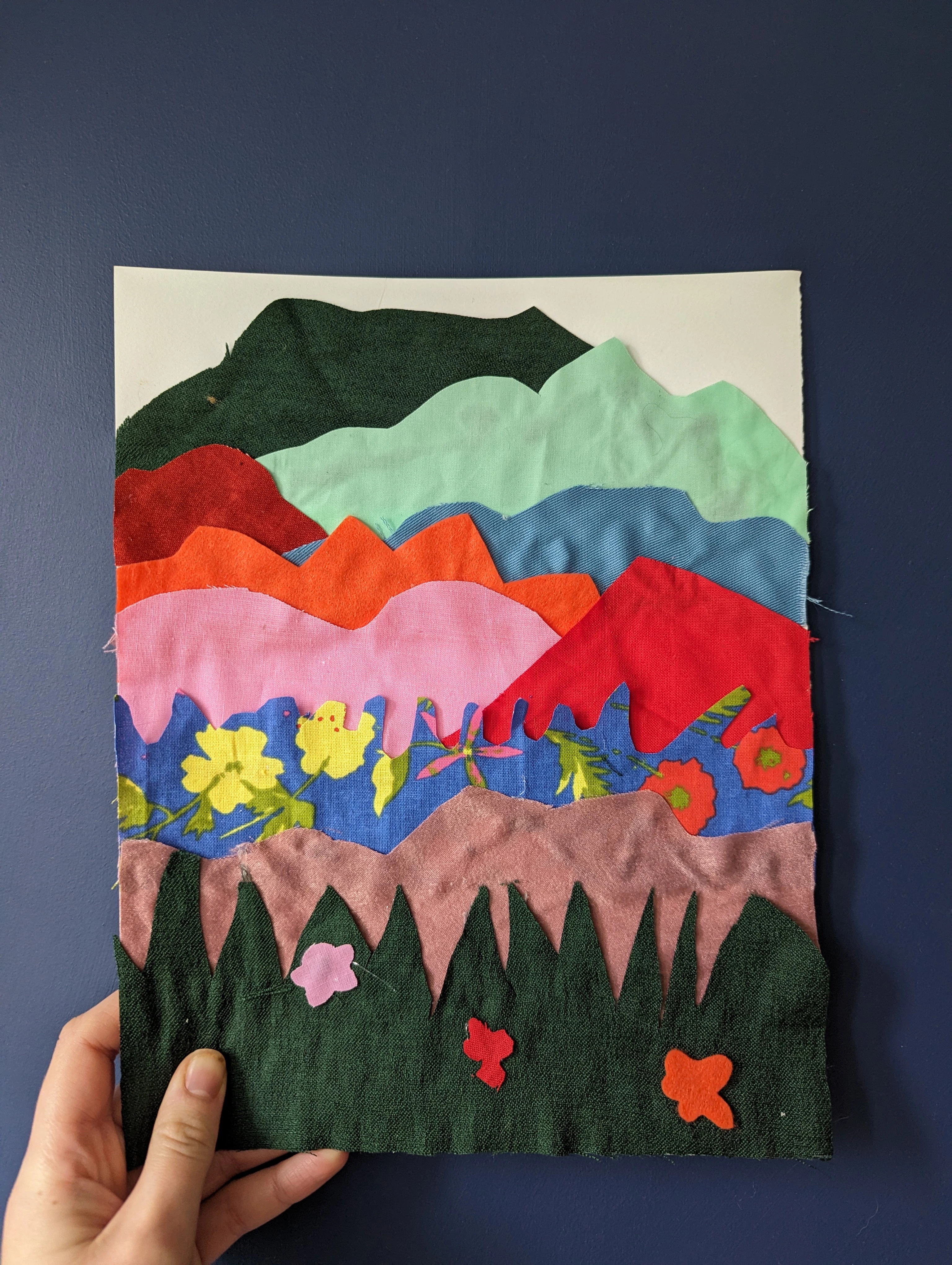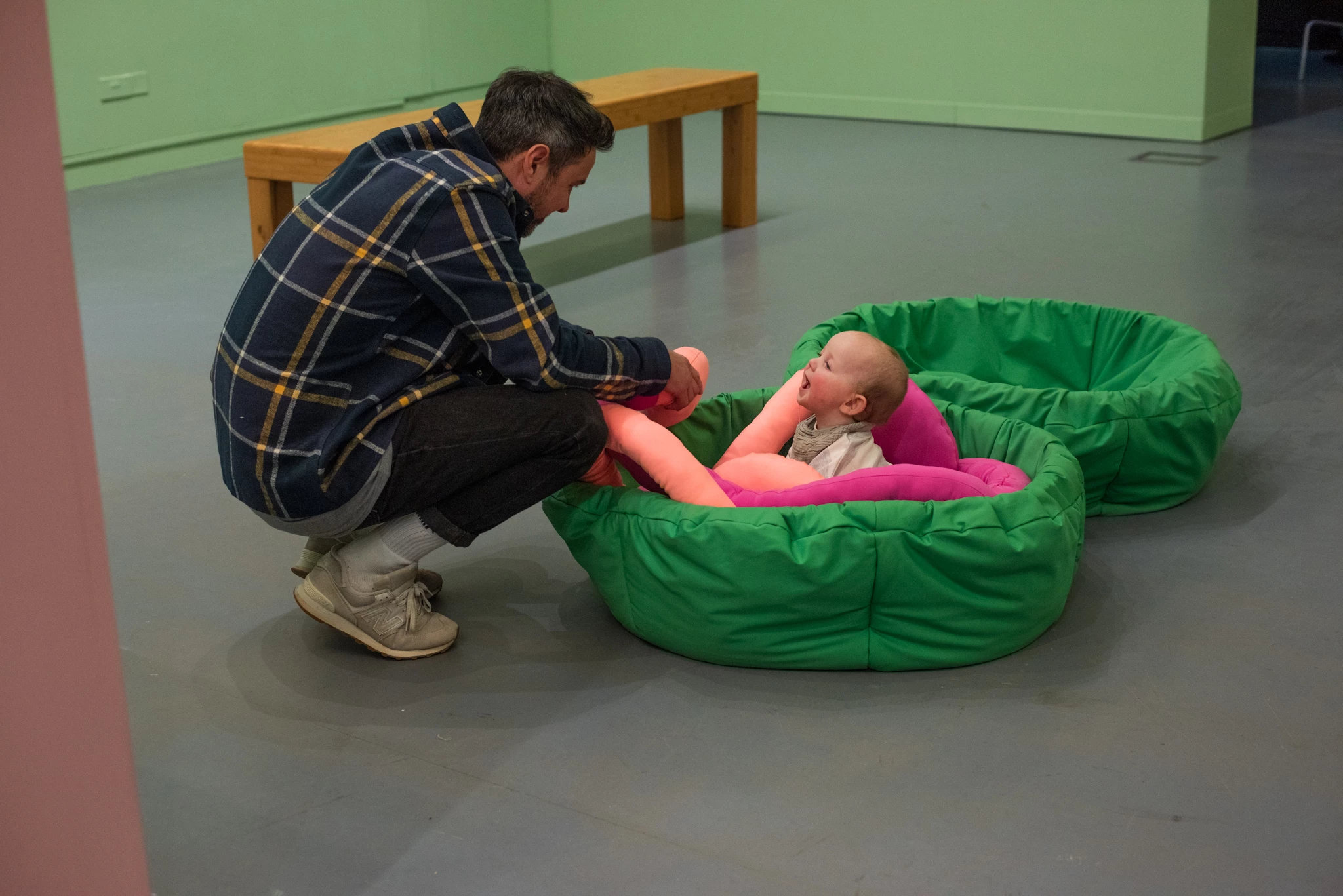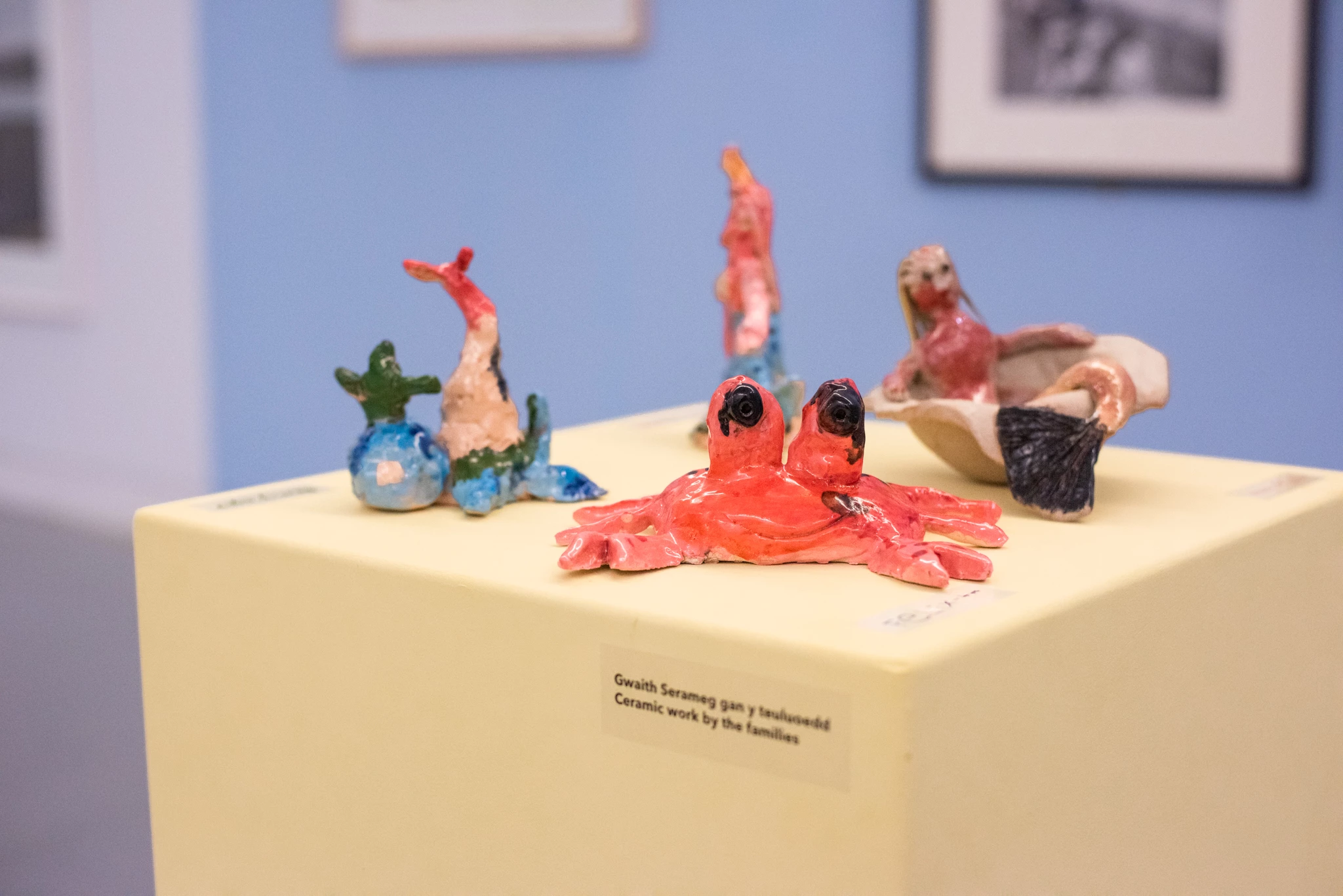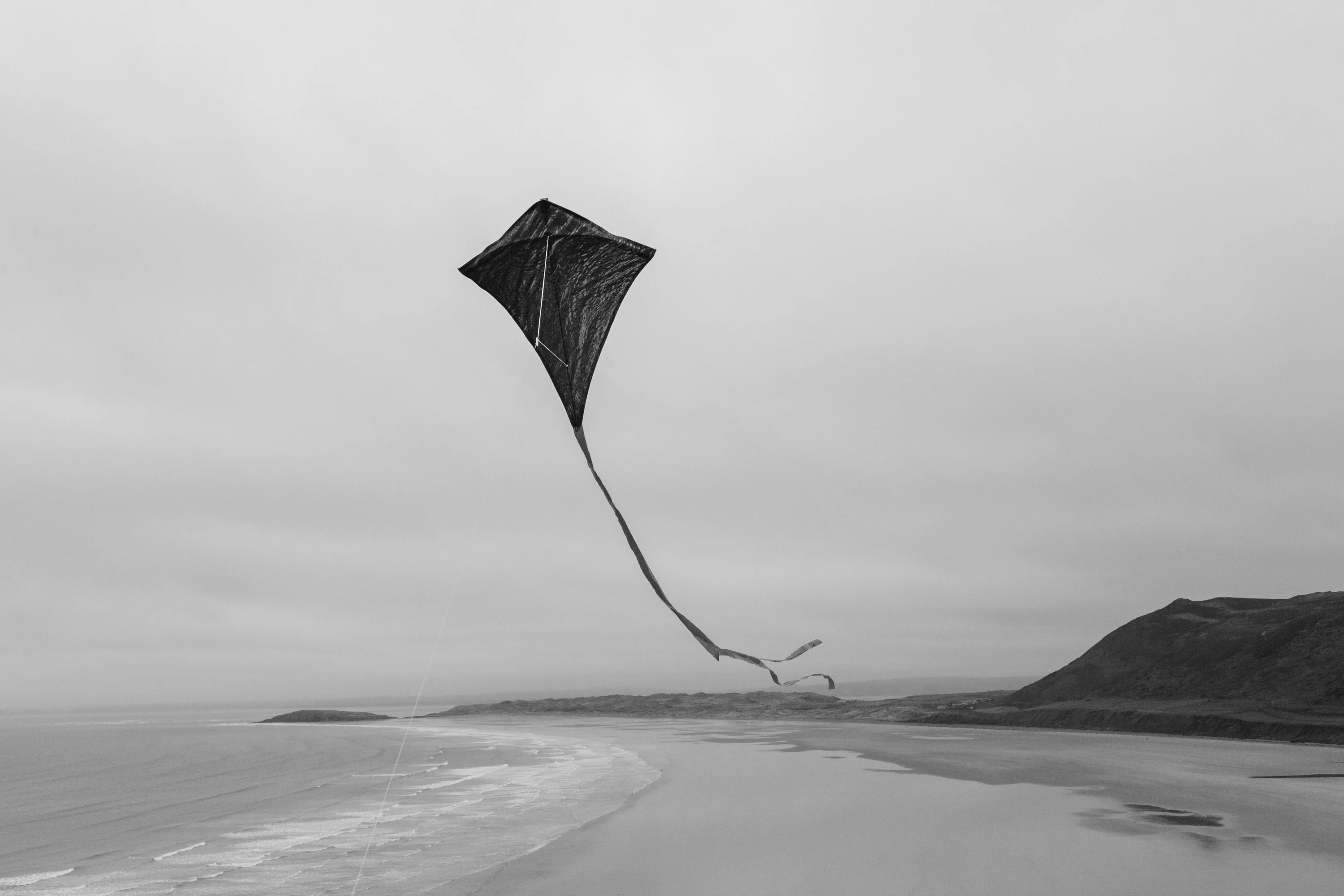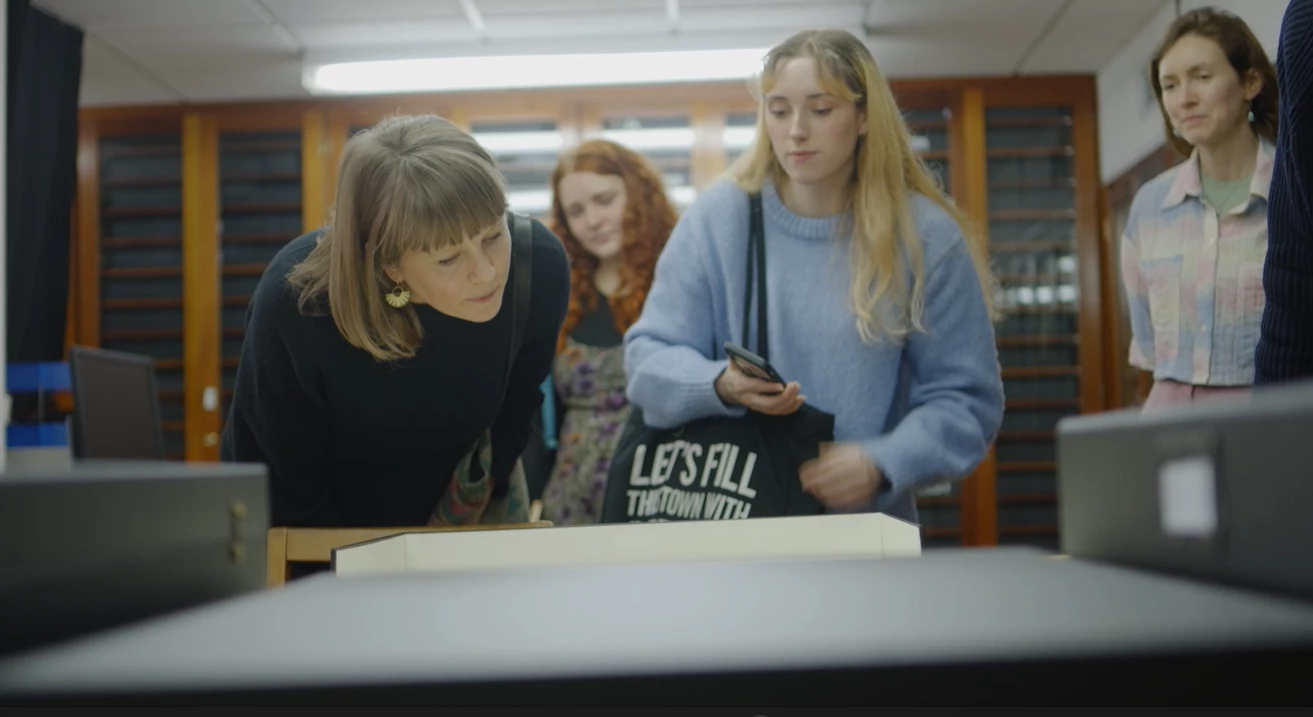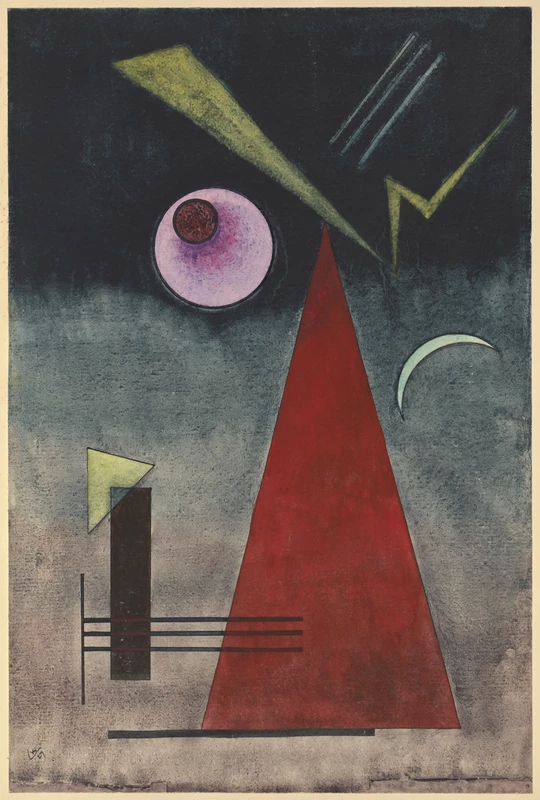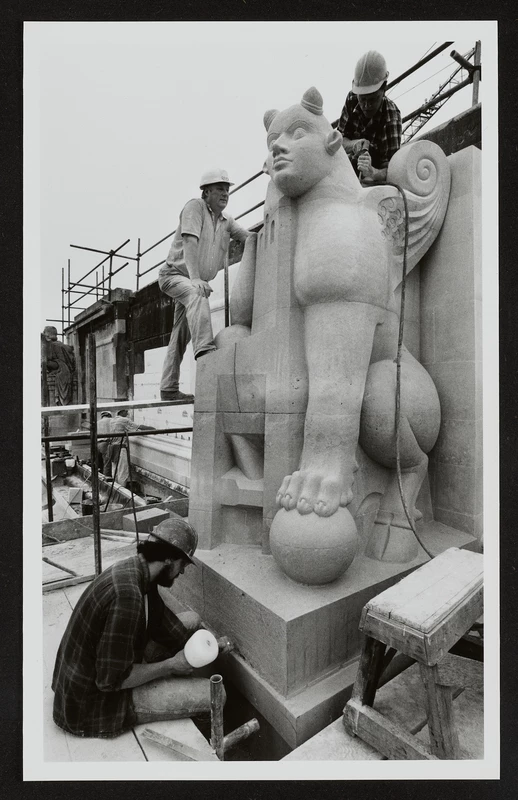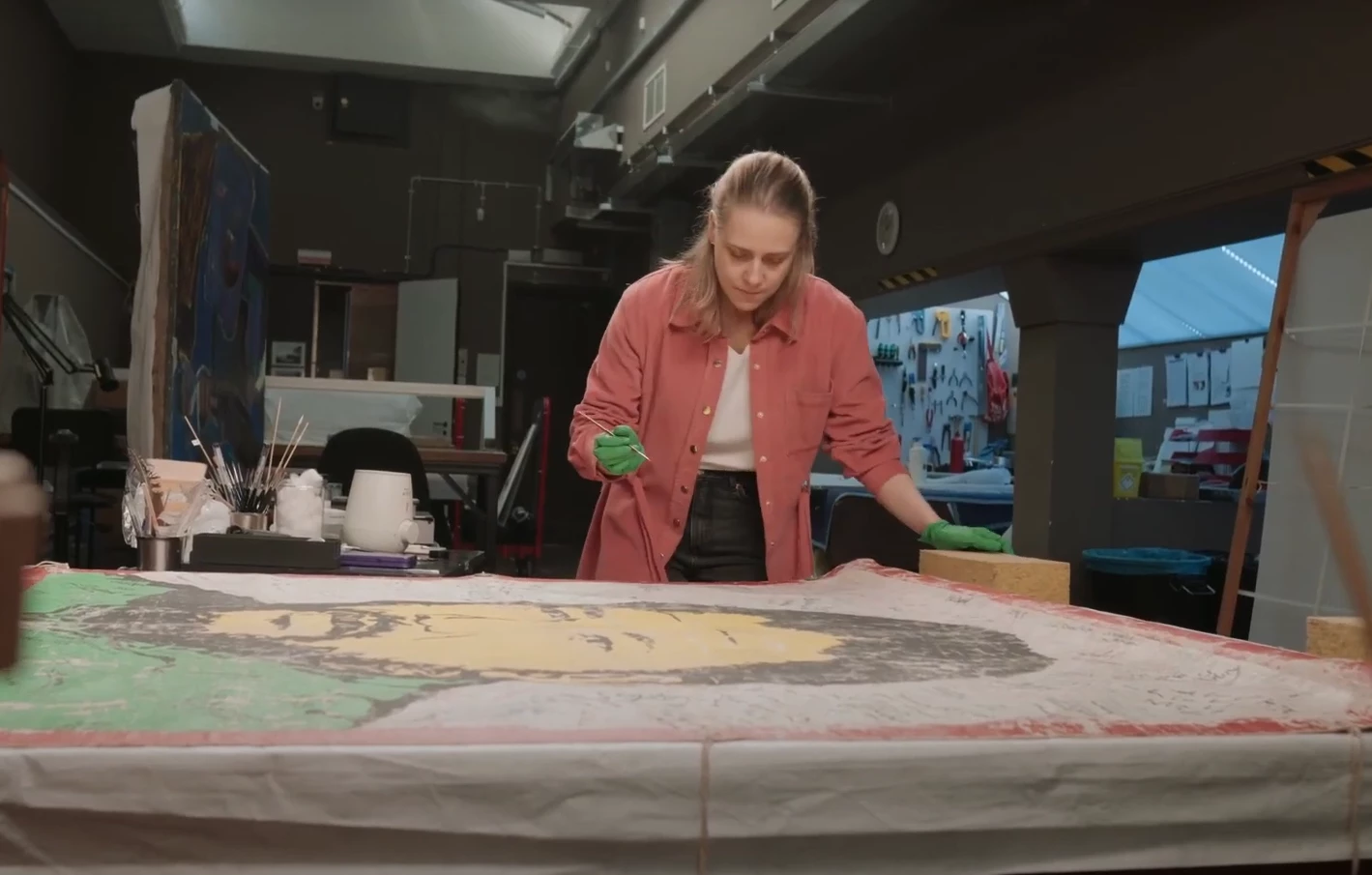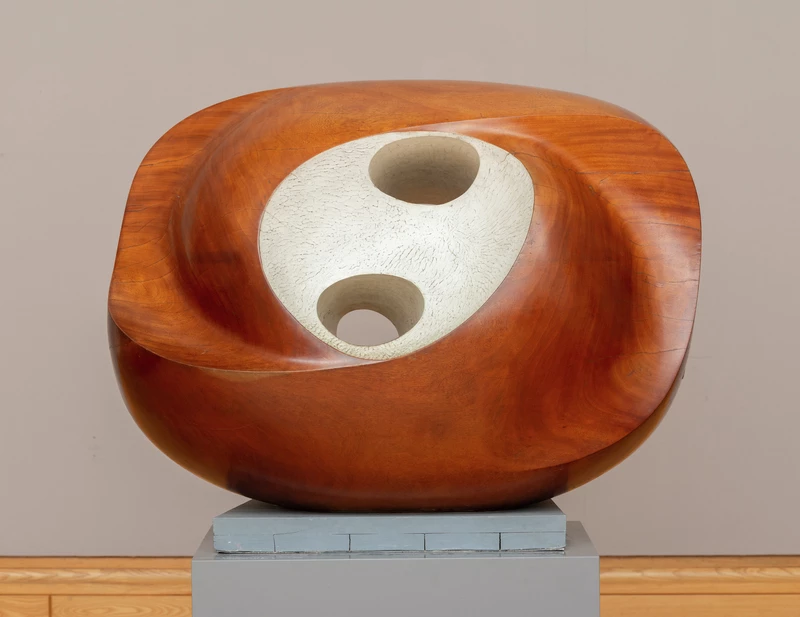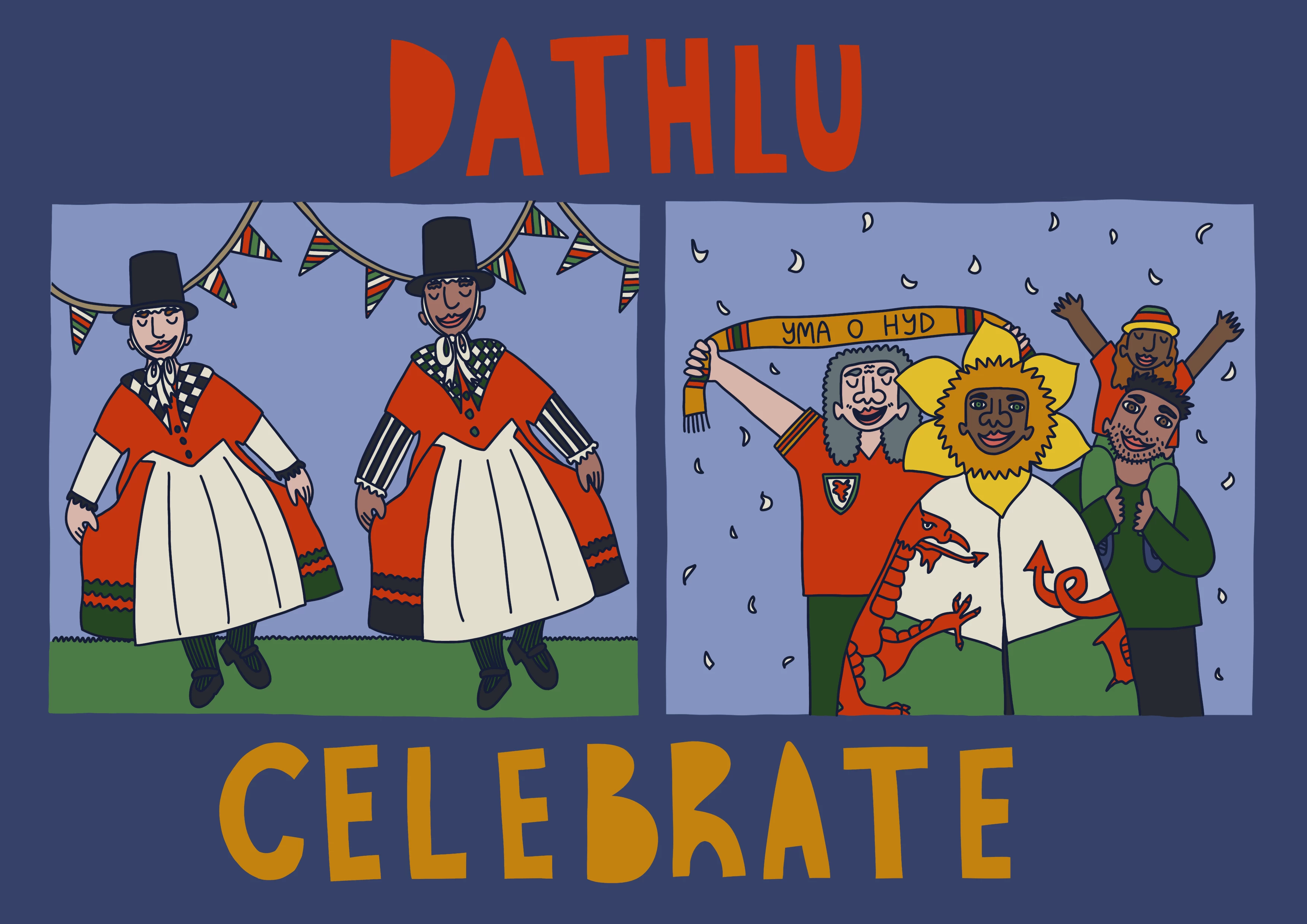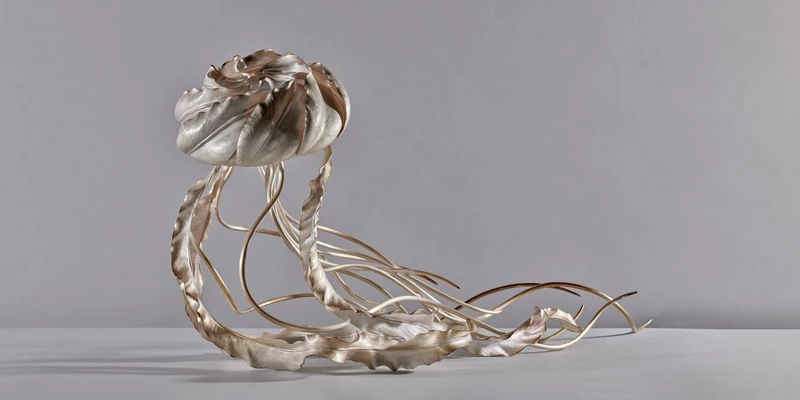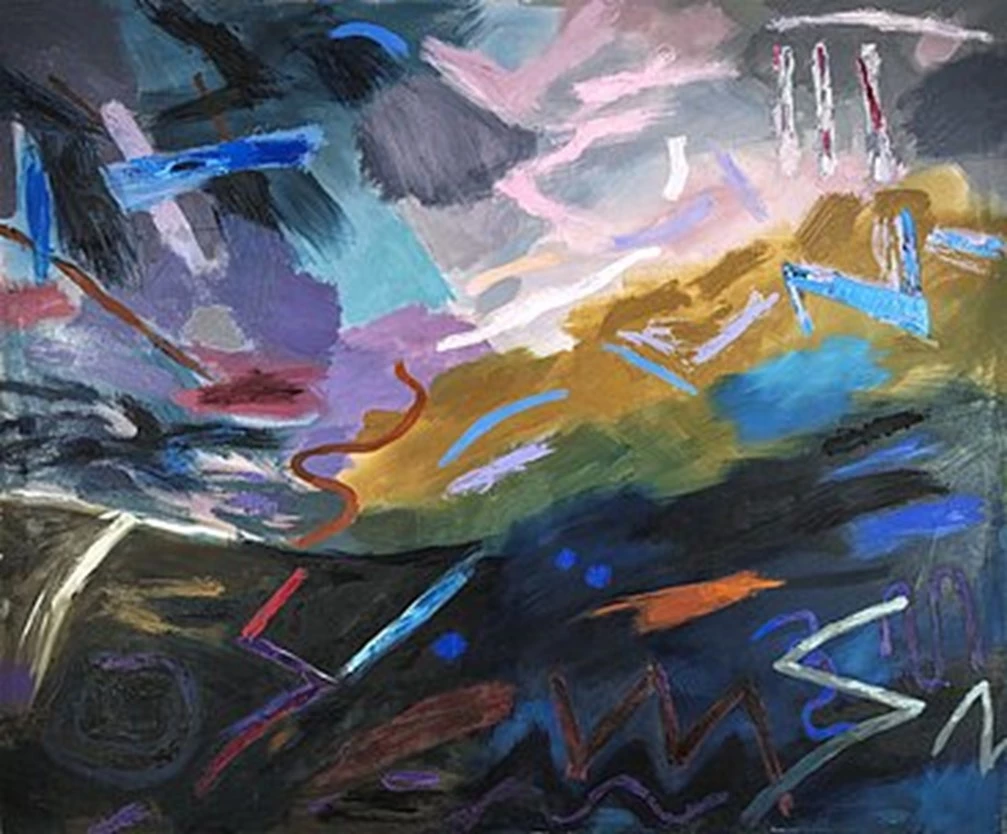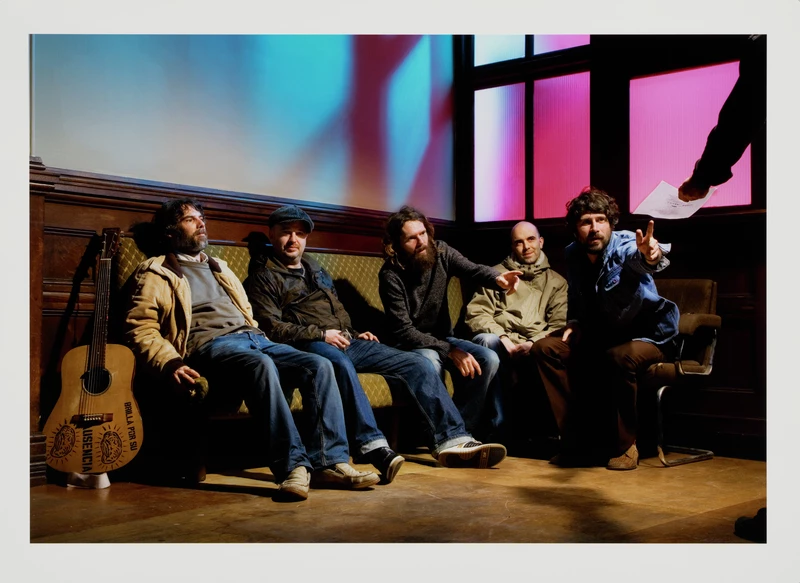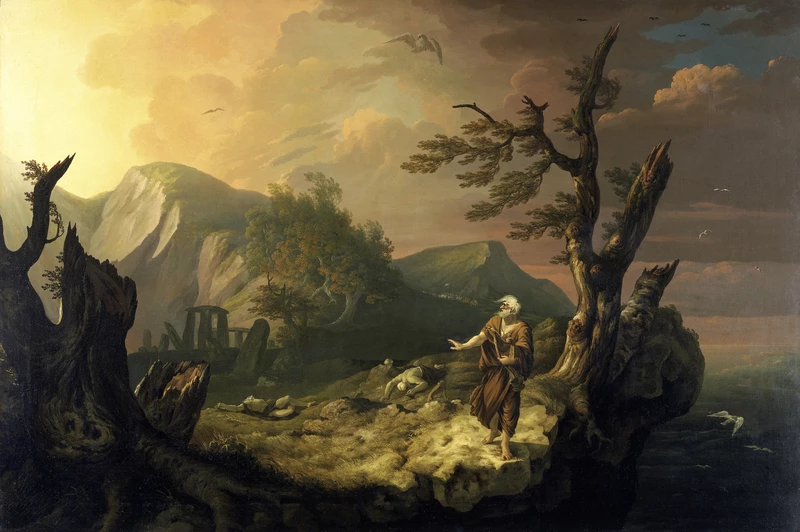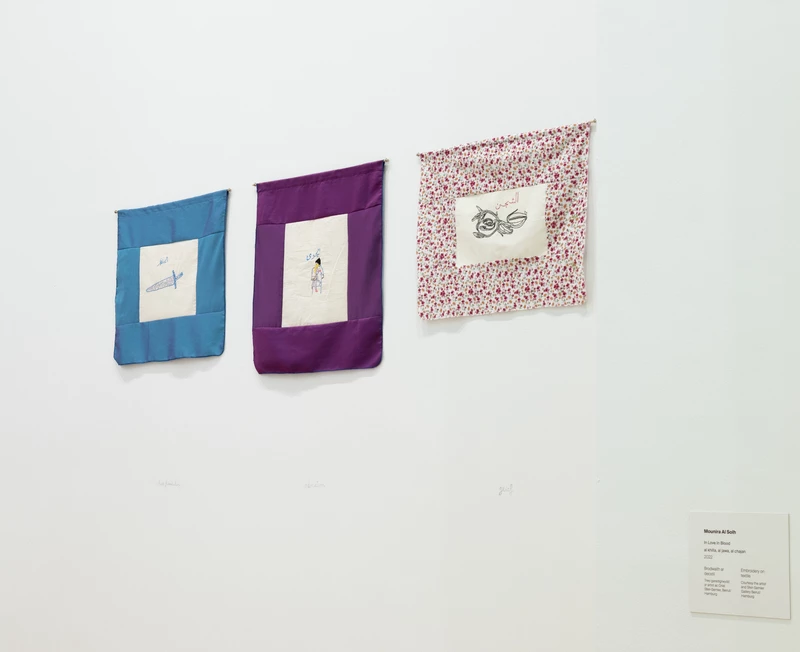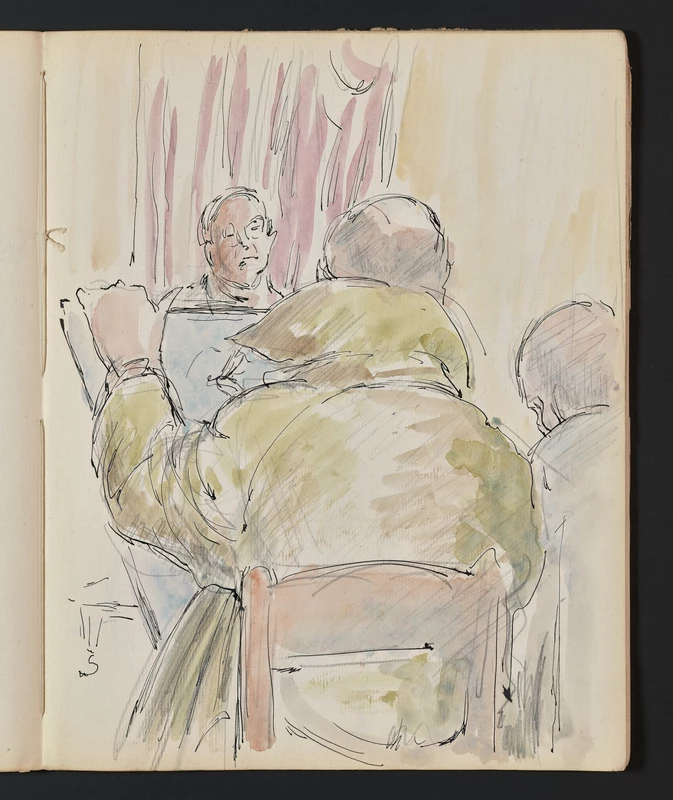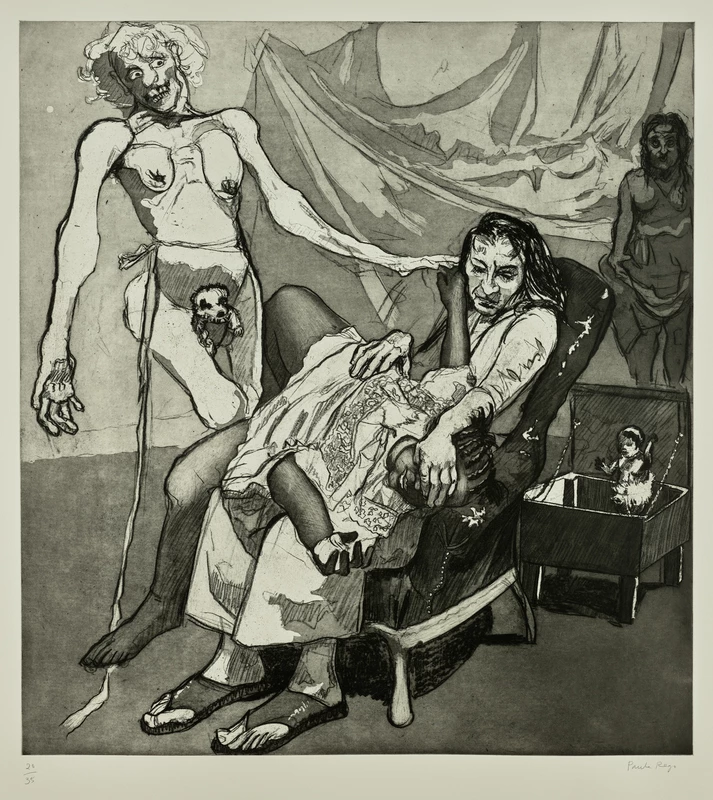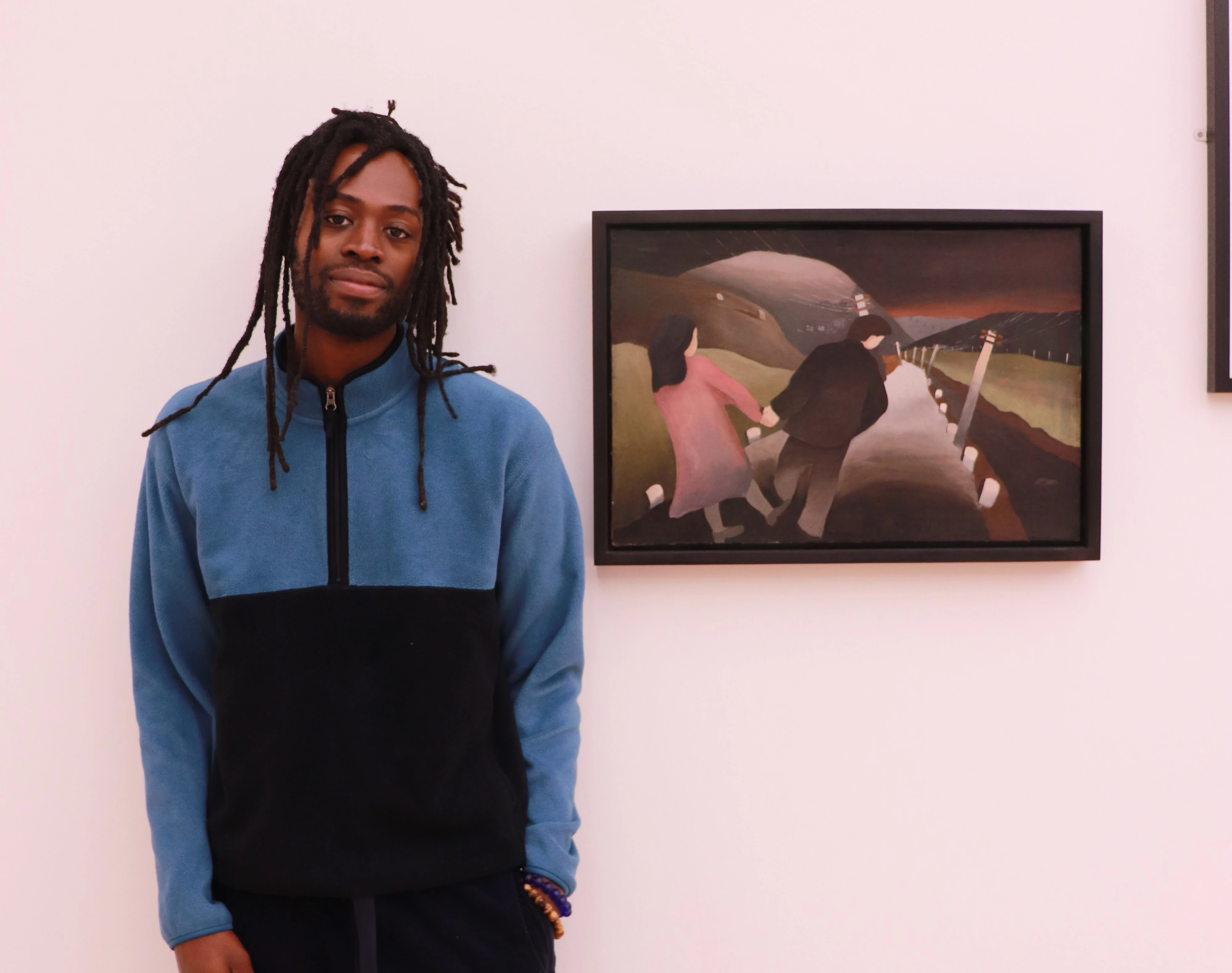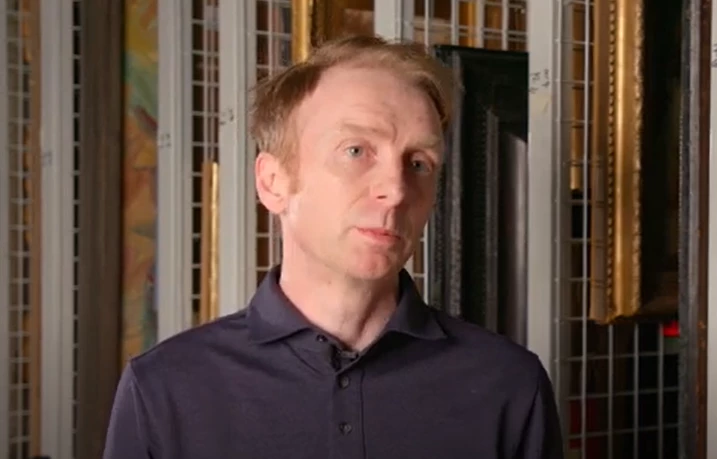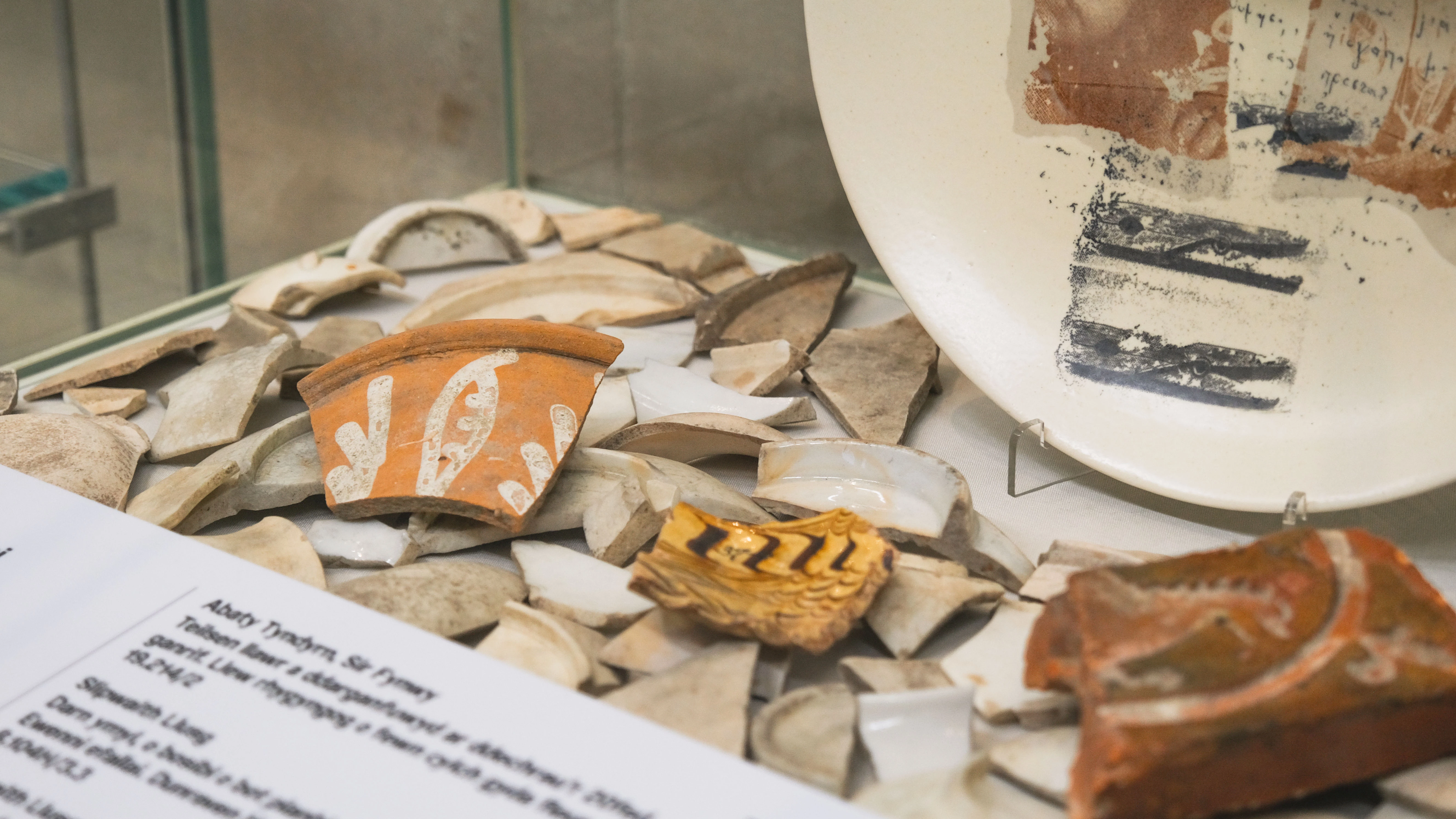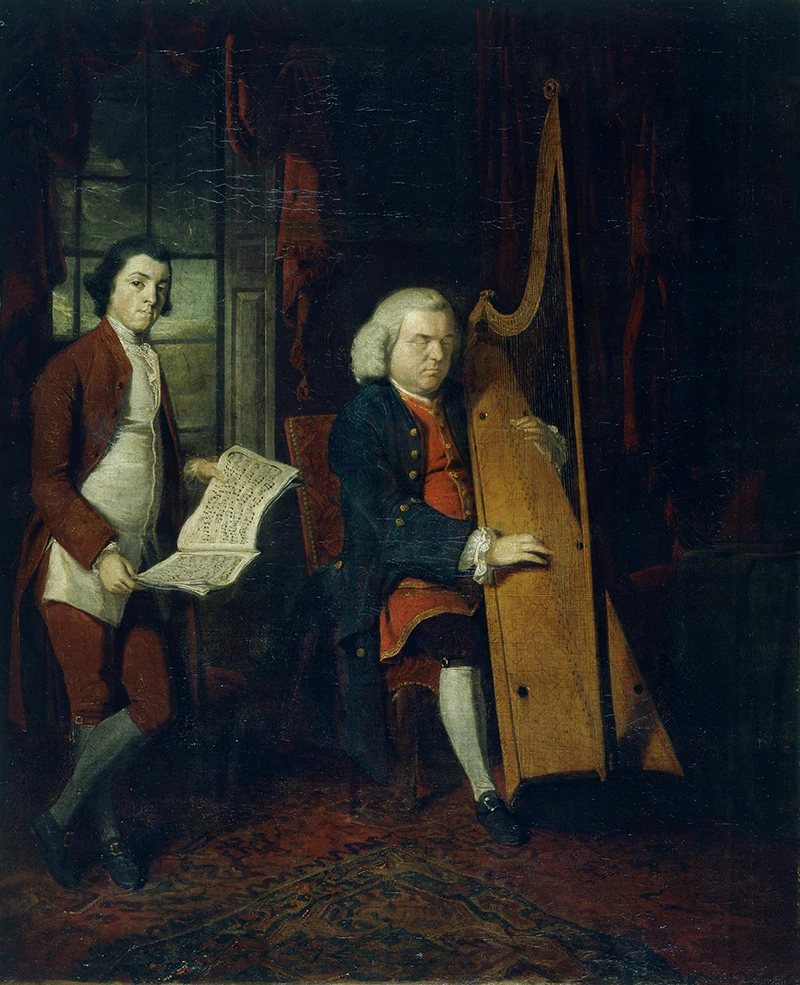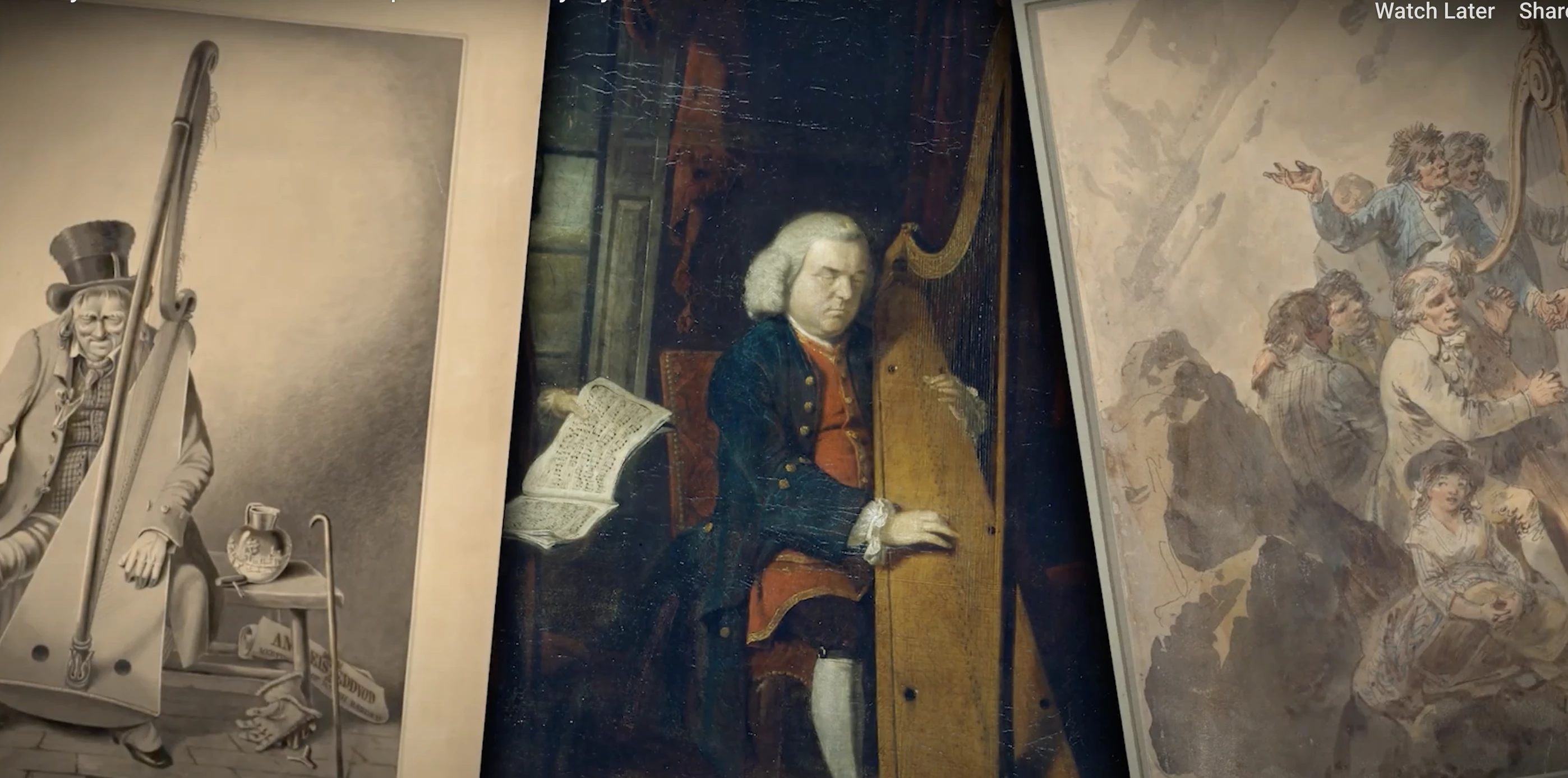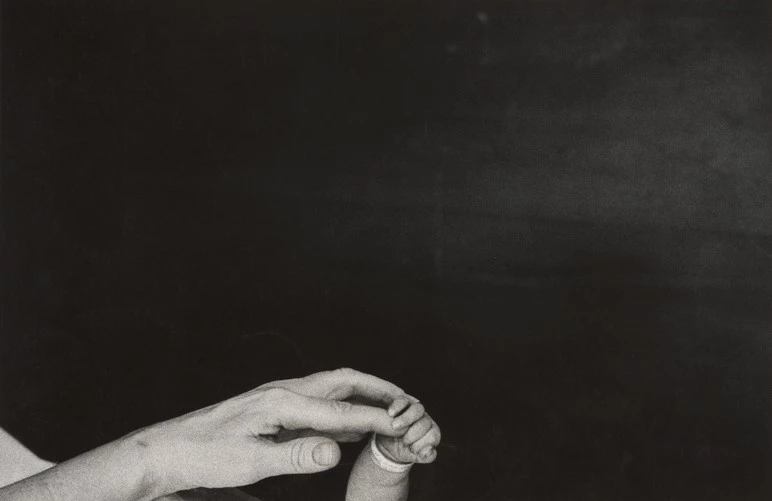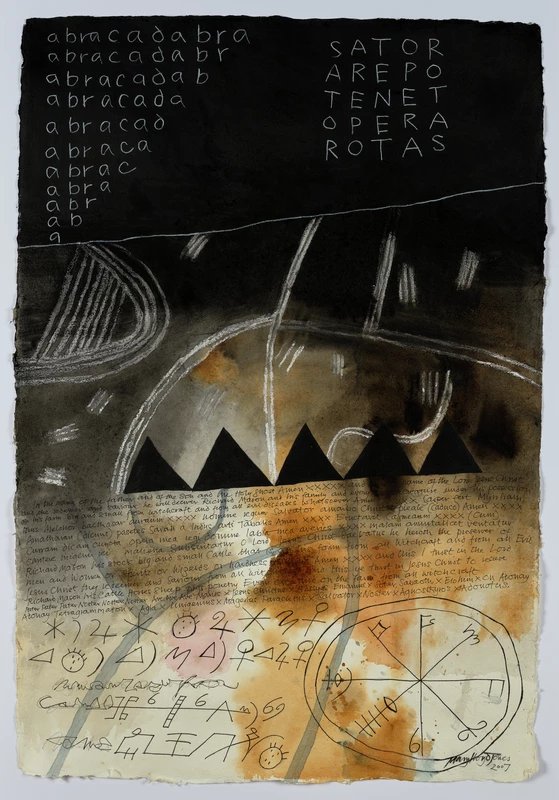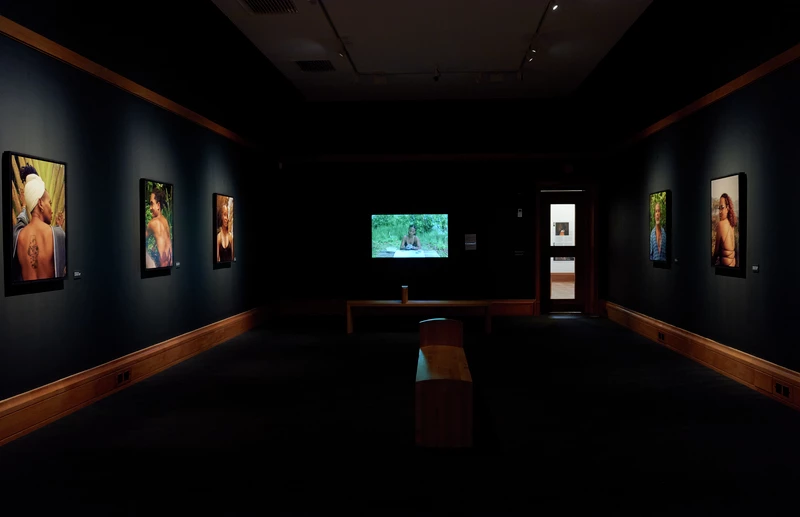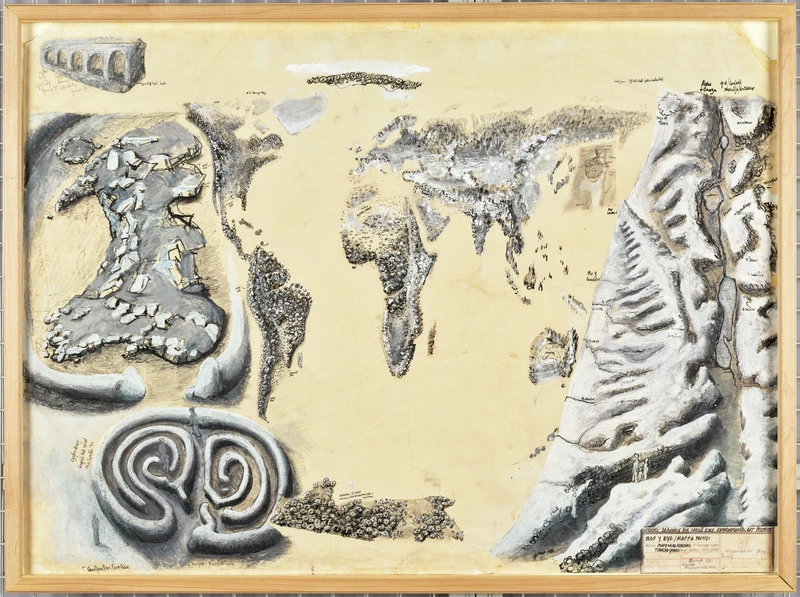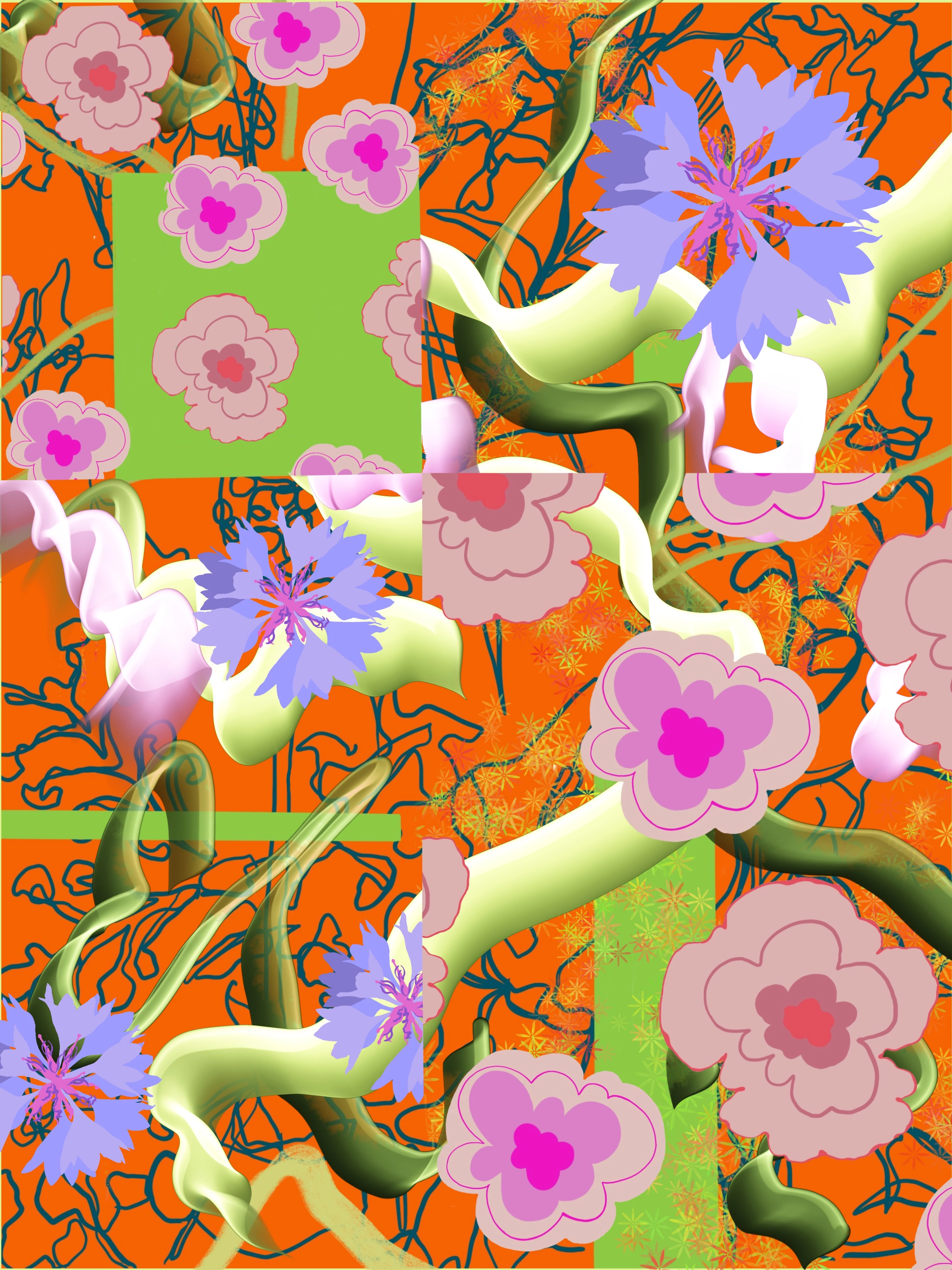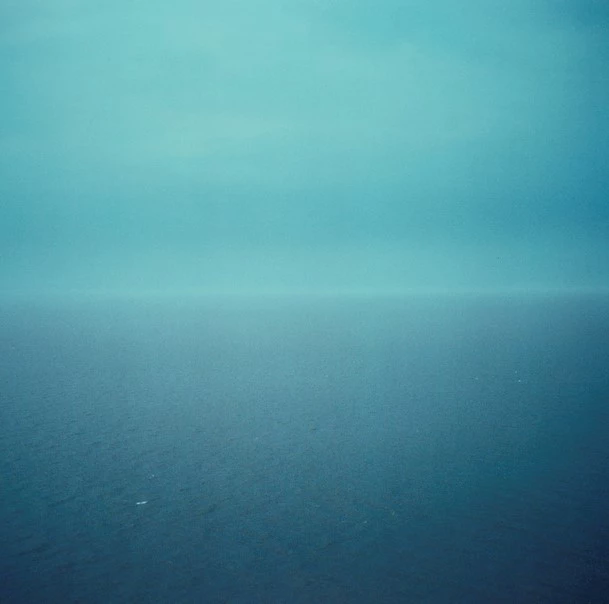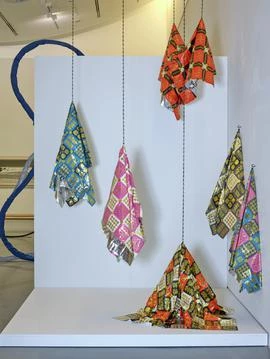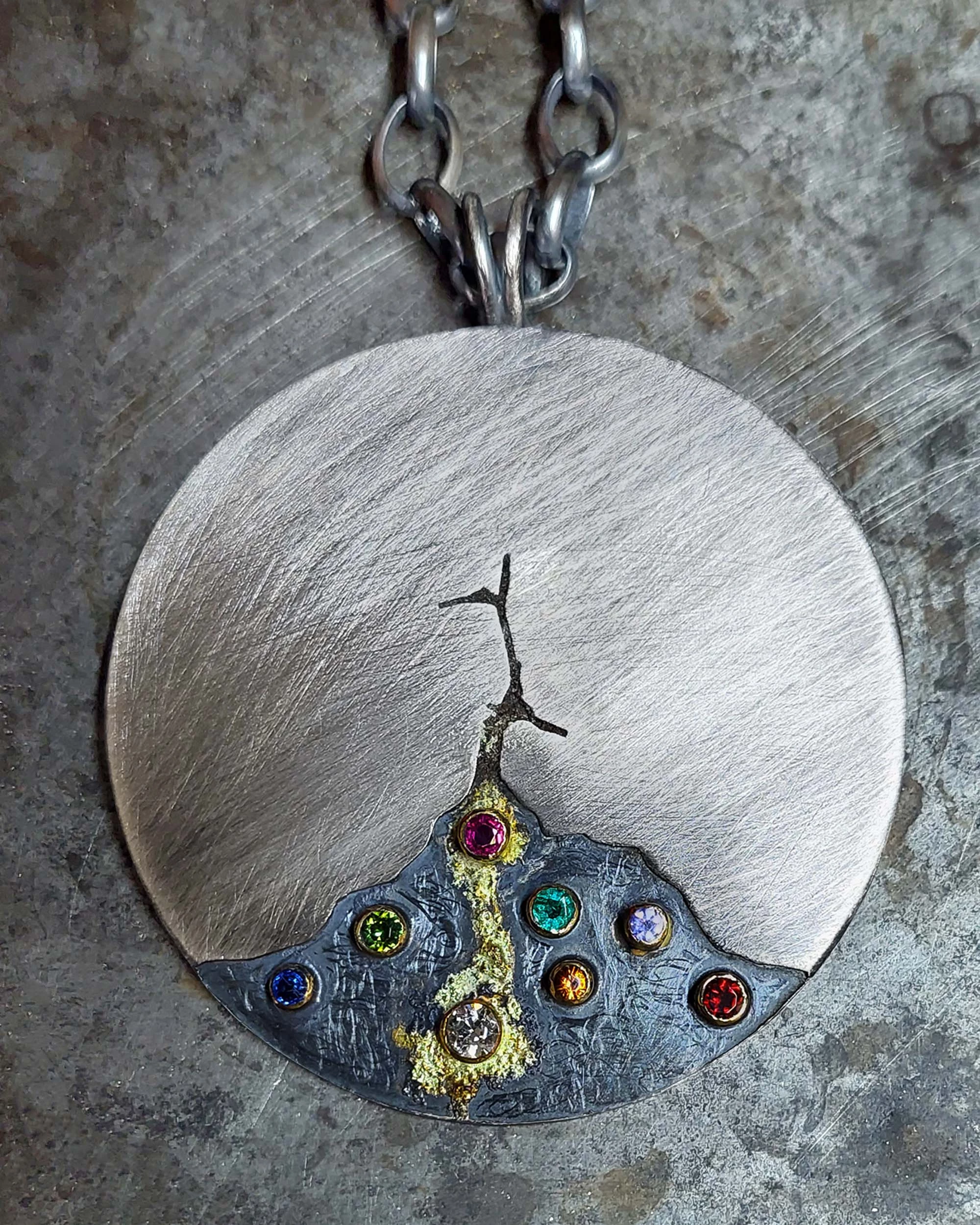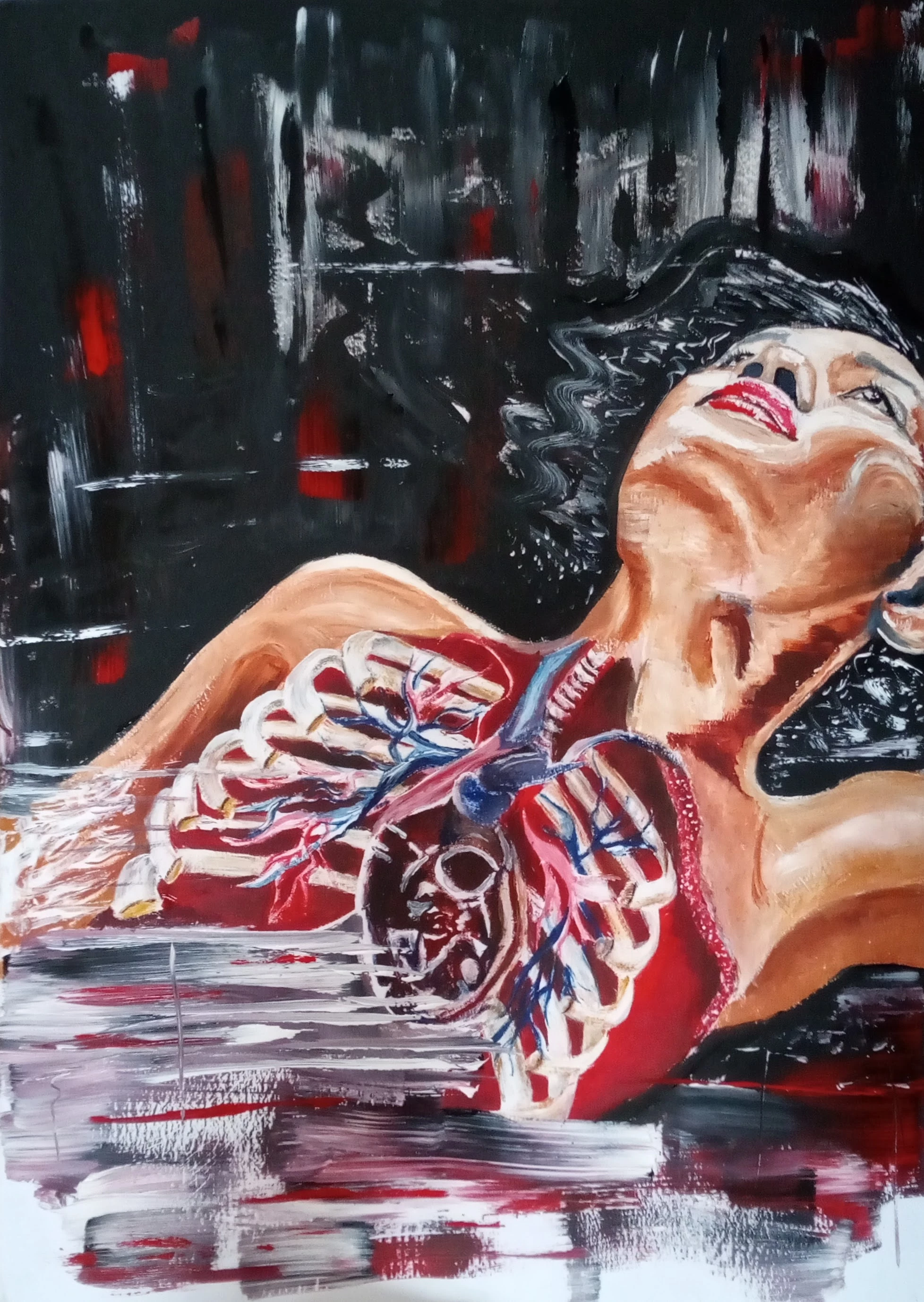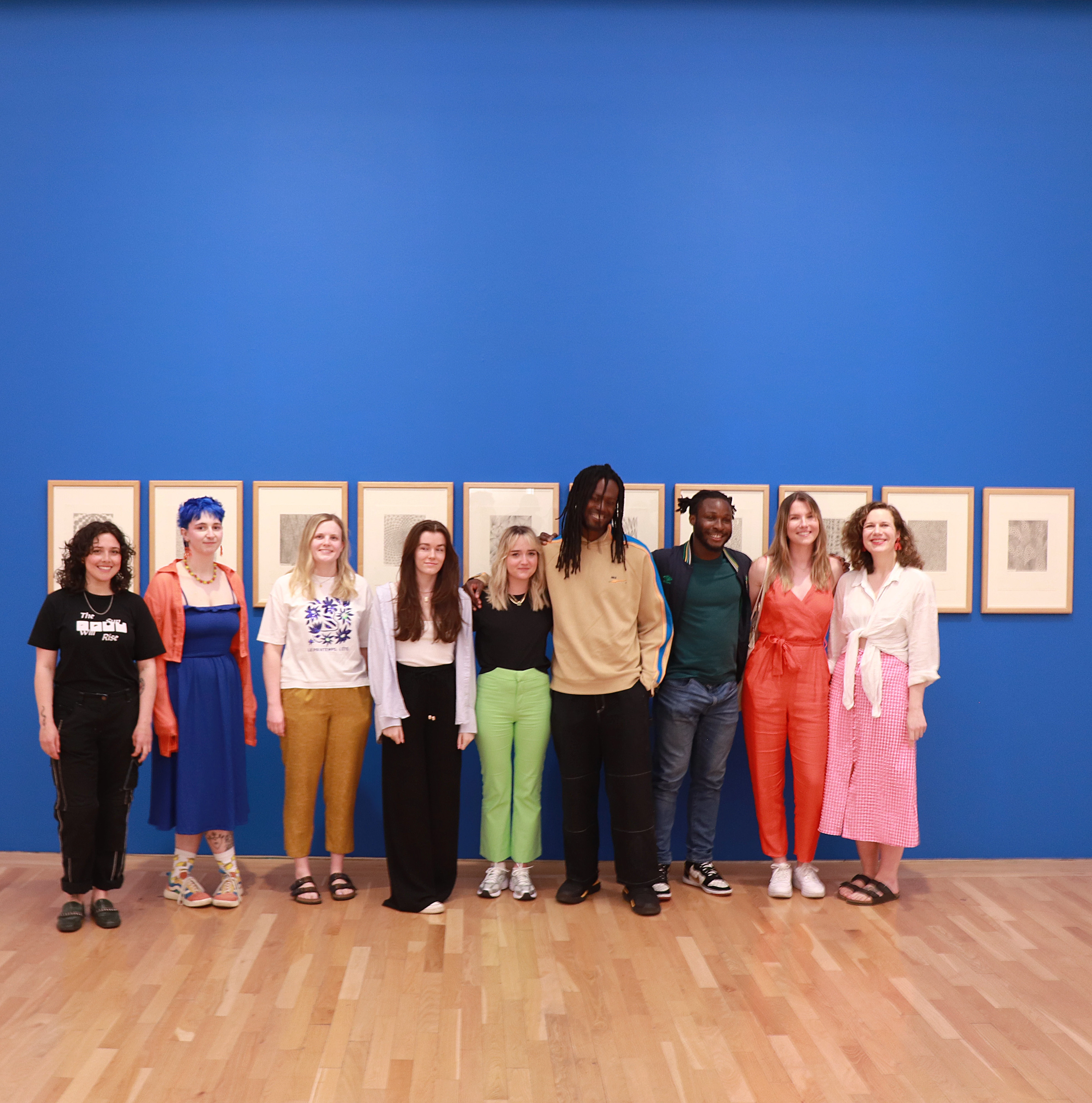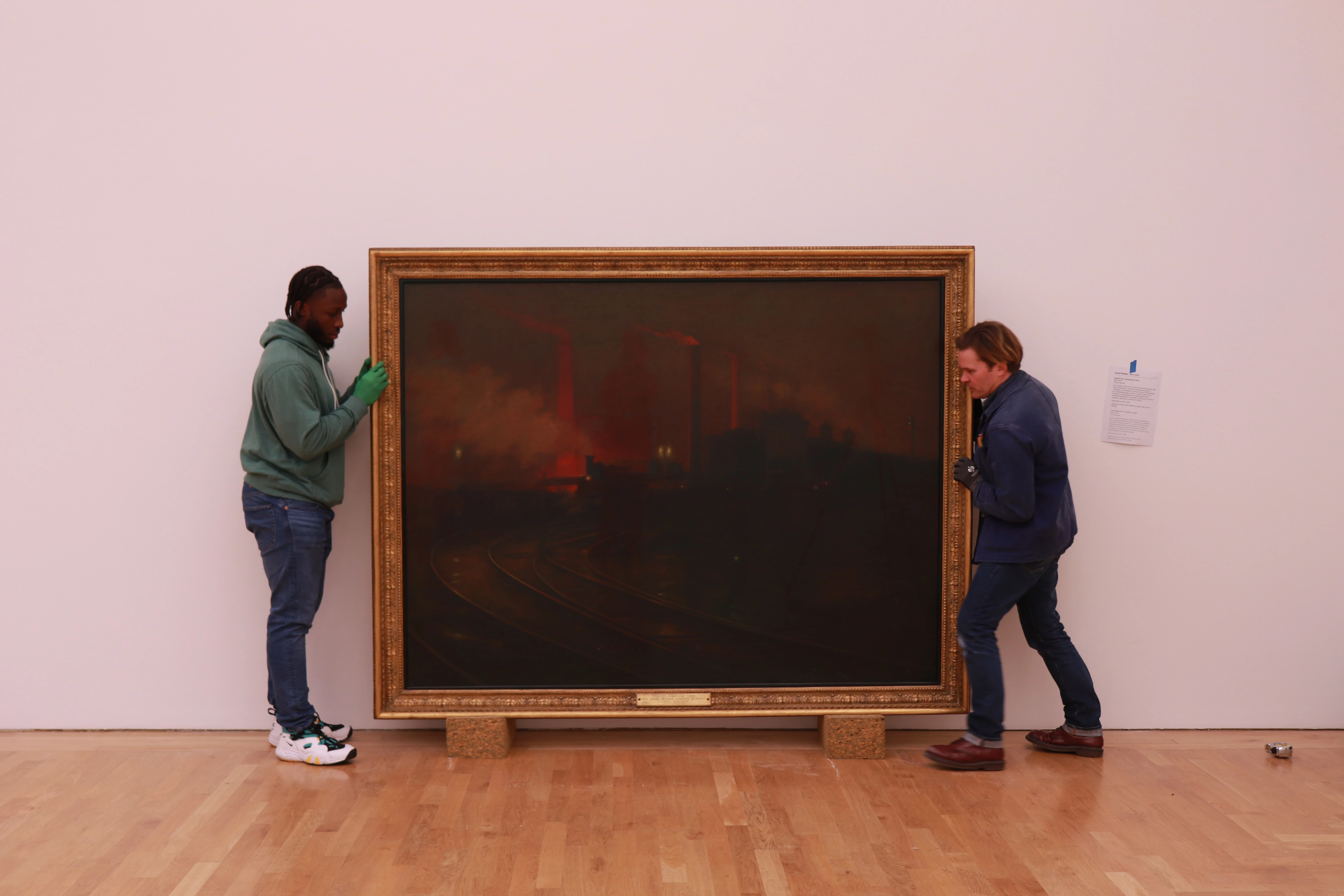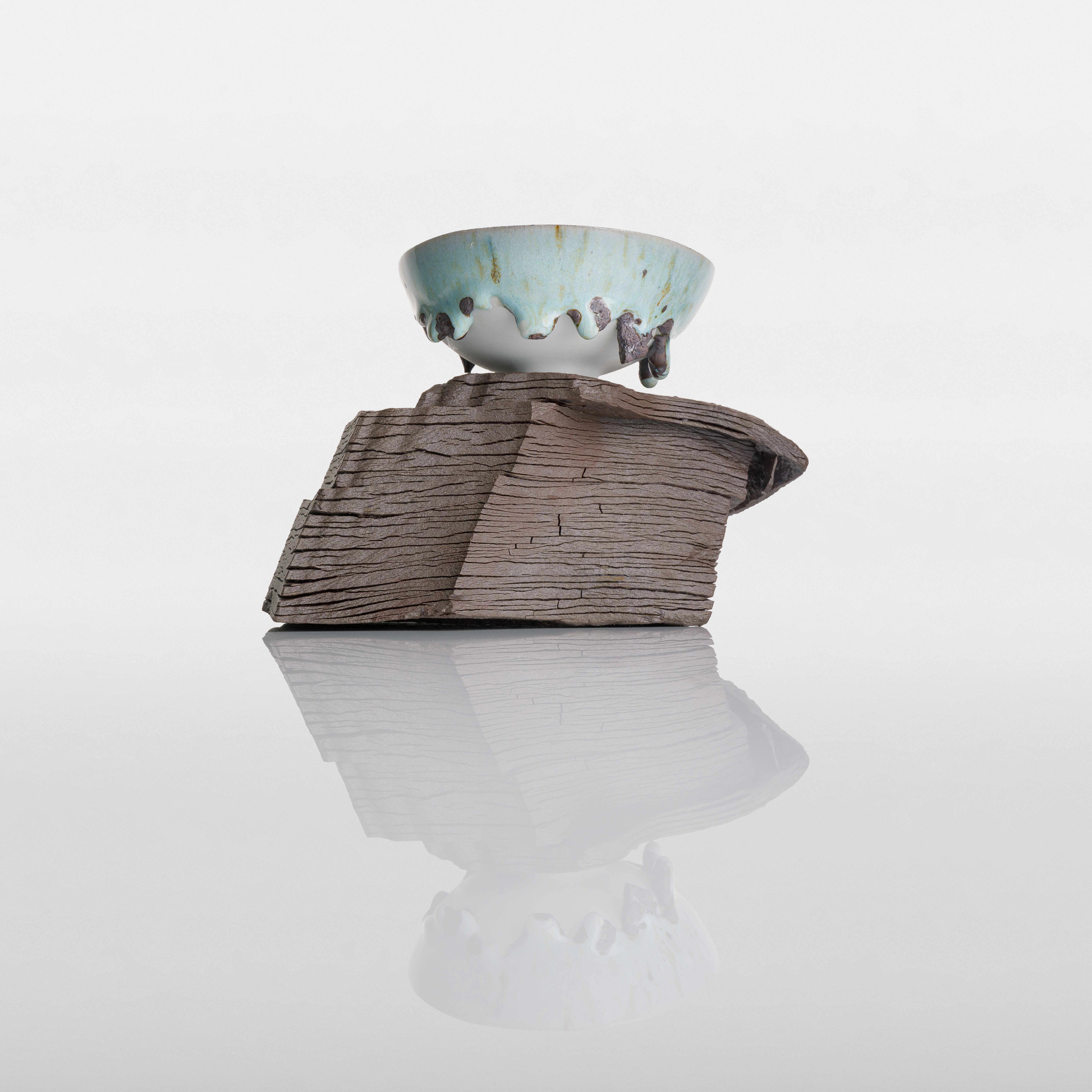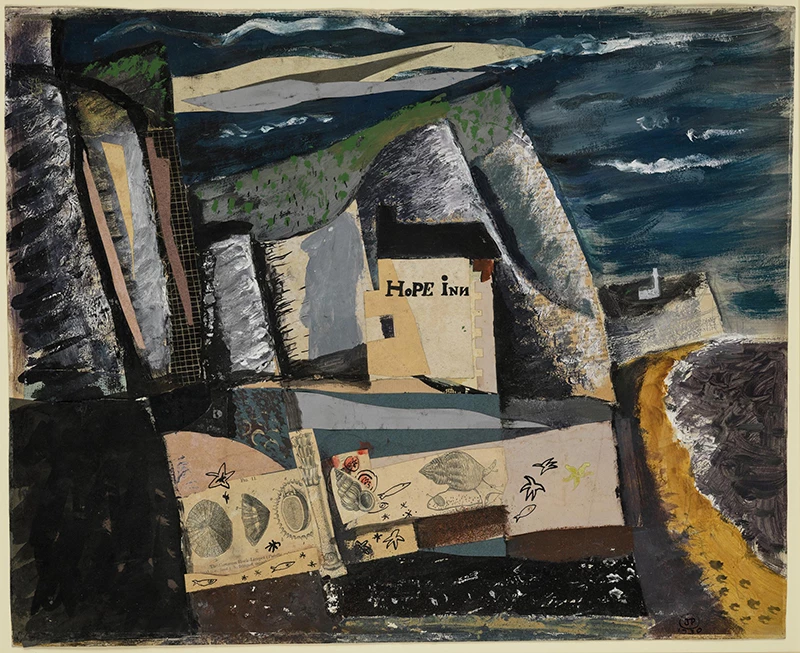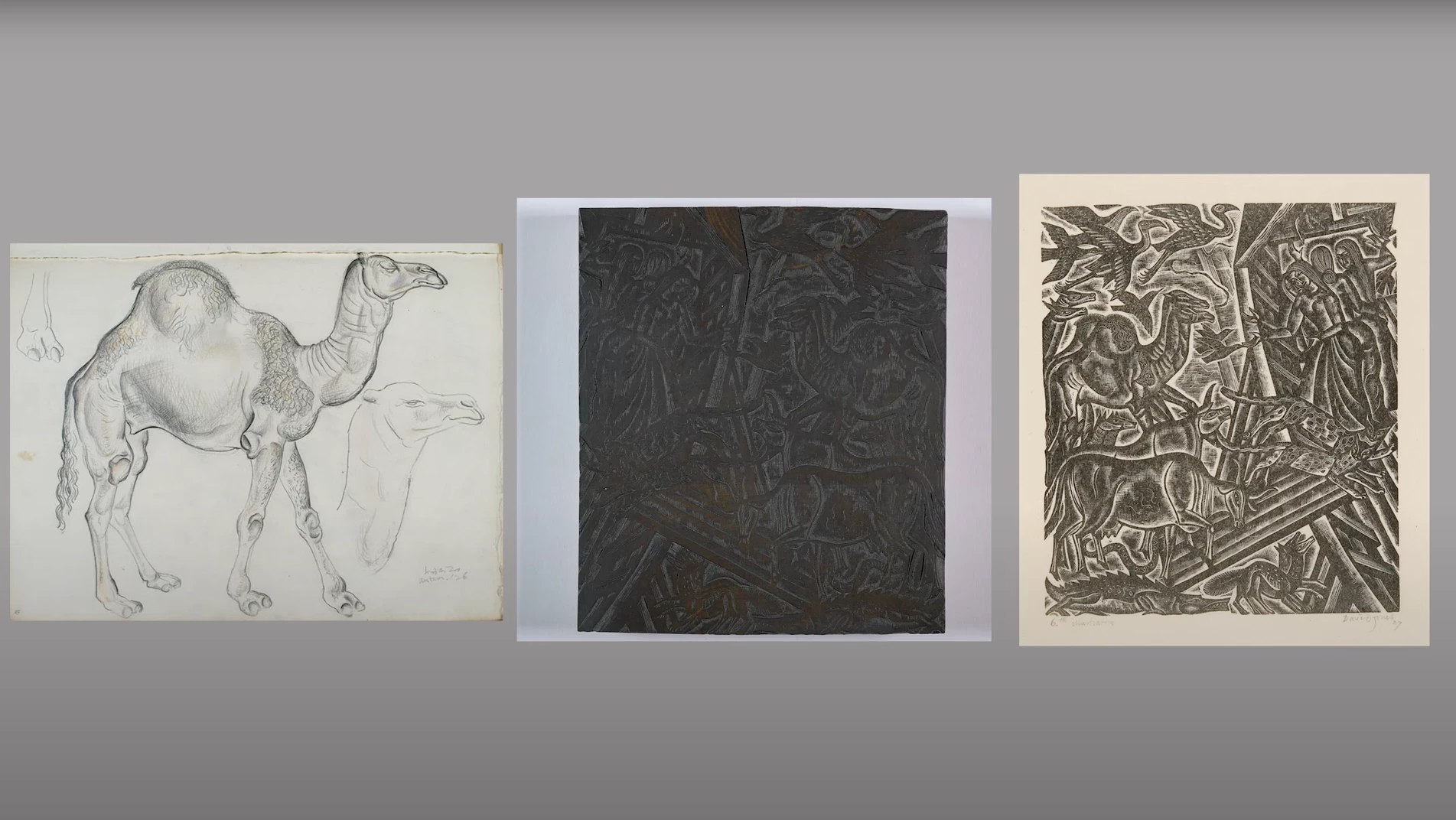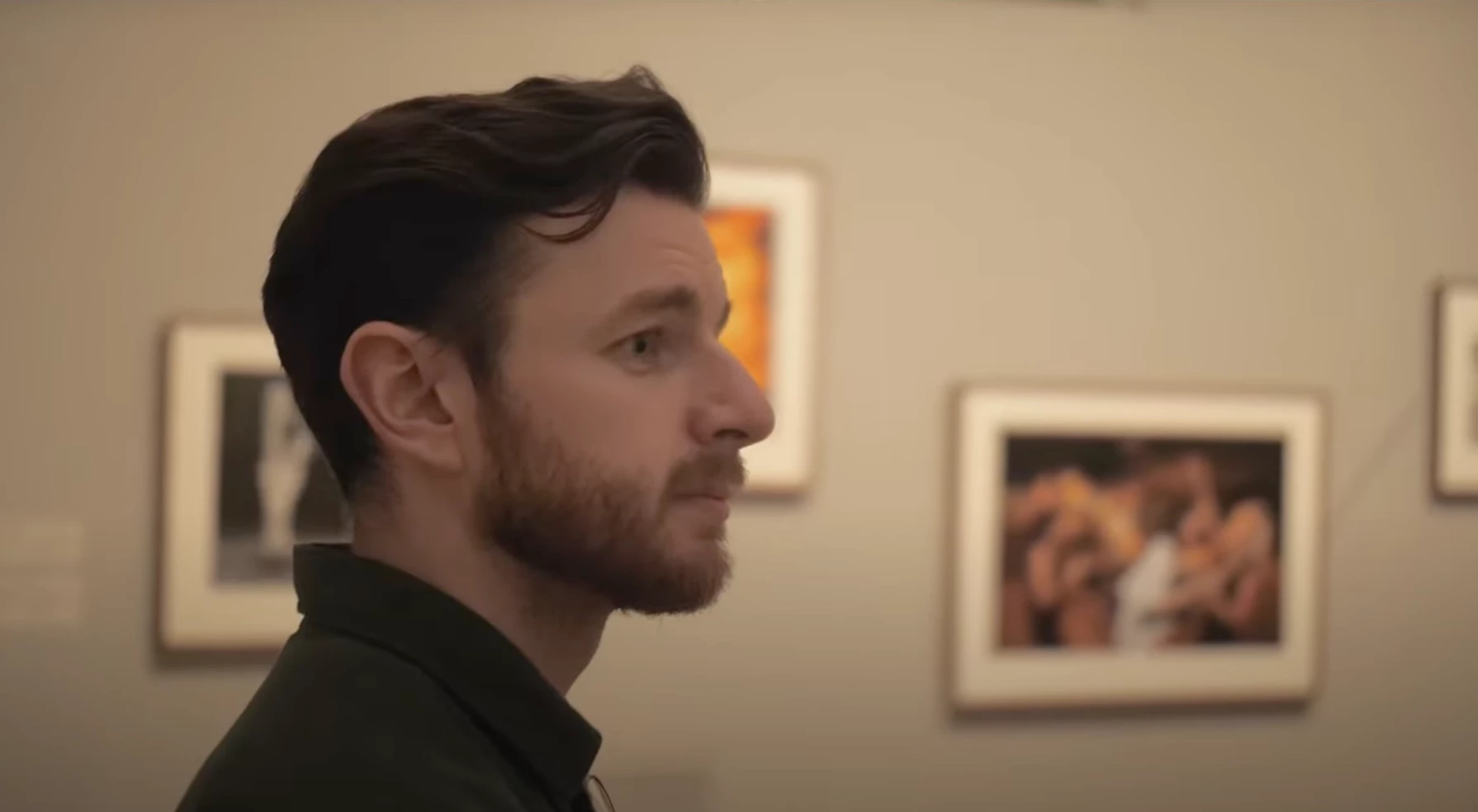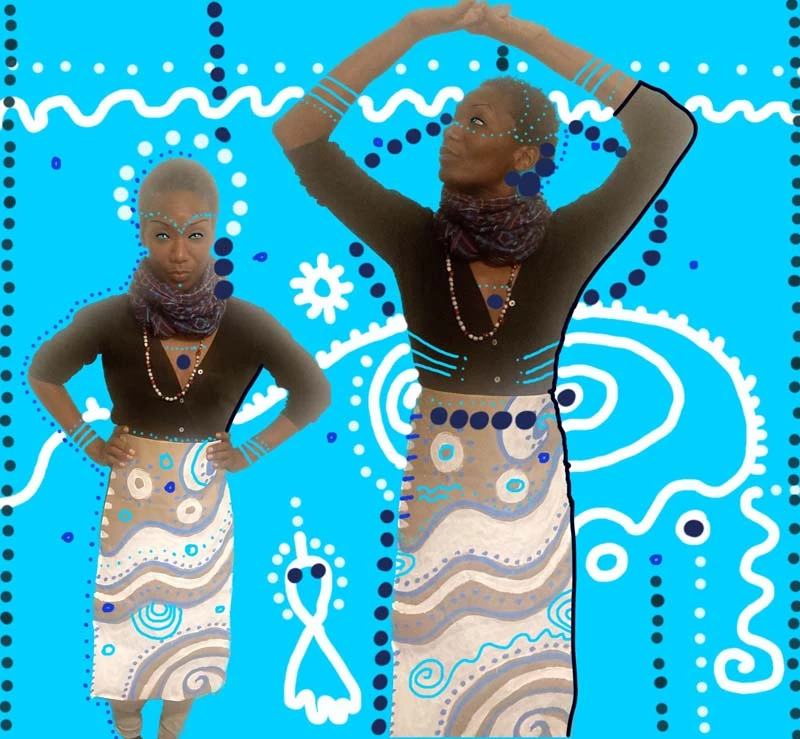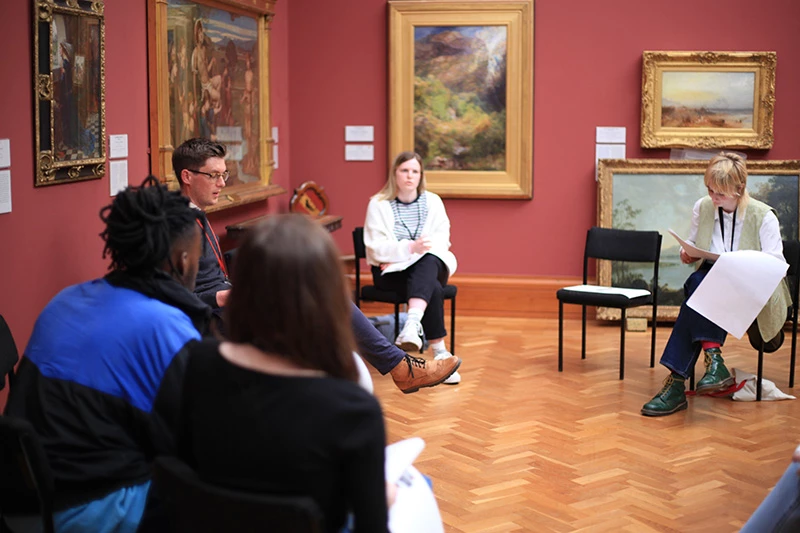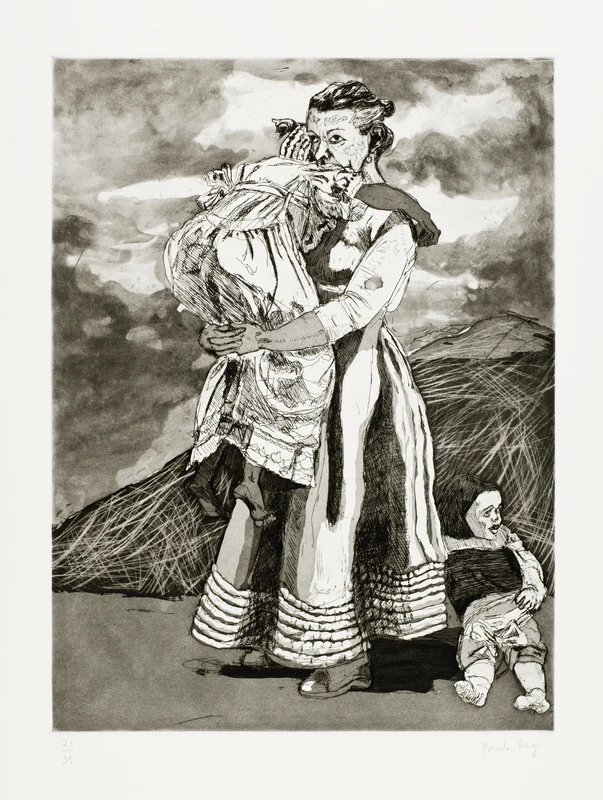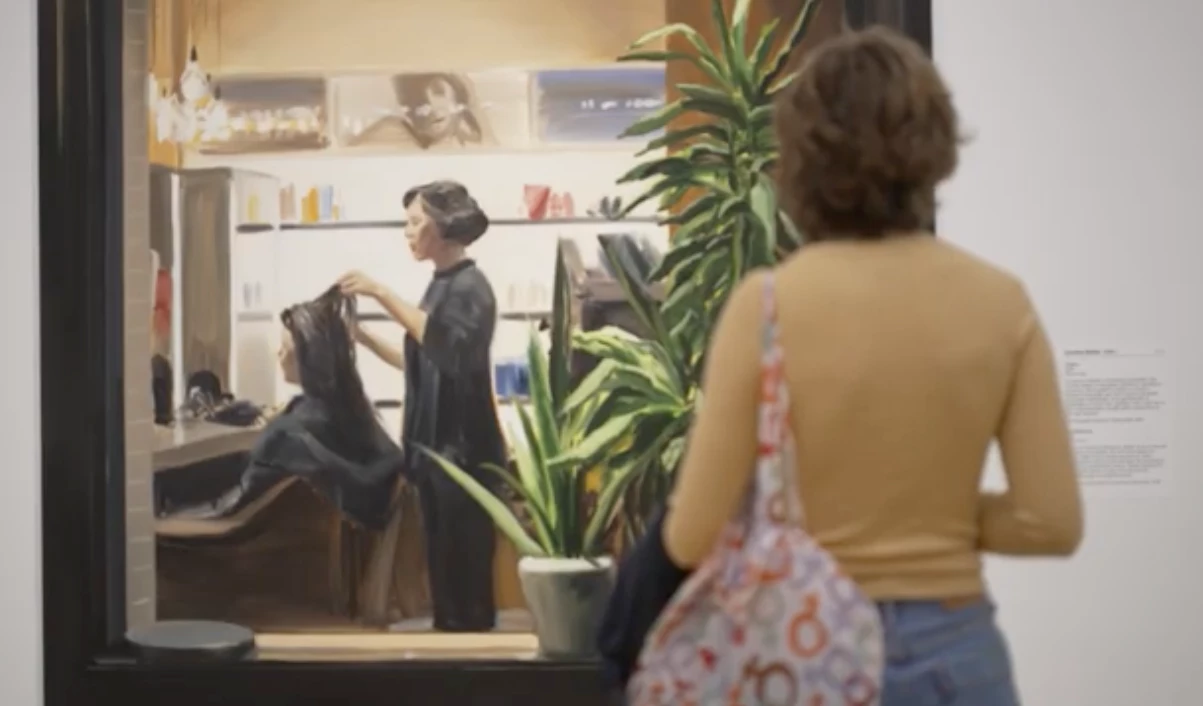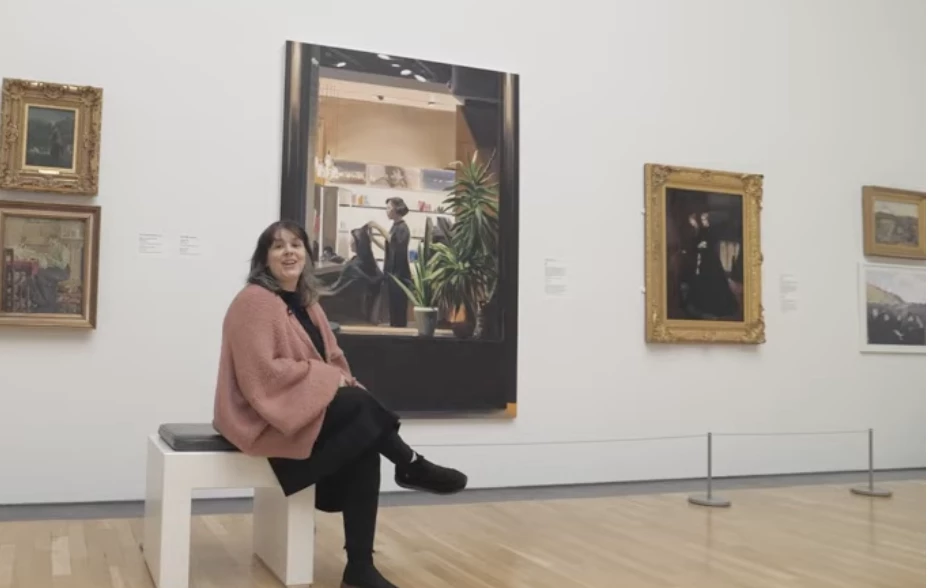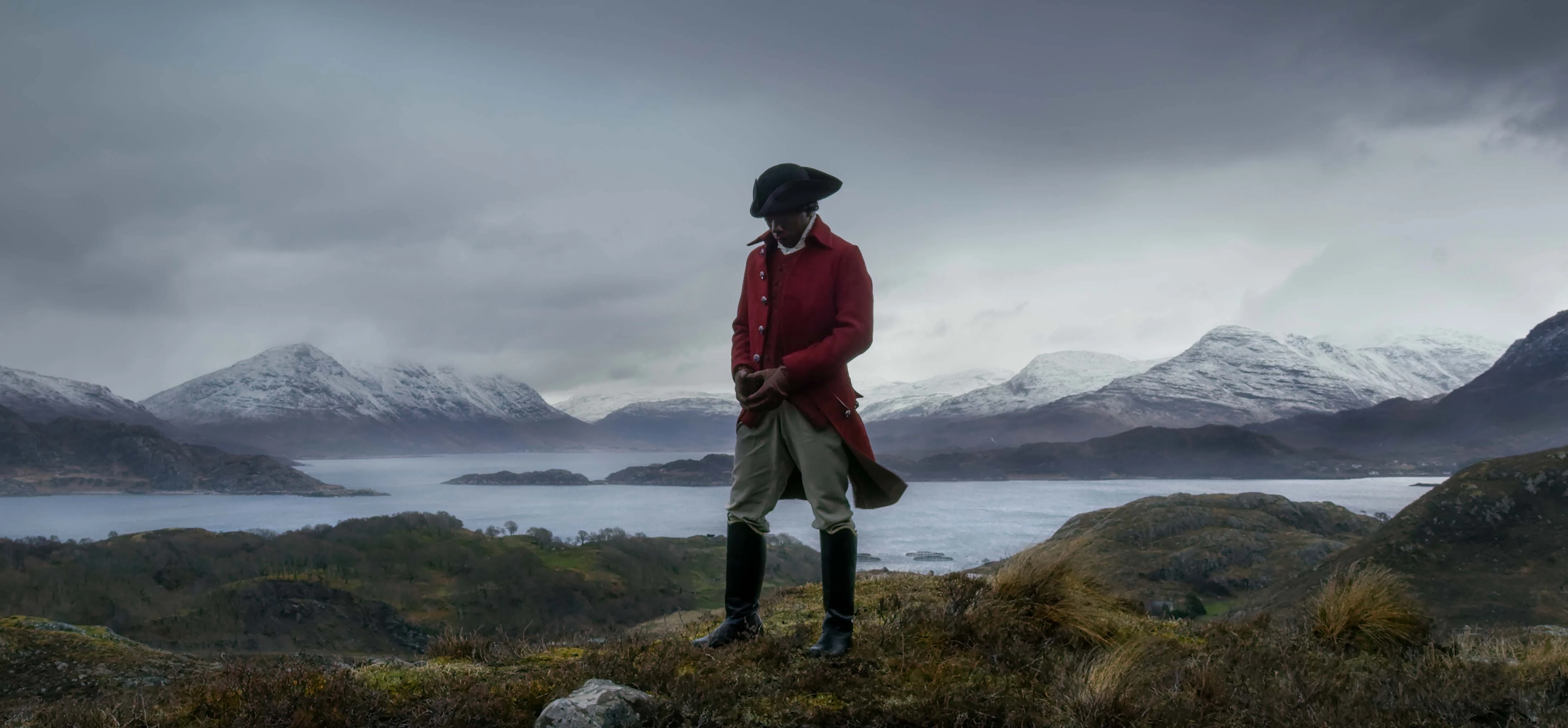As the COVID-19 pandemic worsened over the winter of 2020, and the pressure on NHS staff increased, Amgueddfa Cymru wanted to use the national art collection in hospitals and care settings to provide solace for staff and patients.
As part of Celf ar y Cyd, a suite of projects launched in 2020, we worked with health boards across Wales on a project called Art in Hospitals. One of the recent health boards we worked with was Aneurin Bevan University Health Board. We wanted to give NHS staff the chance to make art part of their working day, and to decide for themselves how art can be incorporated into their work environment.
Below are the artworks chosen by the staff who work on the various medical care wards, and reproductions of these are now up on the walls for both staff and patients to enjoy. Take a look – which artworks appeal to you?

A man in a dai cap is walking a dog up a steep hill in Tylorstown, Rhondda. The dog is panting and straining at the lead, eager to get ahead. Two other people follow behind. From here we can see right across the valley. Rows of terraced houses, railway tracks, and industrial buildings snake along the bottom, following the gentle curve of the mountain.
This photograph was taken by David Hurn in 1971. David Hurn is one of the most famous documentary photographers in Britain today. He spent a lot of his career documenting everyday life in Wales.

It’s a bit like doing the conga, but in a pool! This photograph shows an early morning water exercise class in a swimming pool in Arizona (US). Groups of people form human chains, their hands on each other’s shoulders, the water swirling around them as they move in circles.
The photograph was taken by David Hurn in 2002. David Hurn travelled to Arizona many times. He described it as ‘the most right-wing state in America, plus it is the driest state. The exact opposite of my home country Wales.’

It’s the summer of 1977 and a group of children are having a wheelbarrow race on the grass outside Tintern Abbey. This sports day was held to mark the Queen’s silver jubilee, in June. Maybe they were there to celebrate the royal family, or perhaps just to have a day of fun with friends – it doesn’t really matter. We can sense the children’s bubbling excitement in this photograph.
David Hurn is a documentary photographer from Wales. He is famous for his photographs of daily life – ordinary people doing ordinary things.
In this lush green landscape near Penegoes, two figures are crouched by a river, fishing. But you might not notice them at first. The artist is much more interested in showing us the beauty of the leafy green trees, and of the waterfall cascading down a steep cliff. This is a celebration of nature in abundance. Penegoes is a village near Machynlleth, in Powys.
We don’t know who painted this picture but at one point it was thought to be by Richard Wilson, a famous Welsh artist who was born and brought up at Penegoes in the 18th century.
It’s a crisp, fresh morning on the beach at Llangrannog. The sea is choppy: foam-topped waves roll in and break against the coast. But people are still out, paddling in the sea and splashing in rockpools.
This was painted around 1917, by the artist Christopher Williams. He was born in Maesteg and became one of the best-known Welsh artists of his time. Williams loved the Welsh coast and painted it many times on his travels between Llangrannog and the Llŷn Peninsula.

Two colourful jay birds are perched on a branch. One peers down into the foliage, full of bird-like curiosity. Behind them is a landscape of rolling hills. On top of that is the stone tower of a church, set against a cloud-filled sky.
The painting is set in Stoke-by-Nayland, England, where the artist Cedric Morris lived at the time, though he was originally from Sketty, Swansea. He painted this in 1940. Cedric Morris was deeply interested in birds and nature. In his later life he drew attention to the effects of pesticides on bird populations.
This painting gives us a bird’s eye view of the Glaslyn Valley, in north Wales. A river meanders through the mountains, inviting us to follow as it curves its way through the valley into the distant blue. The fields around the river are flat, with rocks and mountains rising in mounds either side. The colours are soft and dreamlike. The Glaslyn Valley is one of the most beautiful areas of Wales, rich in wildlife.
This was painted by Vivian Pitchforth about 1940. Pitchforth was an official war artist in Britain in the Second World War.
This painting is set in a small woody grove in Carmarthenshire, surrounded and sheltered by trees. Dappled light falls through the leaves, illuminating the grass and wildflowers on the woodland floor. The largest tree on the left of the painting is coated in soft green moss and rises up majestically from the ground.
William Wilkins was brought up in south Wales and has a studio in Carmarthenshire. He paints using a technique called pointillism, which means painting with small dots of colour. This technique can be seen when we look at this painting up close.
This is a view of Castle Beach in Tenby, one of the most popular beaches in Wales. This was painted by Isambard Owen, in the late 19th century. Tenby has changed a lot in that time, but the beach is still recognisable today – though it would be unusual to see it this empty on such a bright day!
Isambard Owen was born in Chepstow, Monmouthshire, and became an important figure in Welsh cultural life. His father was chief engineer of the Great Western Railway, responsible for building the South Wales Railway.
Sunlight shimmers on the surface of the river Llugwy in this beautiful Snowdonia landscape. The river is surrounded by sloping hills and thick green woodland. Look closely and you’ll see some people sitting on one side of the riverbank enjoying the scenery, and a person with a fishing rod on the opposite bank.
This was painted by the artist Benjamin Williams Leader in the 19th century. He first visited Snowdonia in 1859, and loved the landscape so much that he returned many times. His works are highly detailed and show a deep love and respect for nature.
The Conwy Valley sweeps out before us in this breathtaking bird’s-eye-view landscape by David Woodford. The mountains stretch out before us for miles and miles, gradually fading into a pale blue mist in the far distance. It’s a cloudy day, with sunlight breaking through the heavy grey clouds. Perhaps it has just rained or is about to. The sunlight reflects off the surface of a river, meandering through the mountains.
David Woodford’s paintings capture the wild places of Snowdonia, in all their different moods and weather conditions.
Forest Cove, now known as Aberfforest, lies to the east of Dinas head, the rocky peninsula which forms the eastern end of Fishguard Bay. In this tranquil scene, the Cove is quiet and warm, with water gently lapping on the golden sand. A few sailboats bob along the shoreline in the distance.
The artist John Brett devoted the later years of his life to touring and painting the British coastline. He wrote that Pembrokeshire was the ‘only one really satisfactory seaside place on the whole British coast’.
As the afternoon sun begins to set, dappled light dances on the surface of the Grand Canal in Venice, Italy. We are looking across the water to the Palazzo Dario, an elegant palace right on the riverbank. To get to the palace’s front door you must ride in a gondola, and we can see an empty one moored right outside – perhaps someone has just arrived or is about to leave.
In 1908, the artist Claude Monet visited Venice and was inspired by the city’s buildings, the changing light and the shimmering reflections in the water.
Paul Signac was a keen sailor who travelled the coast of France, making watercolours along the way. He liked to experiment with using small strokes of vivid colour in his harbour scenes and seascapes. In this painting, both the sea and sky include swathes of blue, pink, purple, yellow and orange as the bright sunset on the horizon is reflected in the waters below.
In this watercolour painting by J.M.W. Turner, a luminous rainbow cuts through the sky, lighting up a church tower in the middle of the landscape scene. Behind the golden rainbow, the sky is full of blue and pink fluffy clouds. It is unclear whether the repetitious shapes in the foreground represent a field of tall grass or the rhythmic motion of waves on a seashore. In many cultures across the world, rainbows are a symbol of hope for better times to come.
In this painting, we can see one of the mountains of Snowdonia depicted in vibrant blues and purples with fluffy lilac clouds in the sky overhead. There is not a person to be seen for miles in this wild and wonderful corner of Wales.
Christopher Williams, who was born in Maesteg, was one of Wales’s most important artists in his lifetime. He painted many landscape scenes across Wales and the wider world.
In this mountain scene, a favourite subject of the Welsh artist Christopher Williams, the landscape is bathed in strong golden light as the sun goes down at the end of the day. The craggy mountain peaks loom in the distance as a well-trodden path leads us off the left-hand edge of the painting, tempting us to come and explore their rocky terrain. This calm and serene scene perfectly captures the artist’s love for the beautiful and rugged landscapes of Wales.
Ongoing Projects
A QR code in the wards offers additional digital resources and information for staff to share with patients. It’s been great to work with the staff at Aneurin Bevan University Health Board to facilitate this project. Since launching our first Art in Hospitals project in 2020, we have continued to work closely with health boards all over Wales. The next project to launch from Art in Hospitals will be with Powys Teaching Health Board, developing Palliative Care Packs for patients and their families.
Funding and Support
Amgueddfa Cymru support was made possible through Celf ar y Cyd. This is a series of visual arts projects in collaboration with Arts Council Wales with the support of the Welsh Government, which challenged us to share the national art collection in new and innovative ways during the pandemic. Other strands of the project include our online visual arts magazine, Cynfas, and the Celf 100 Art exhibition. Celf ar y Cyd is now an innovative new website and a core feature of the new National Contemporary Art Gallery for Wales. Follow us on Instagram @celfarycyd for regular updates and visit the website to explore the contemporary art collection at https://celfarycyd.wales.

